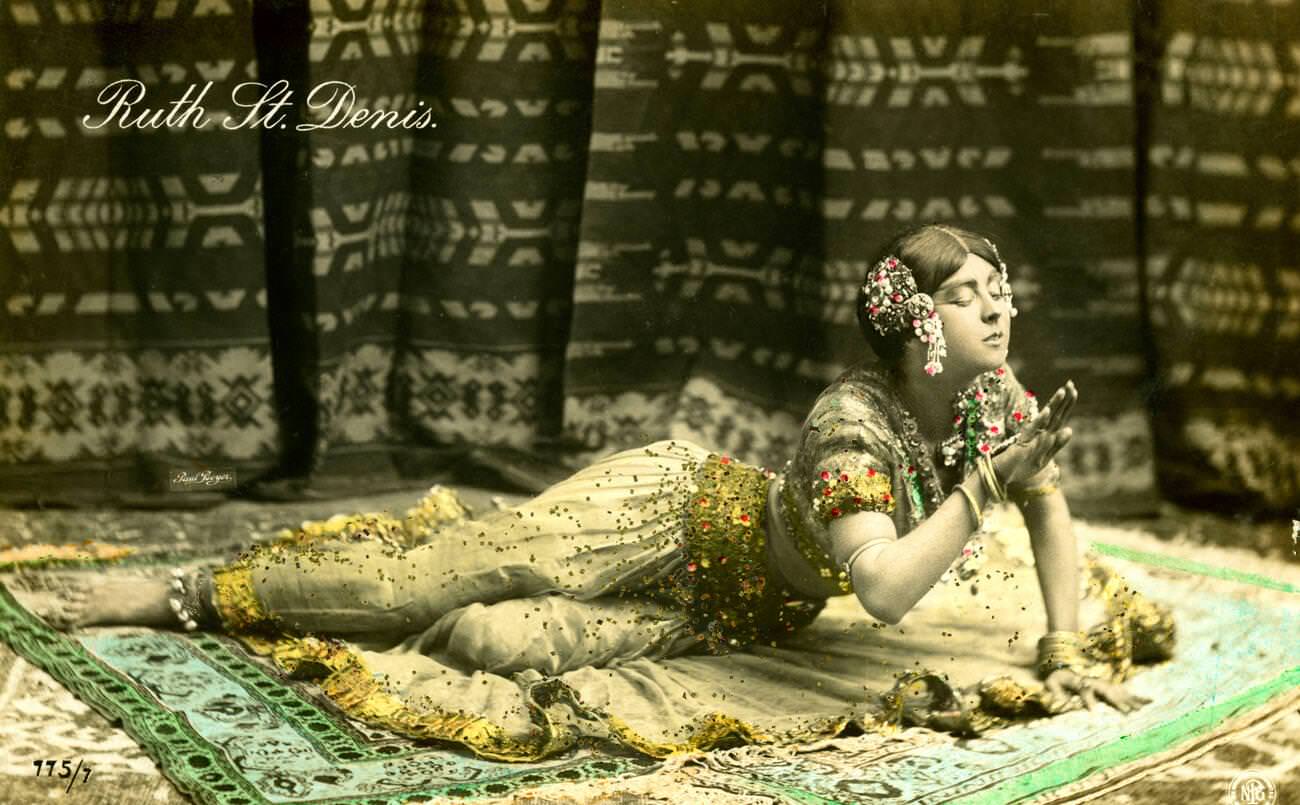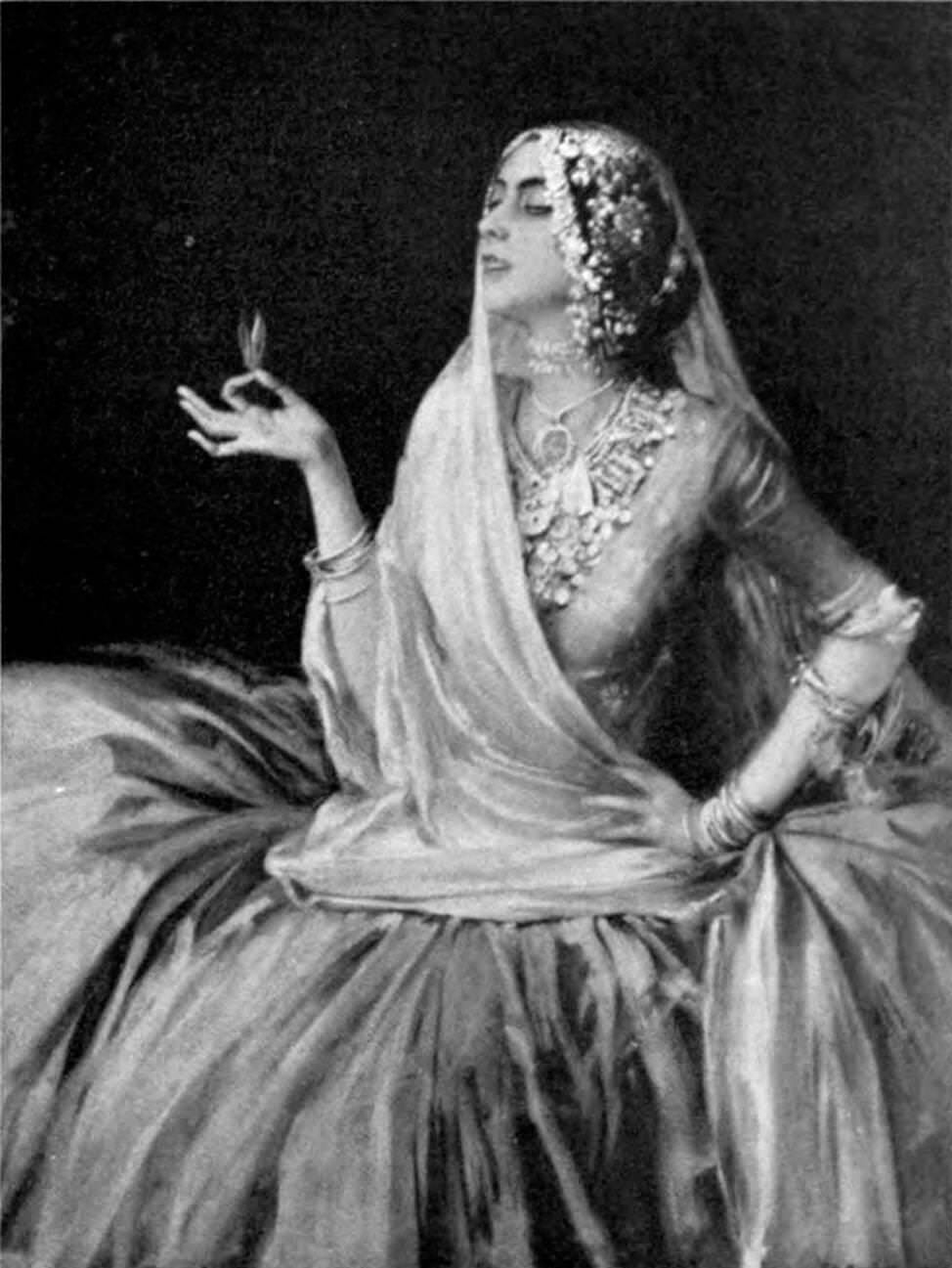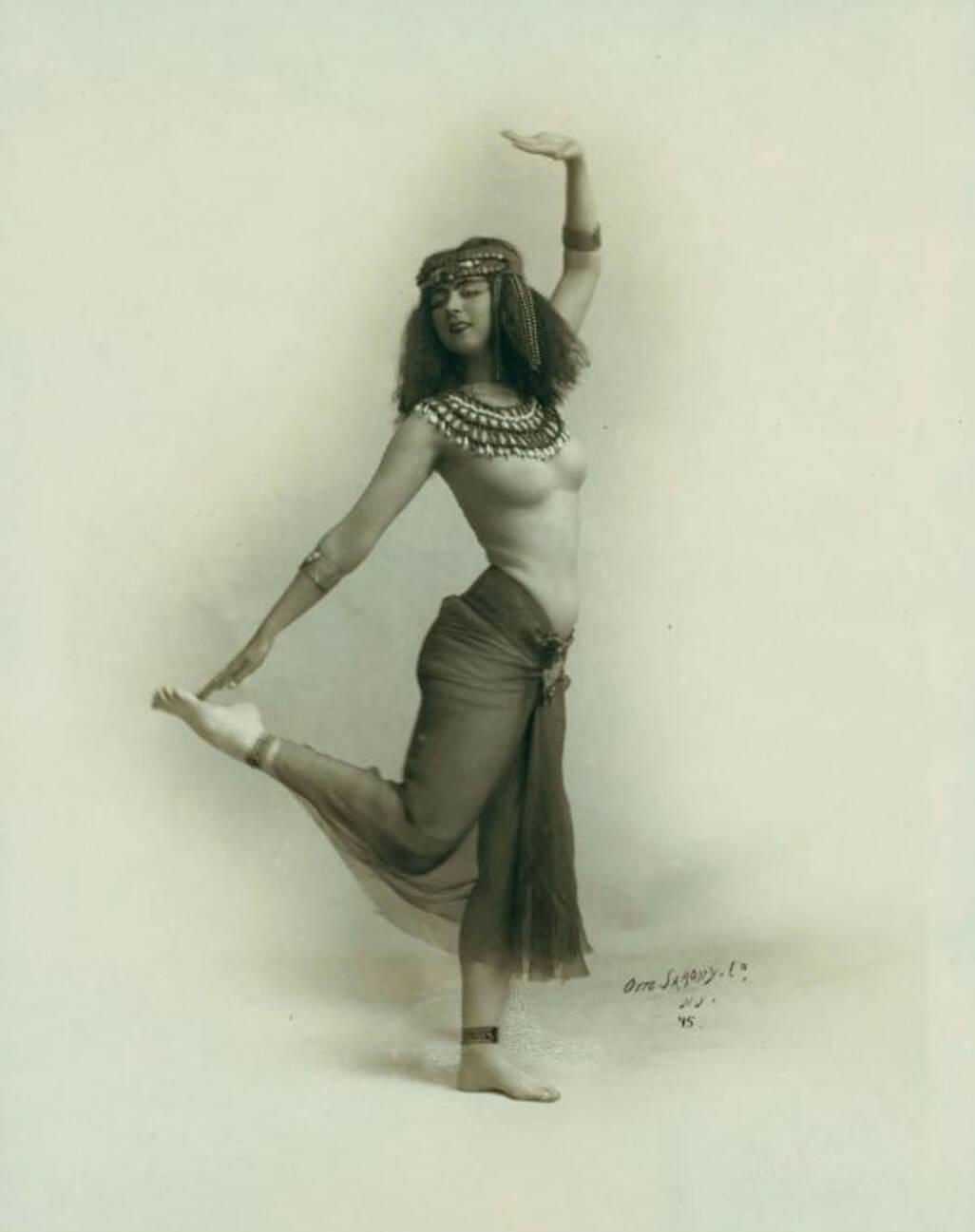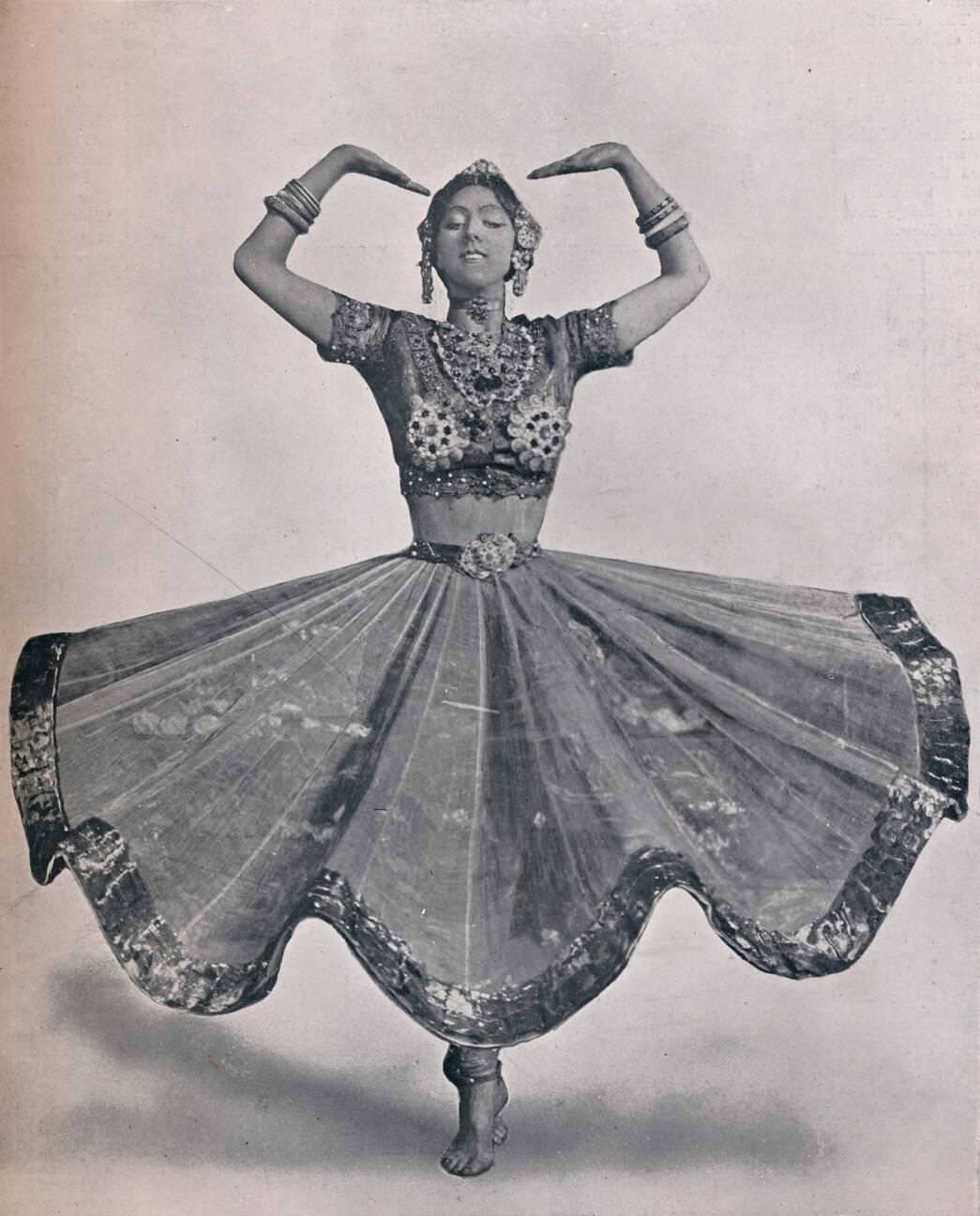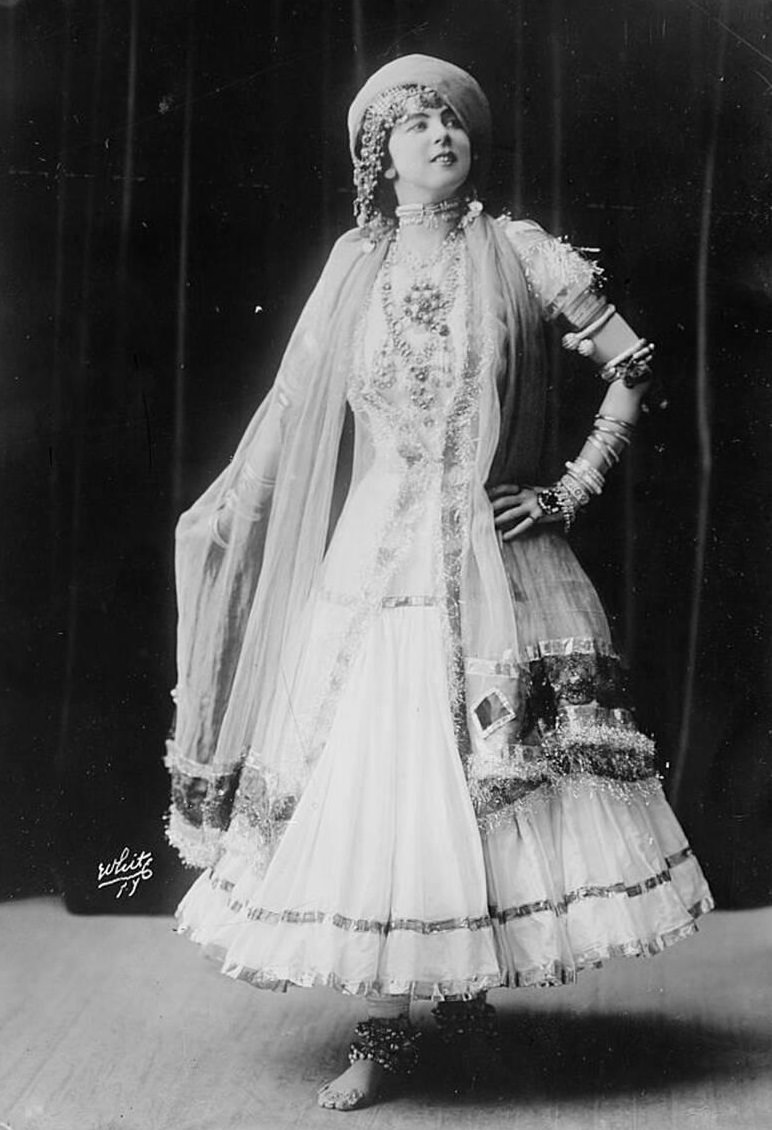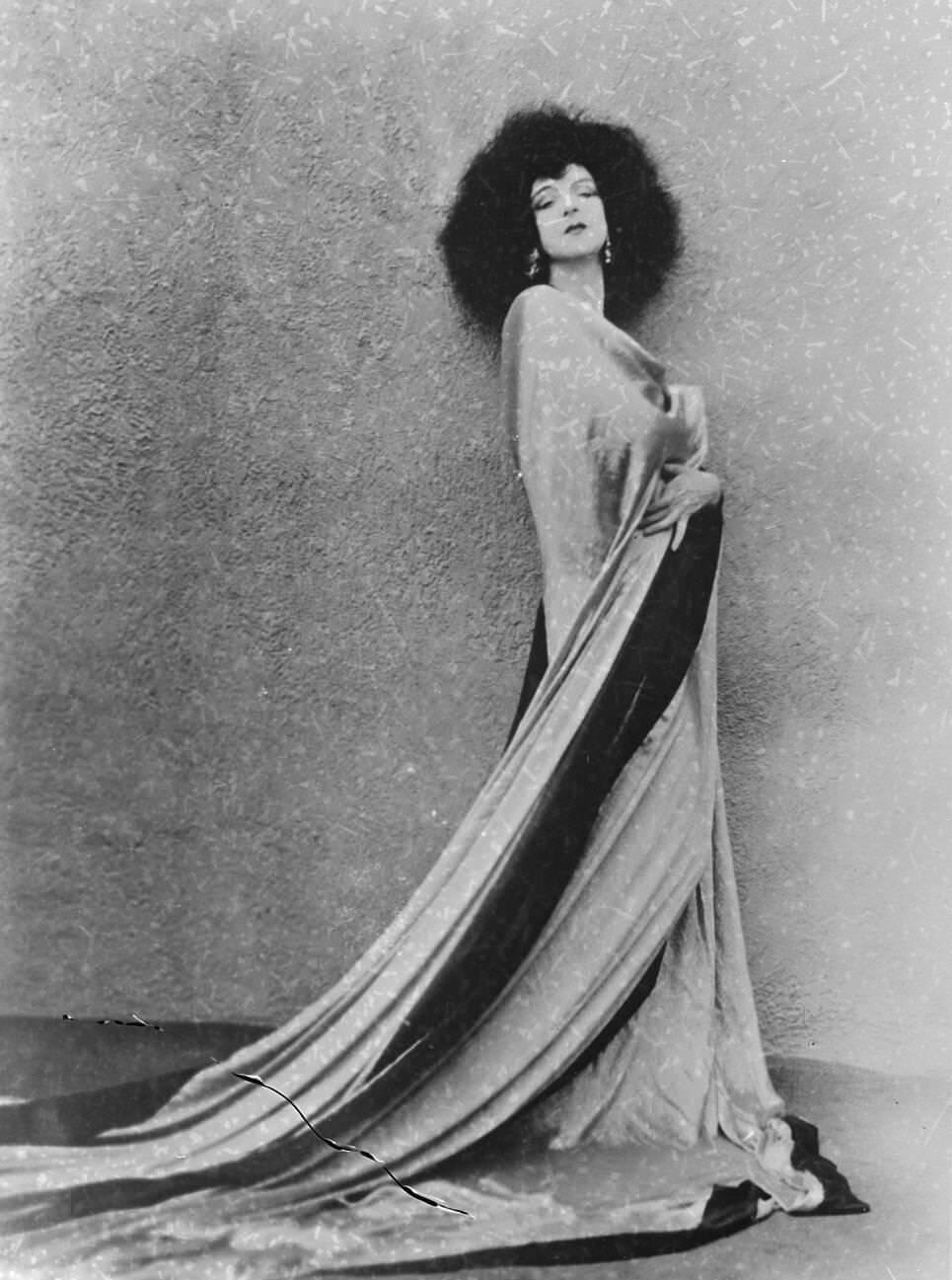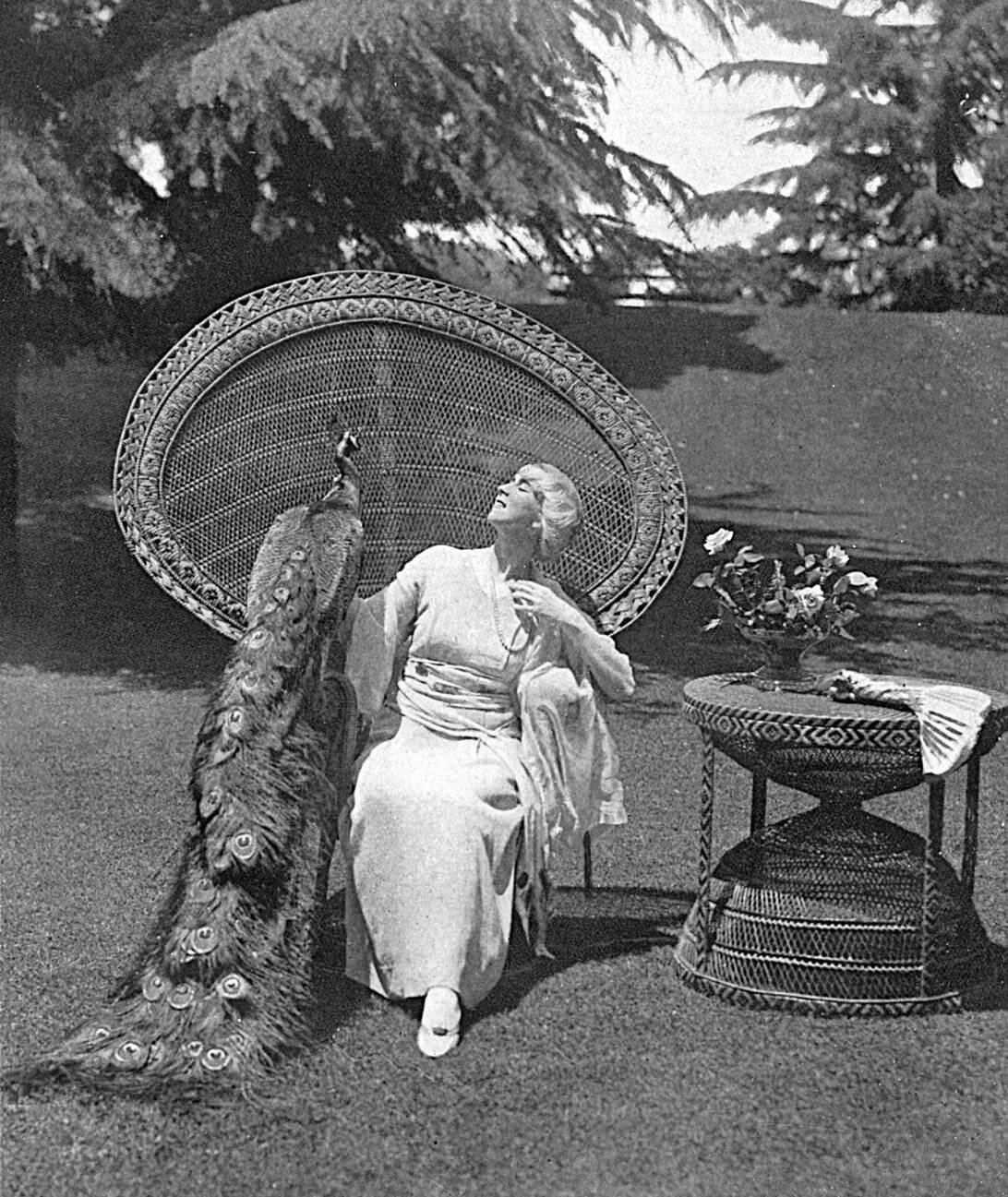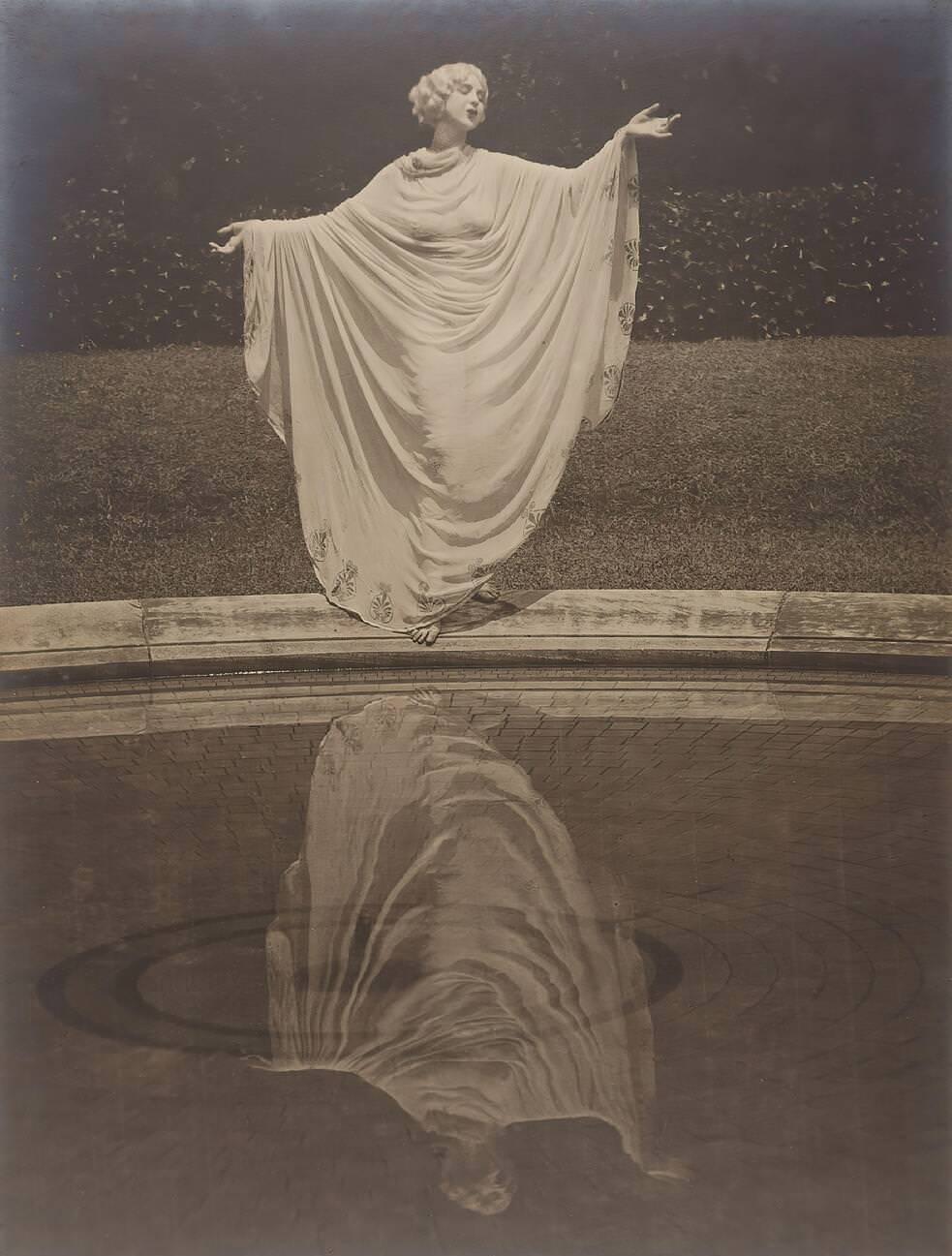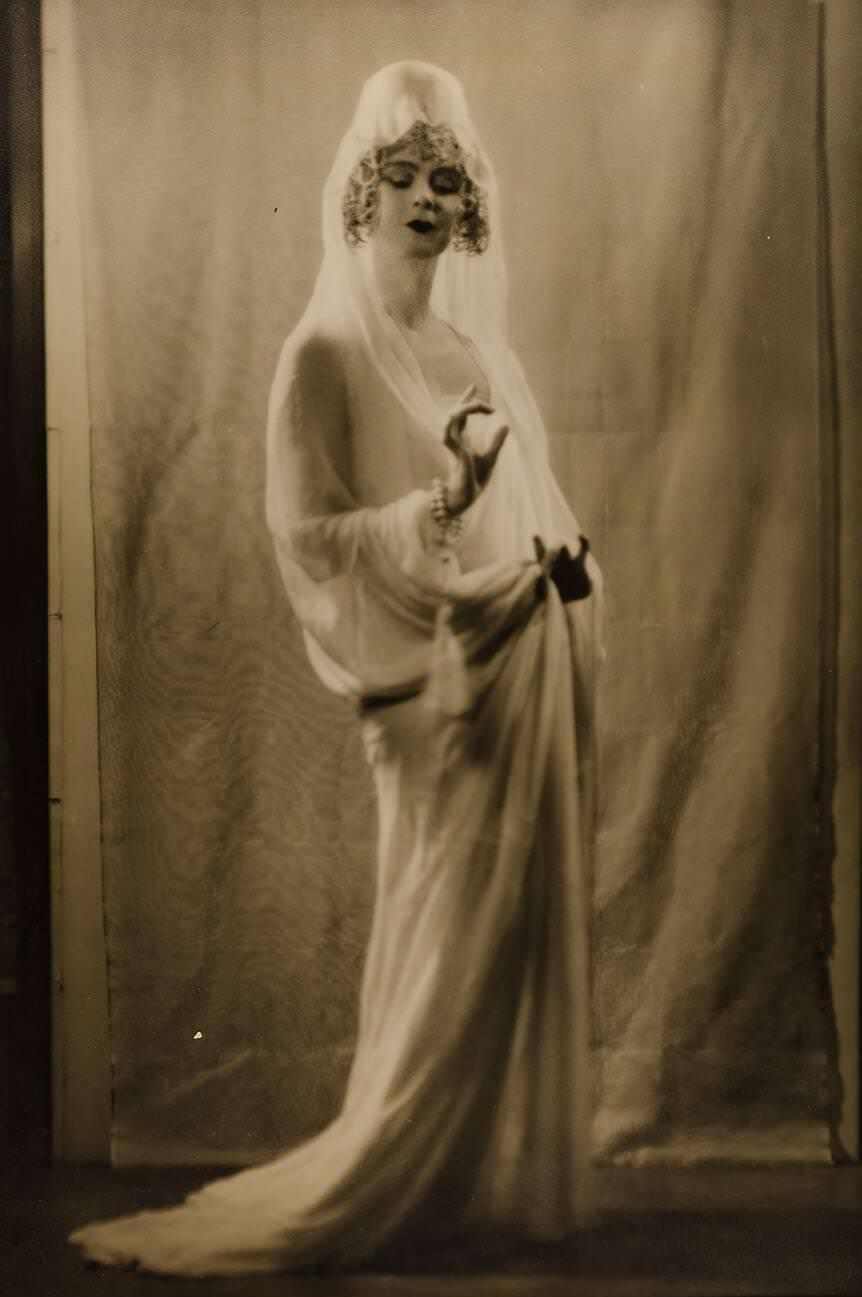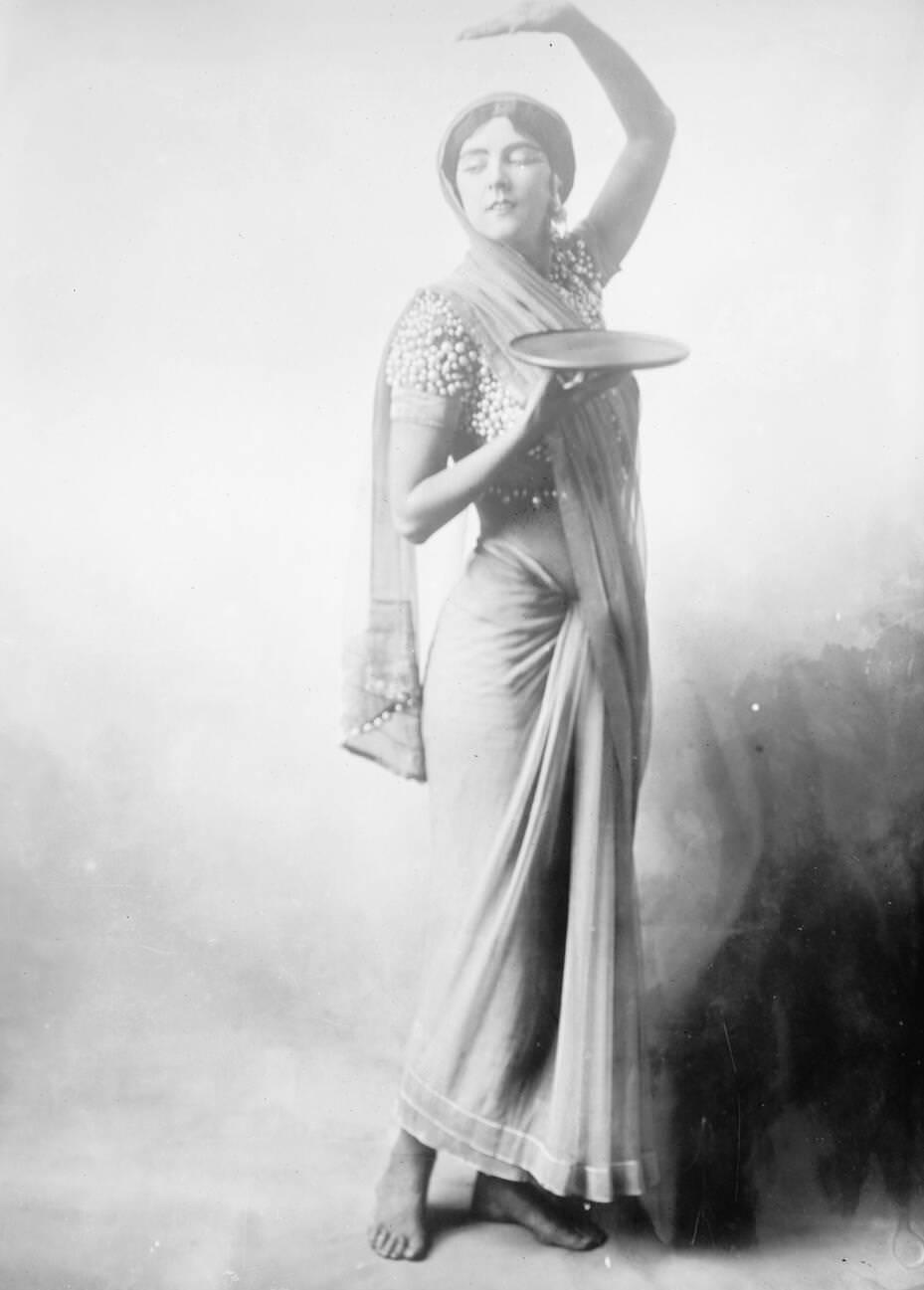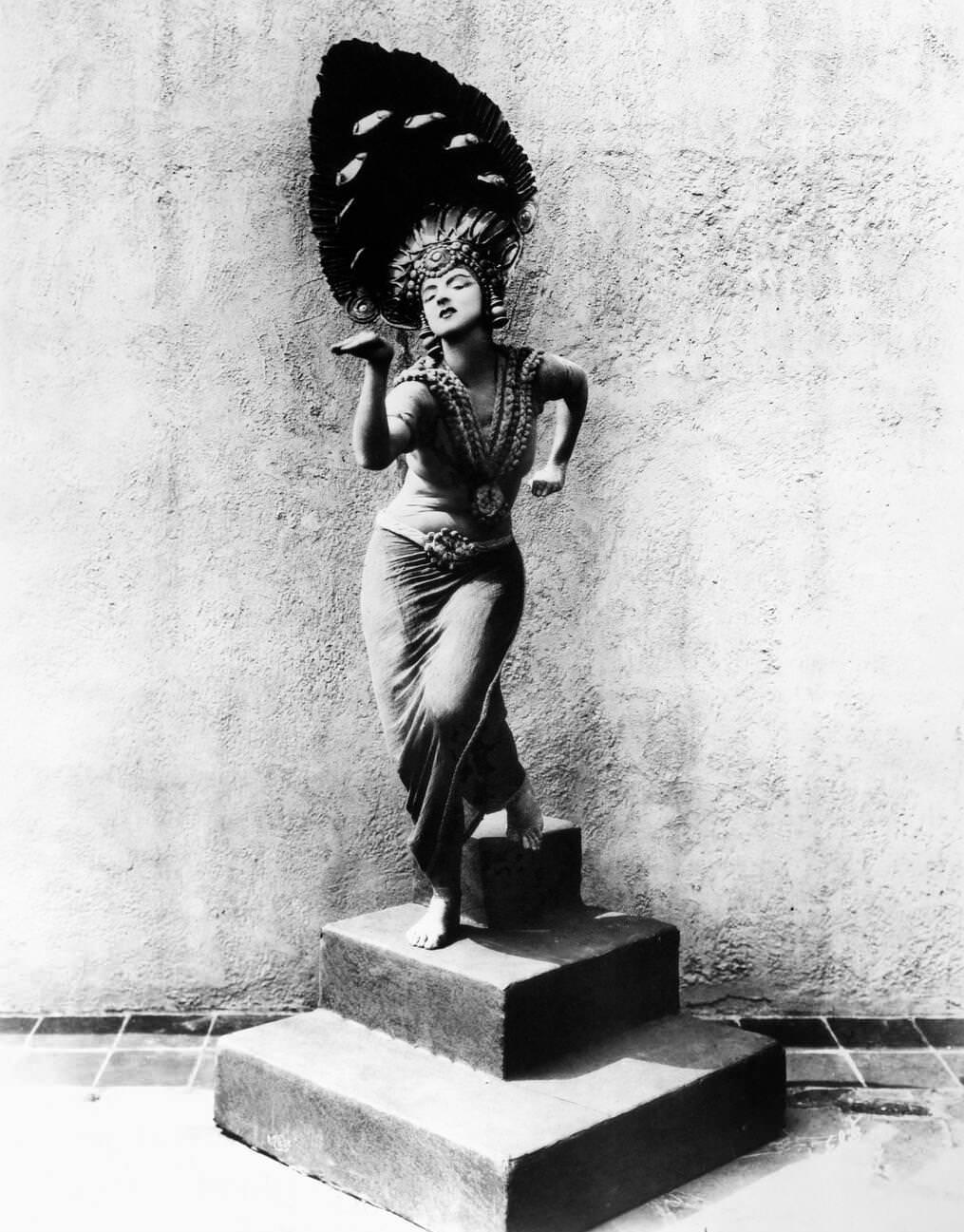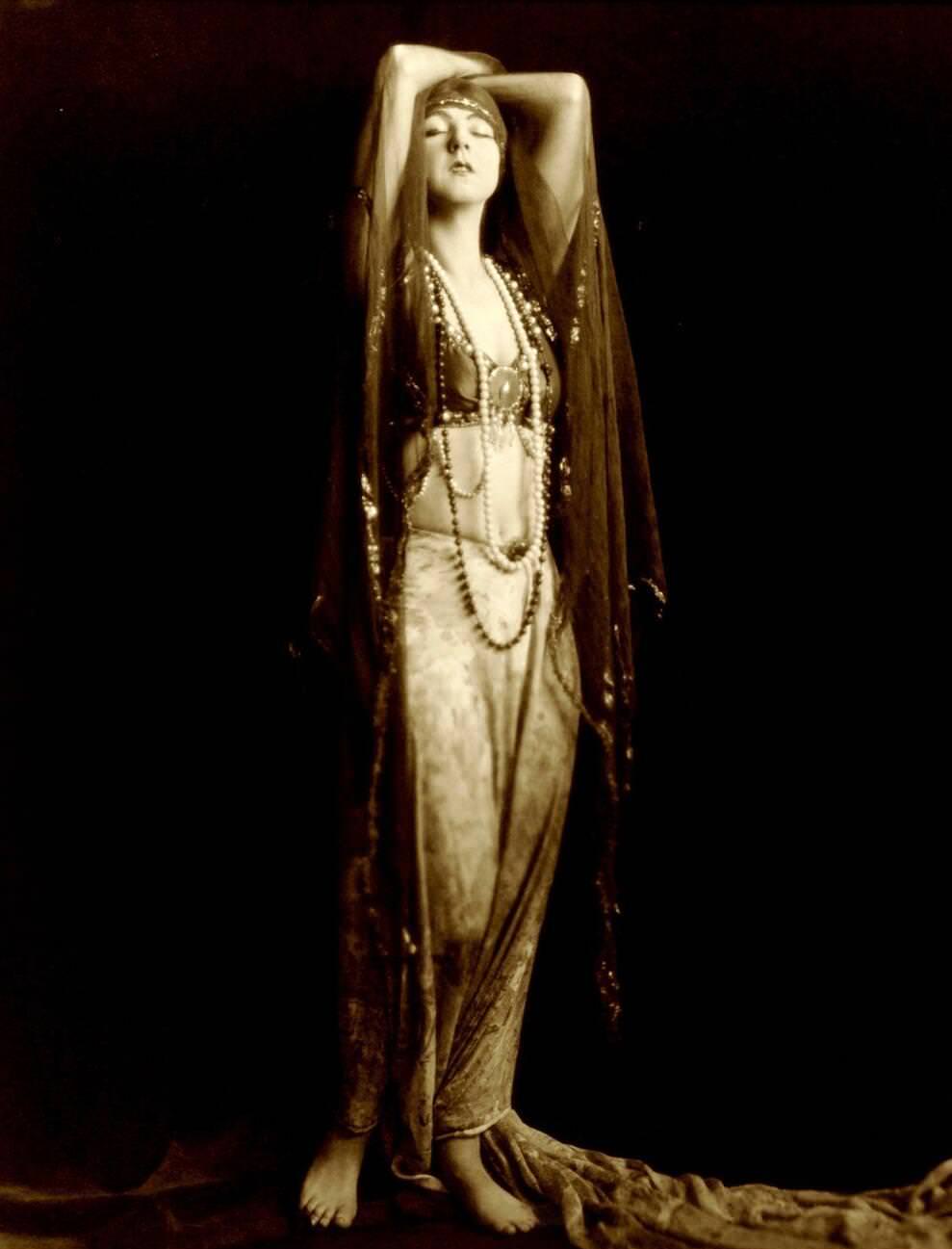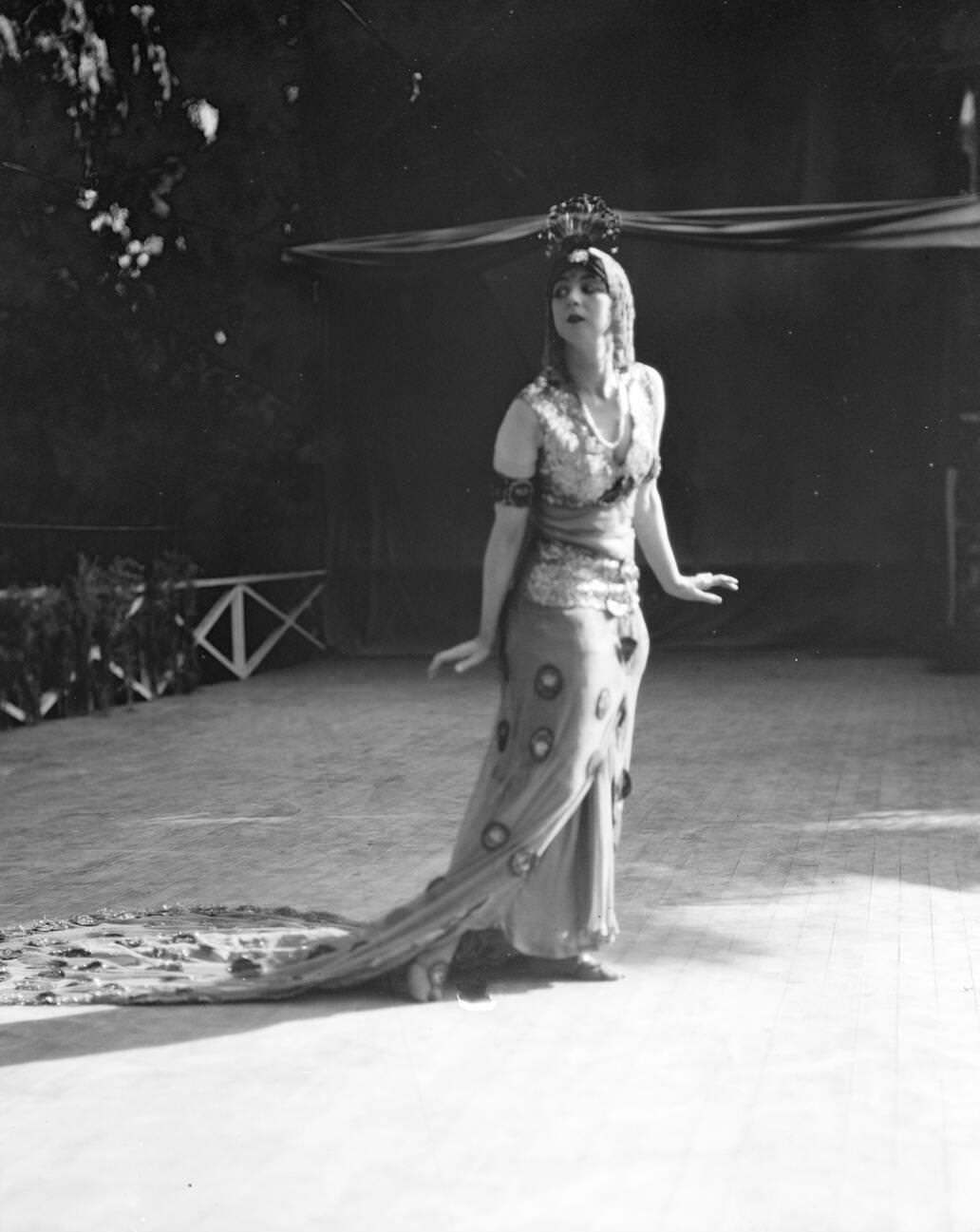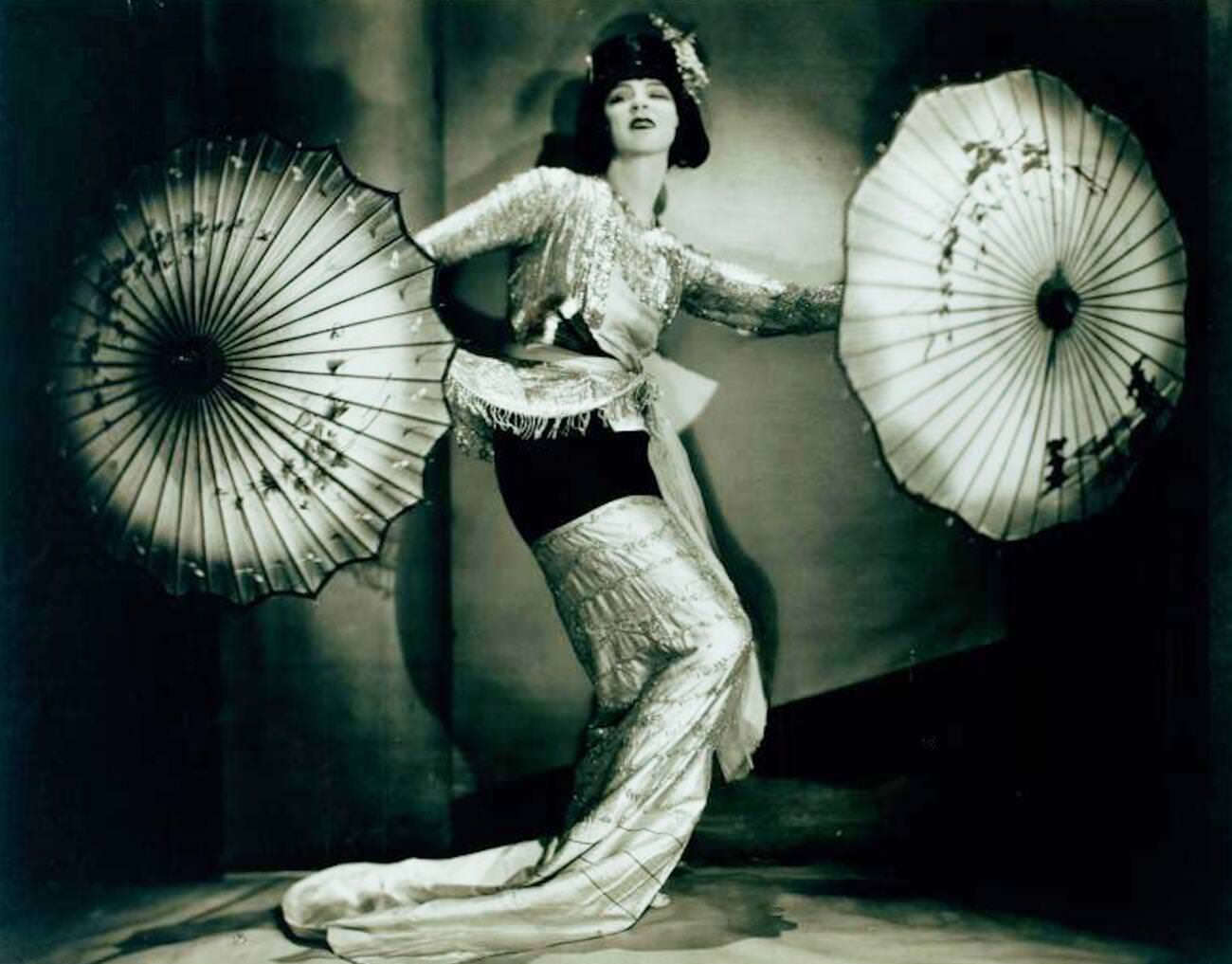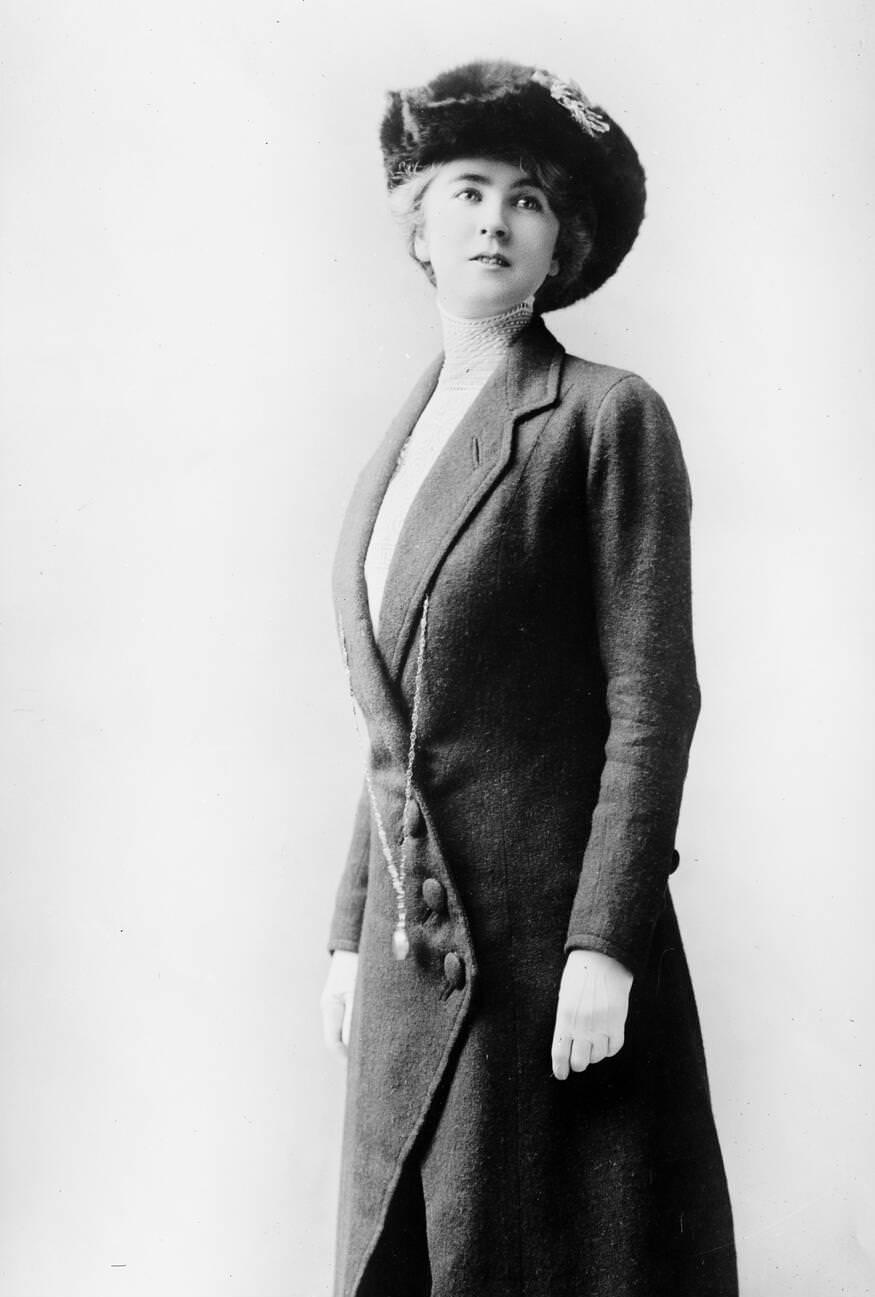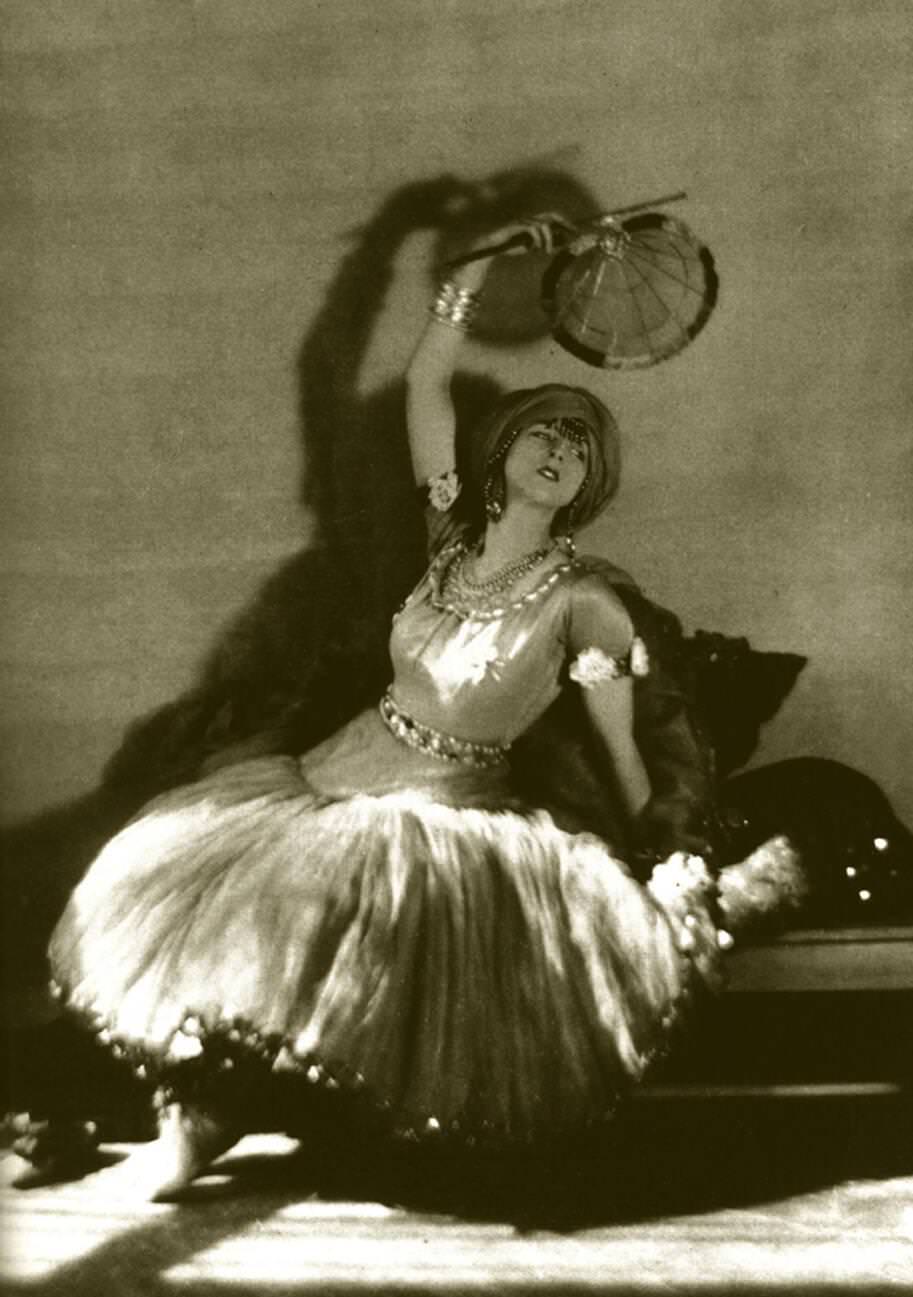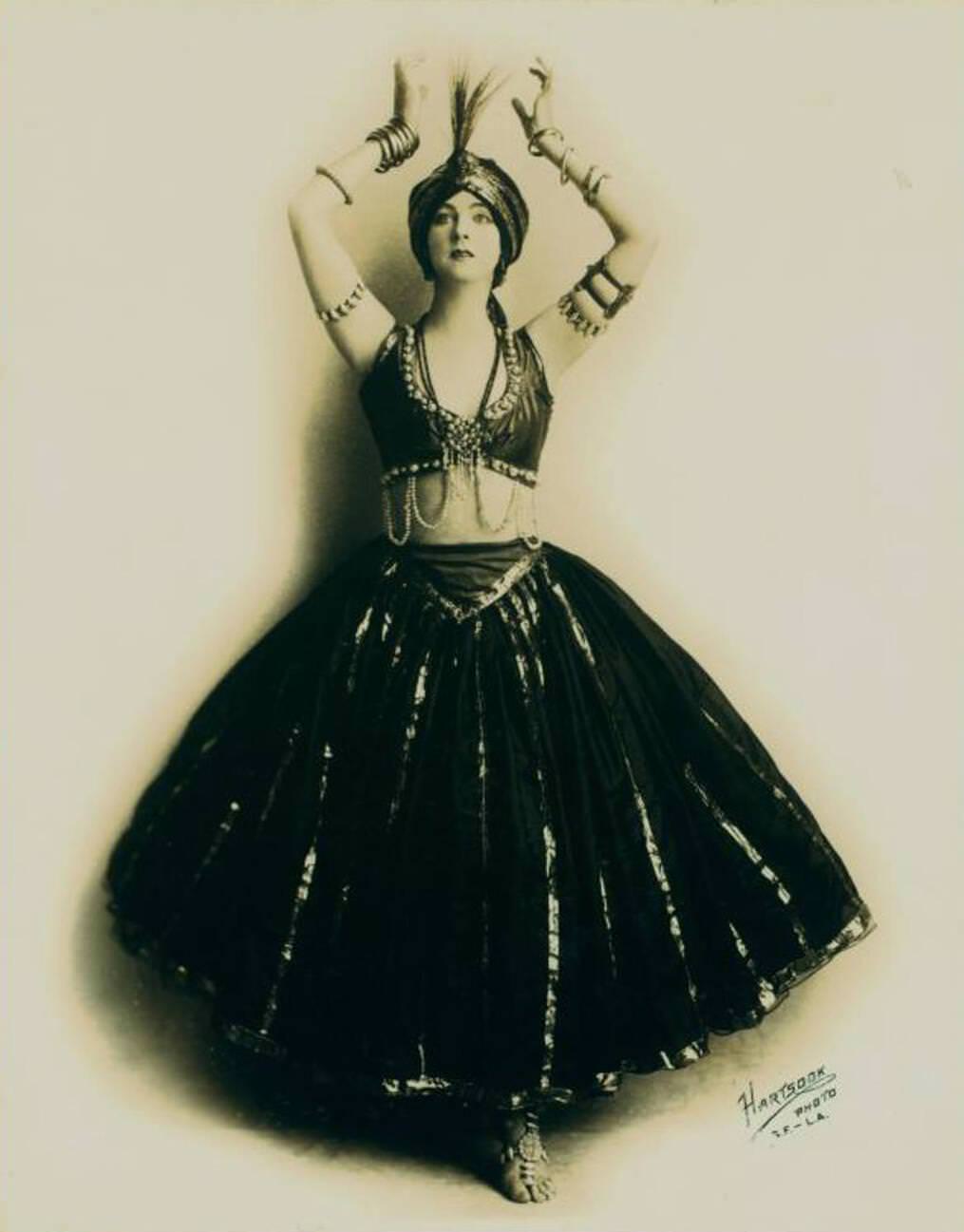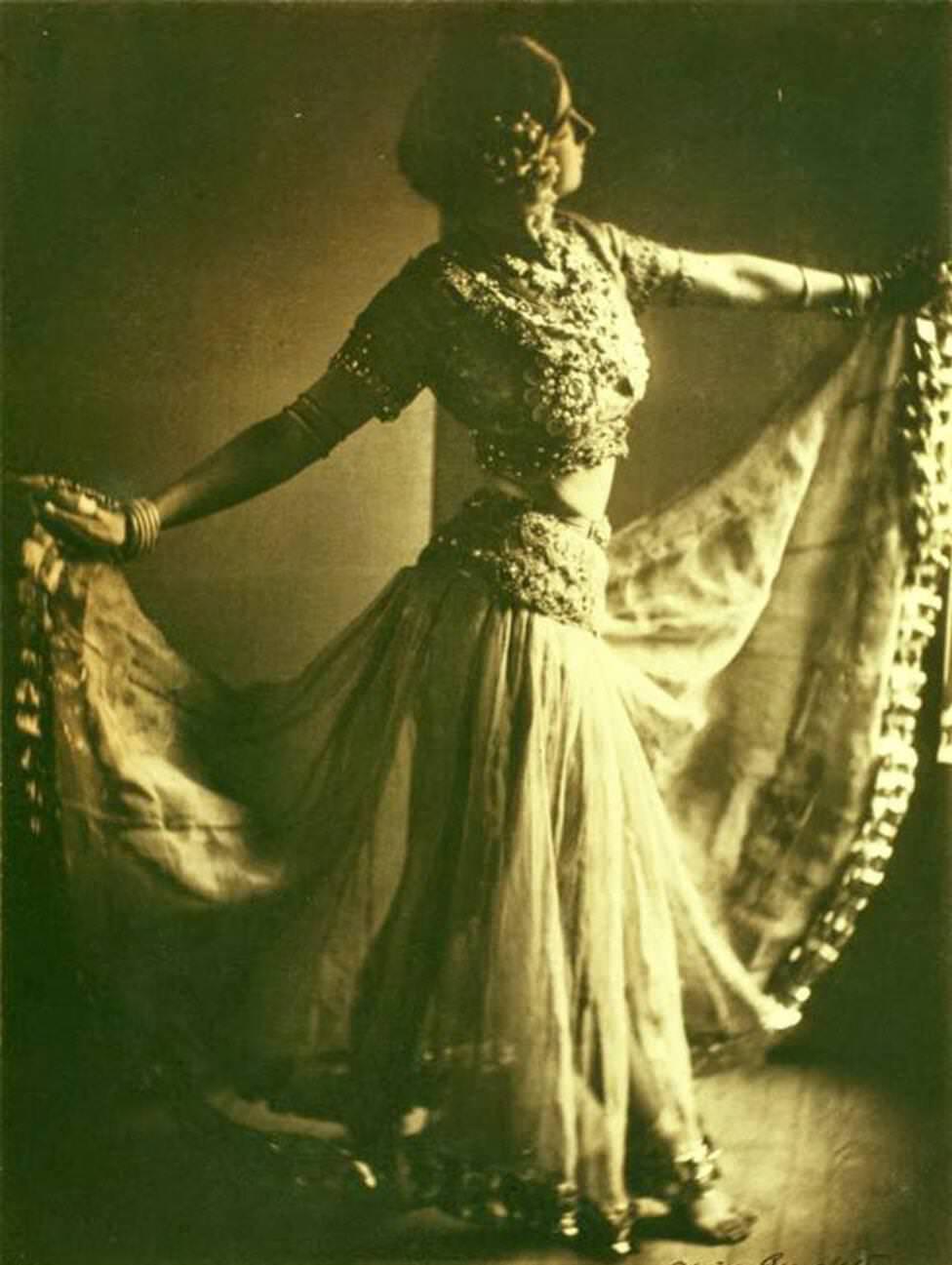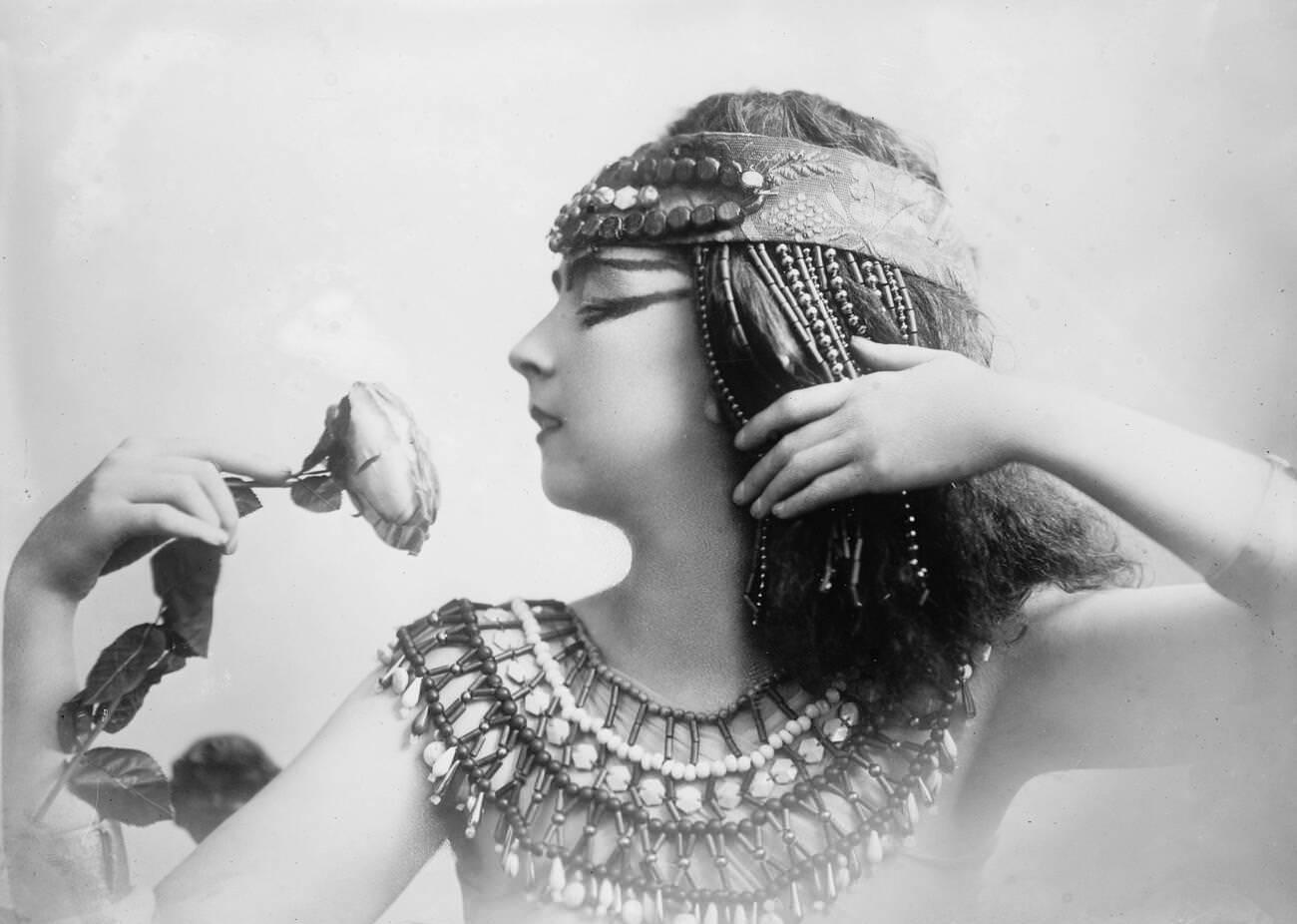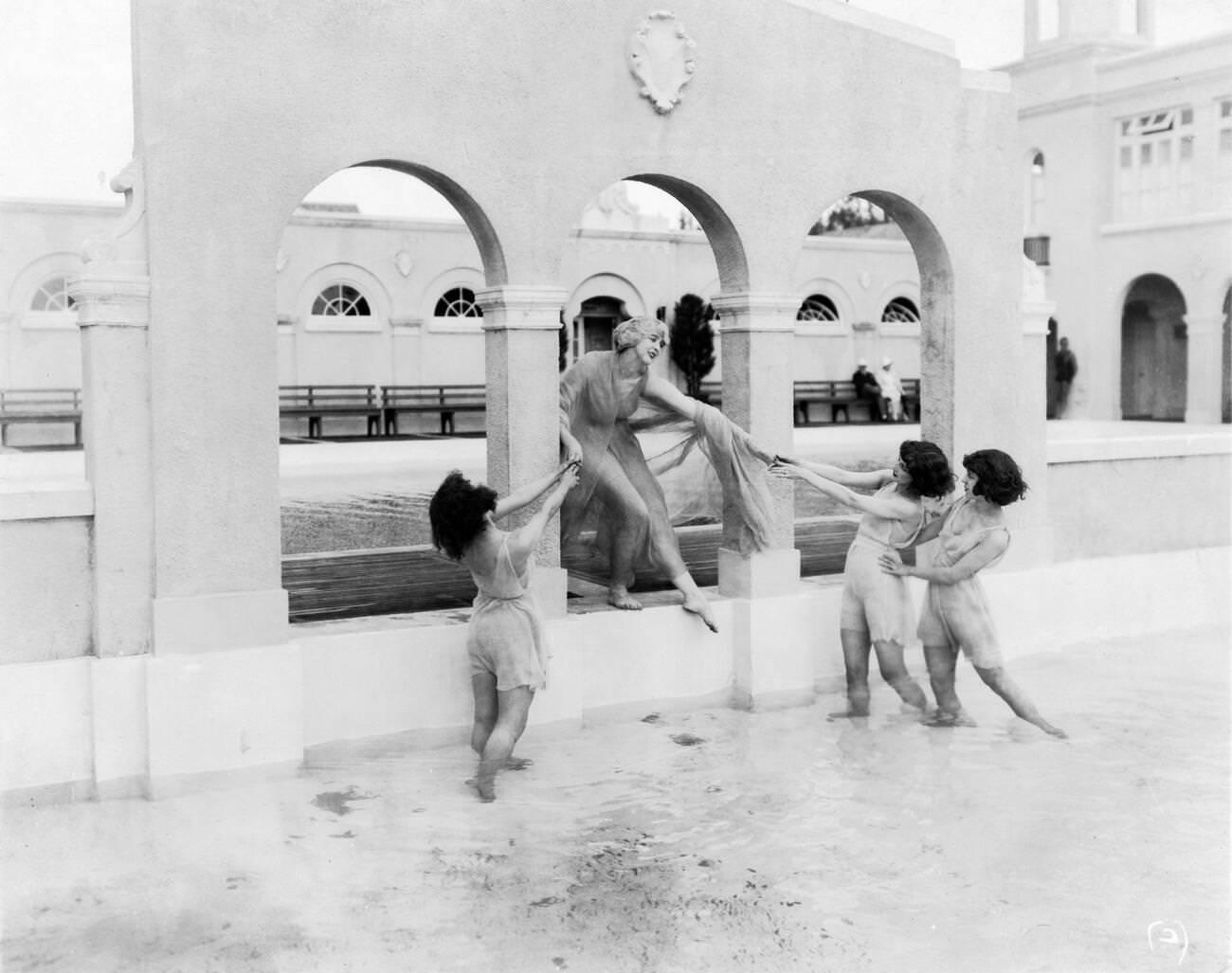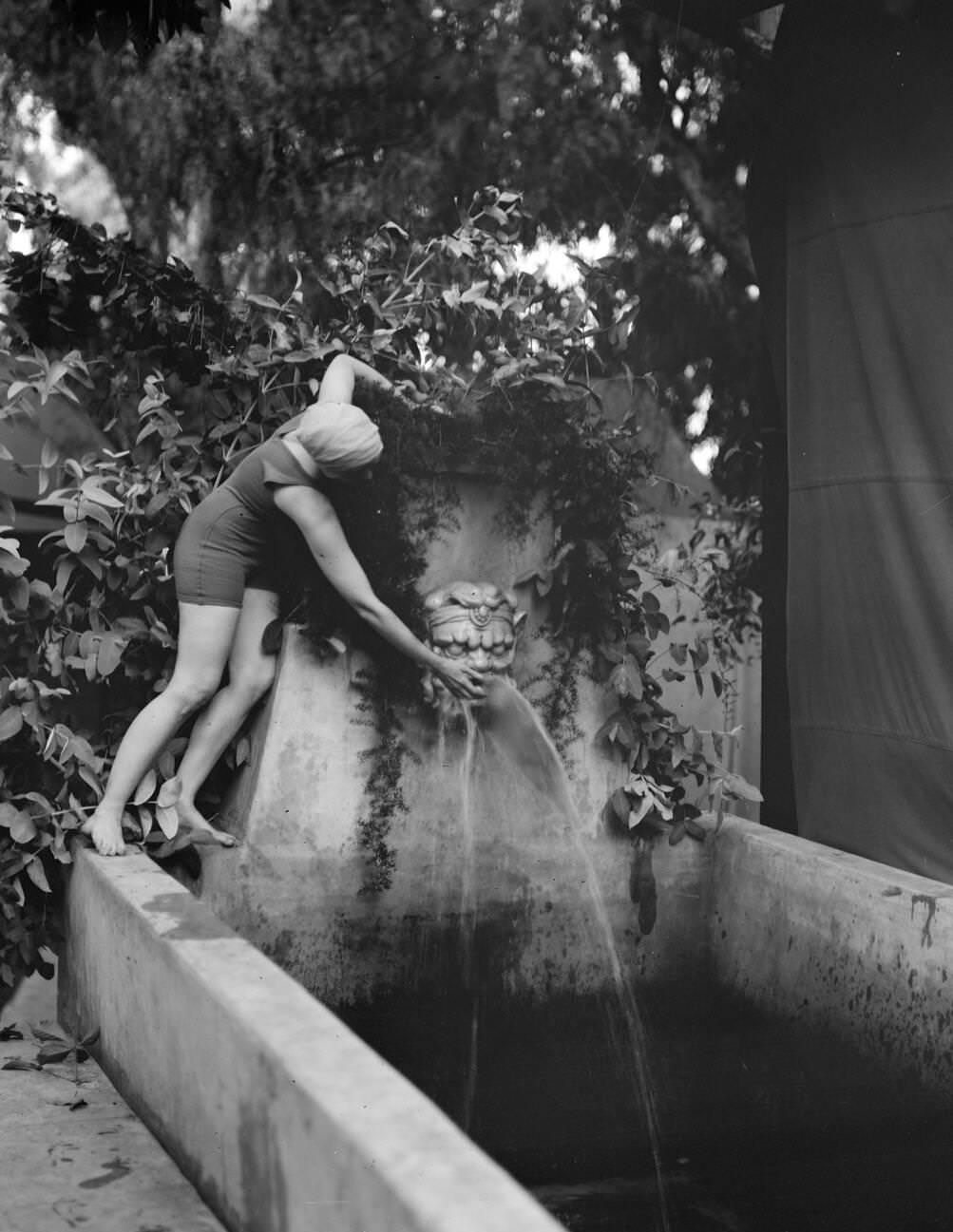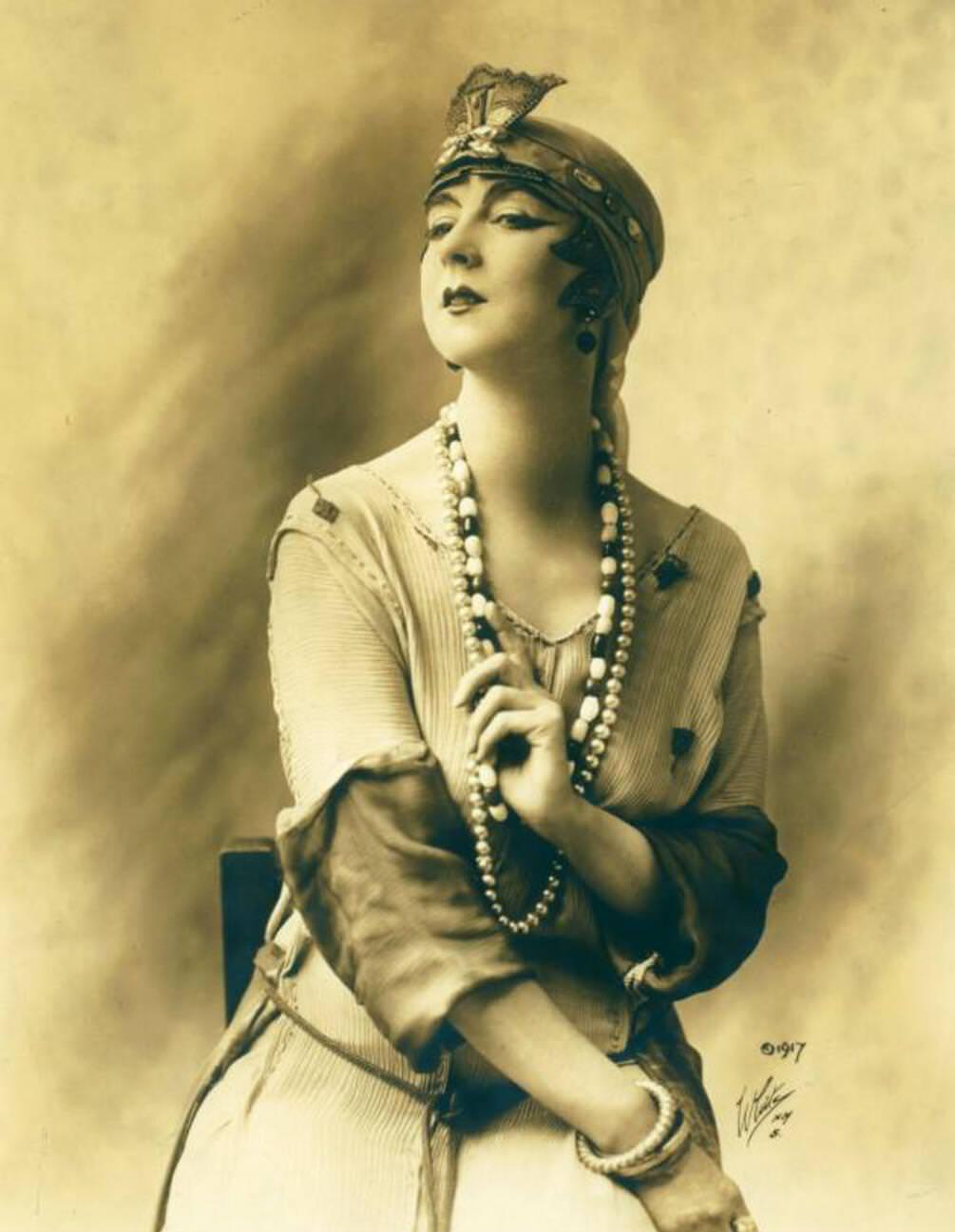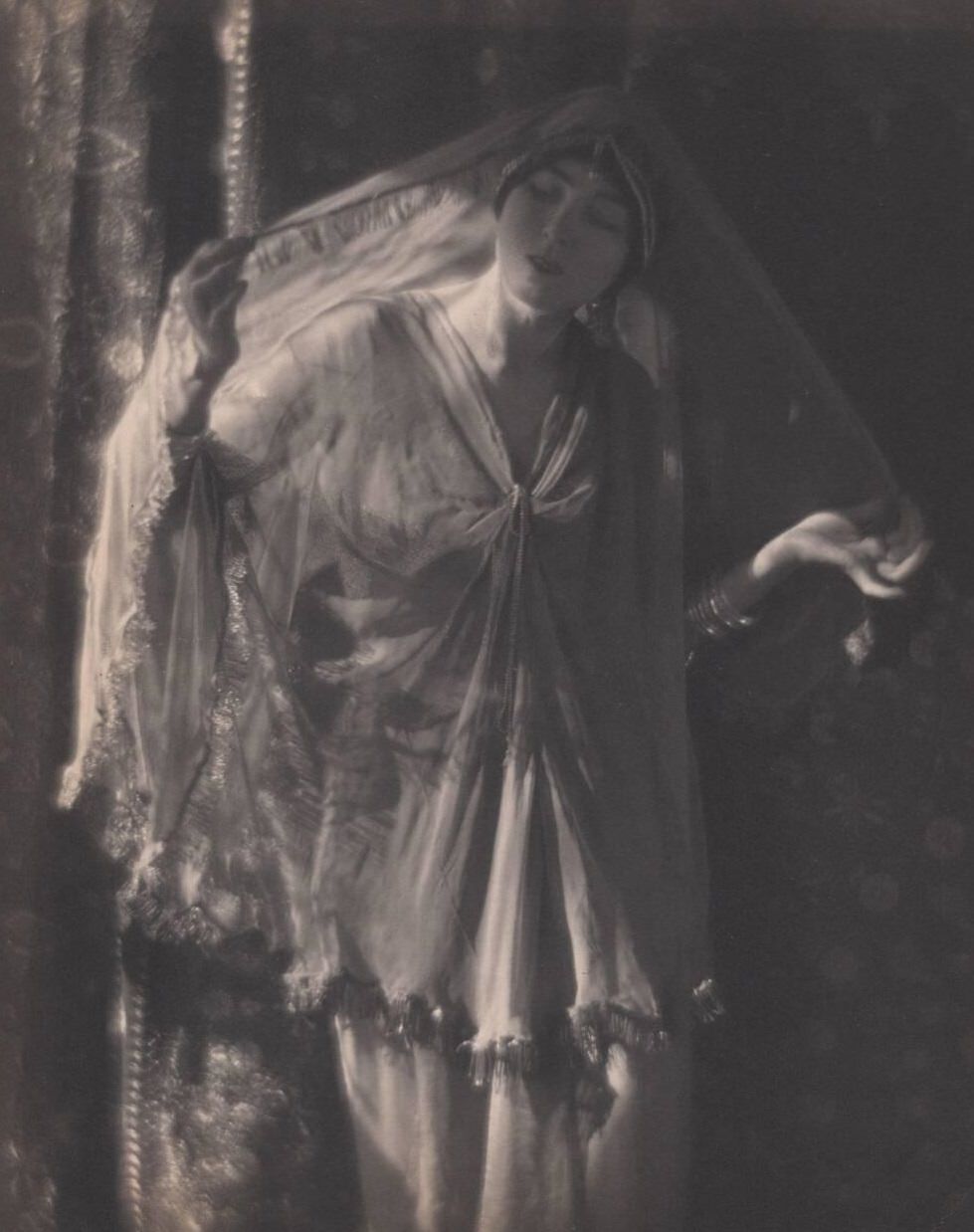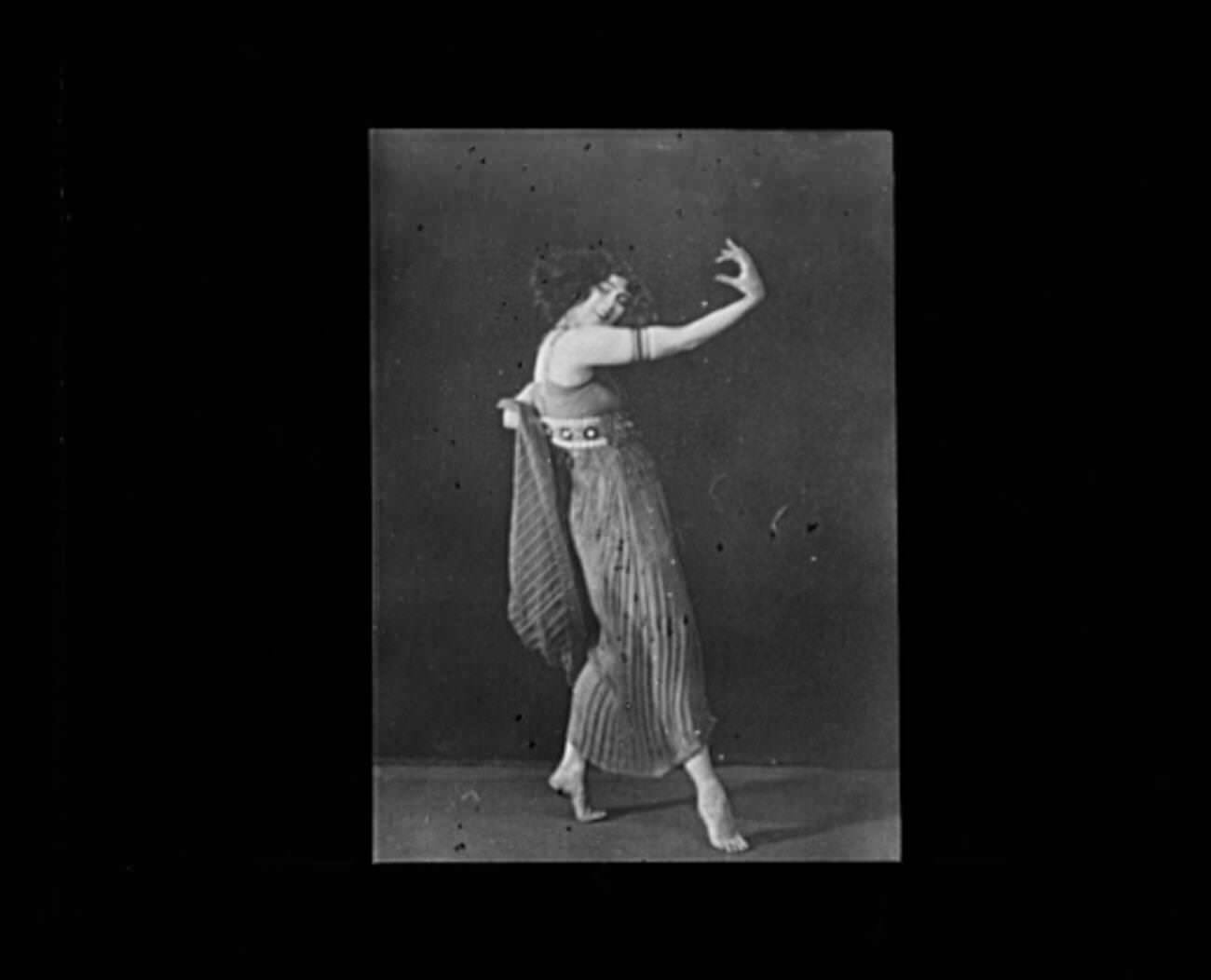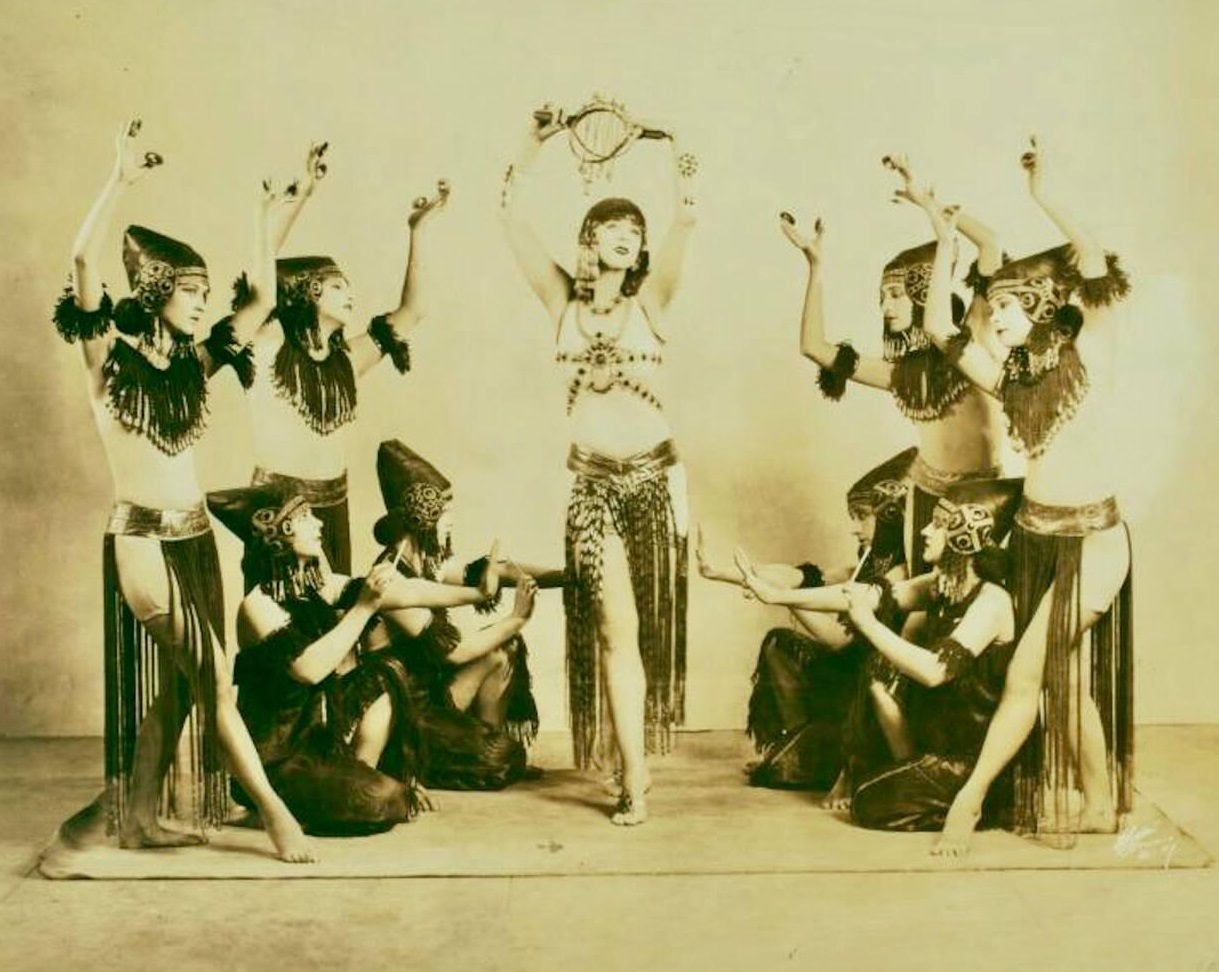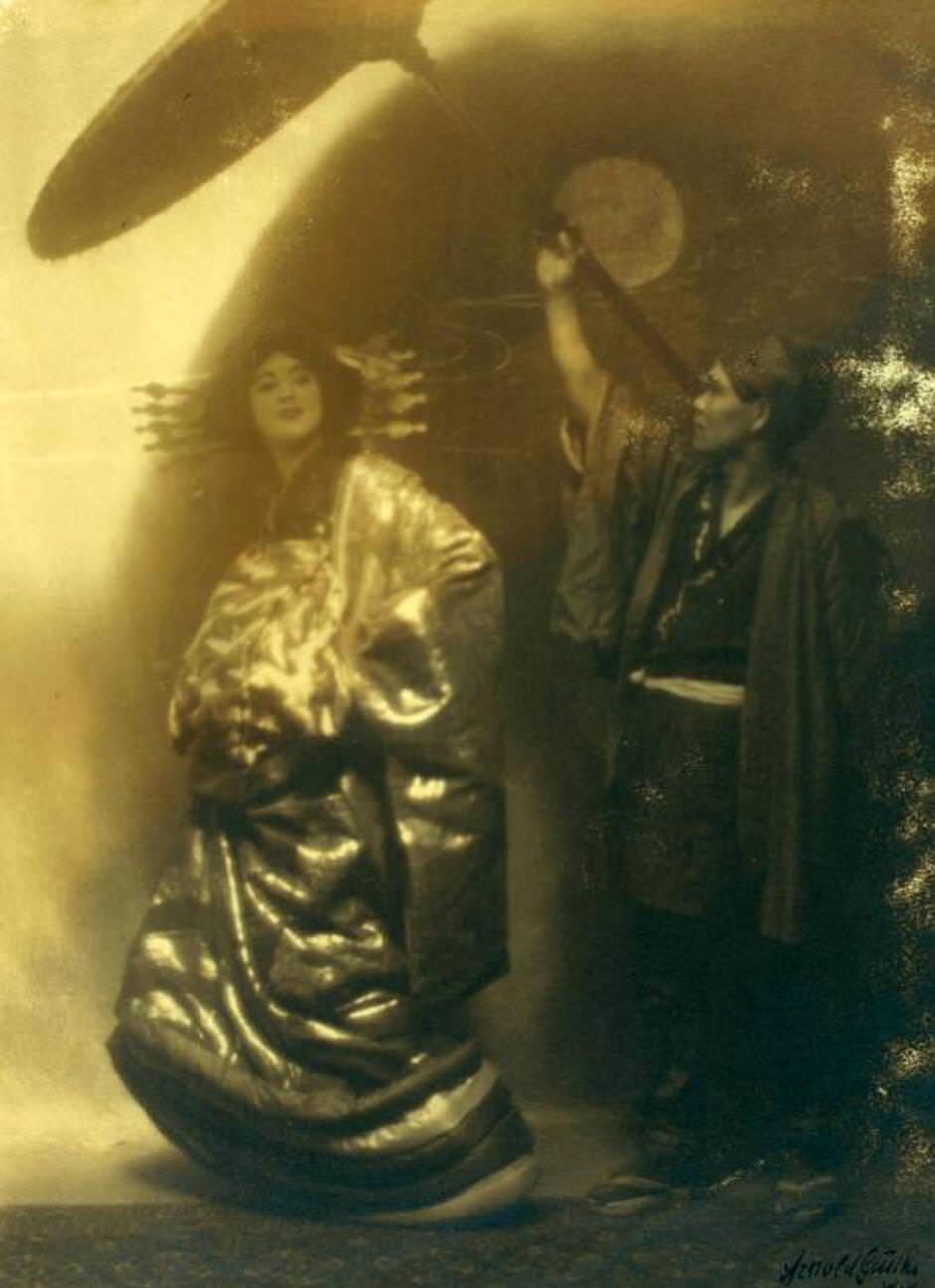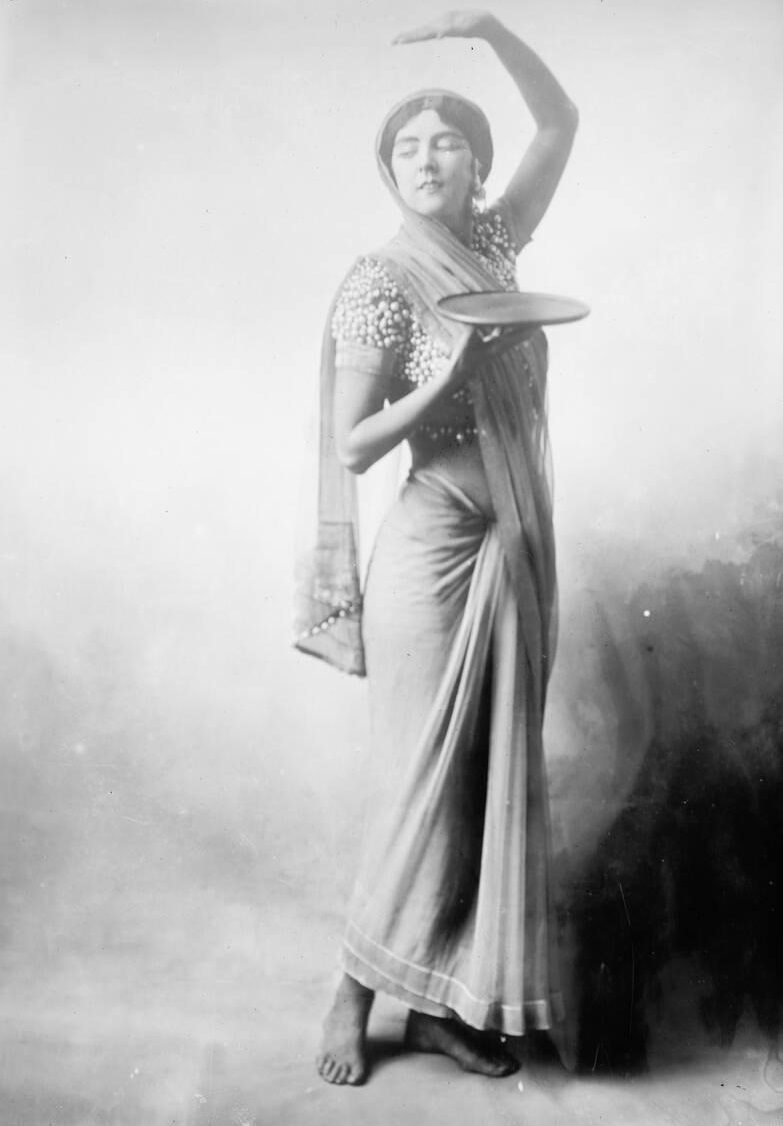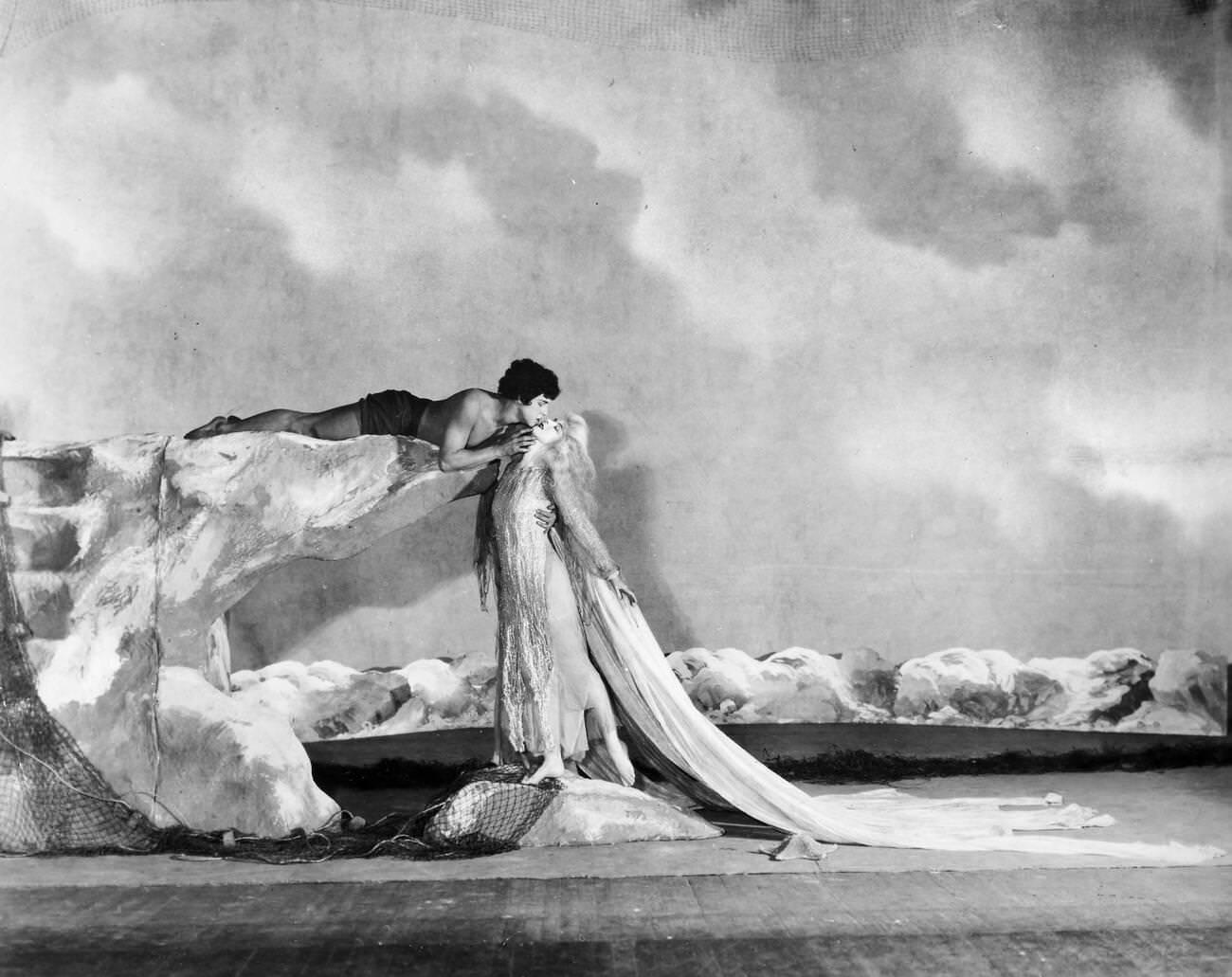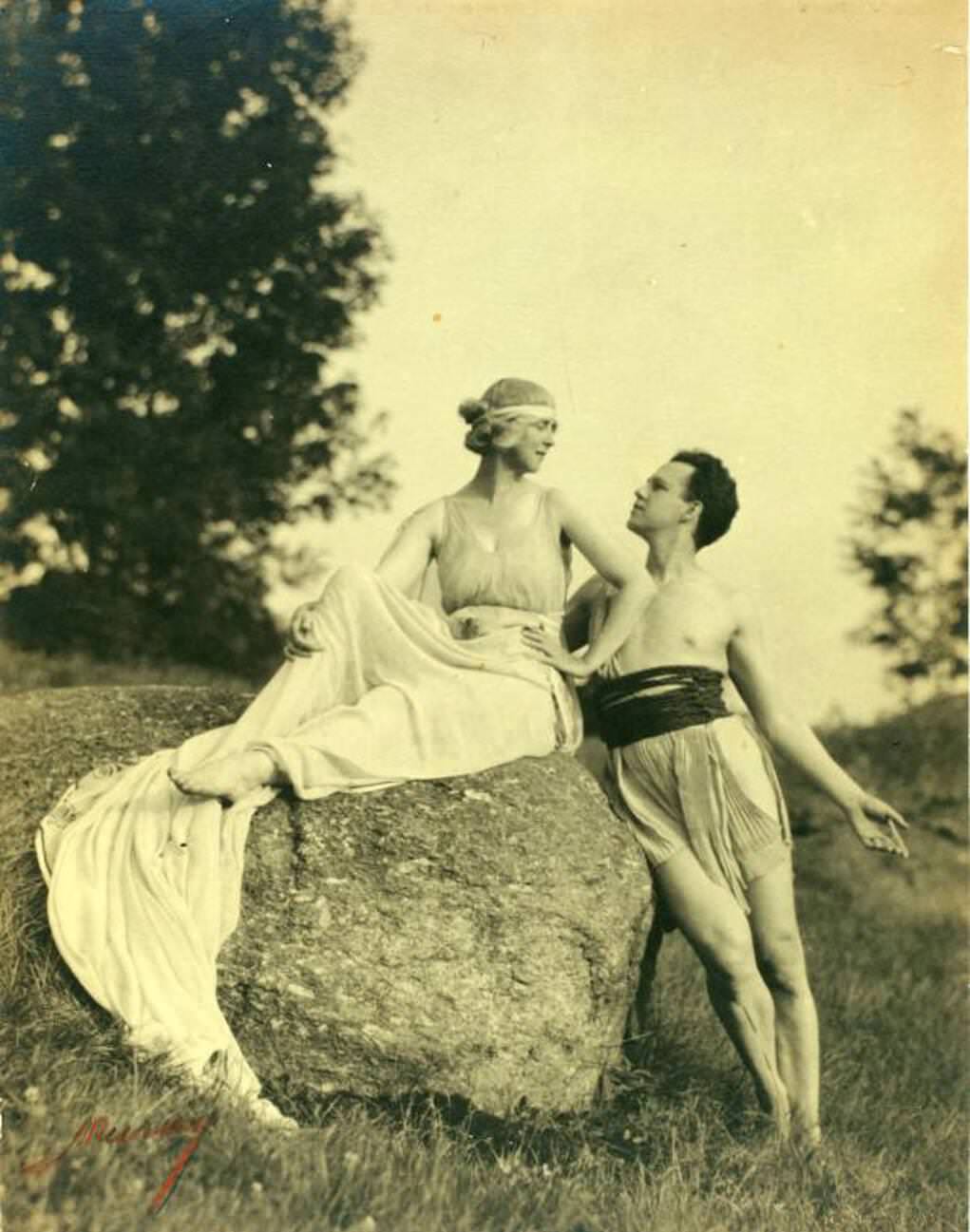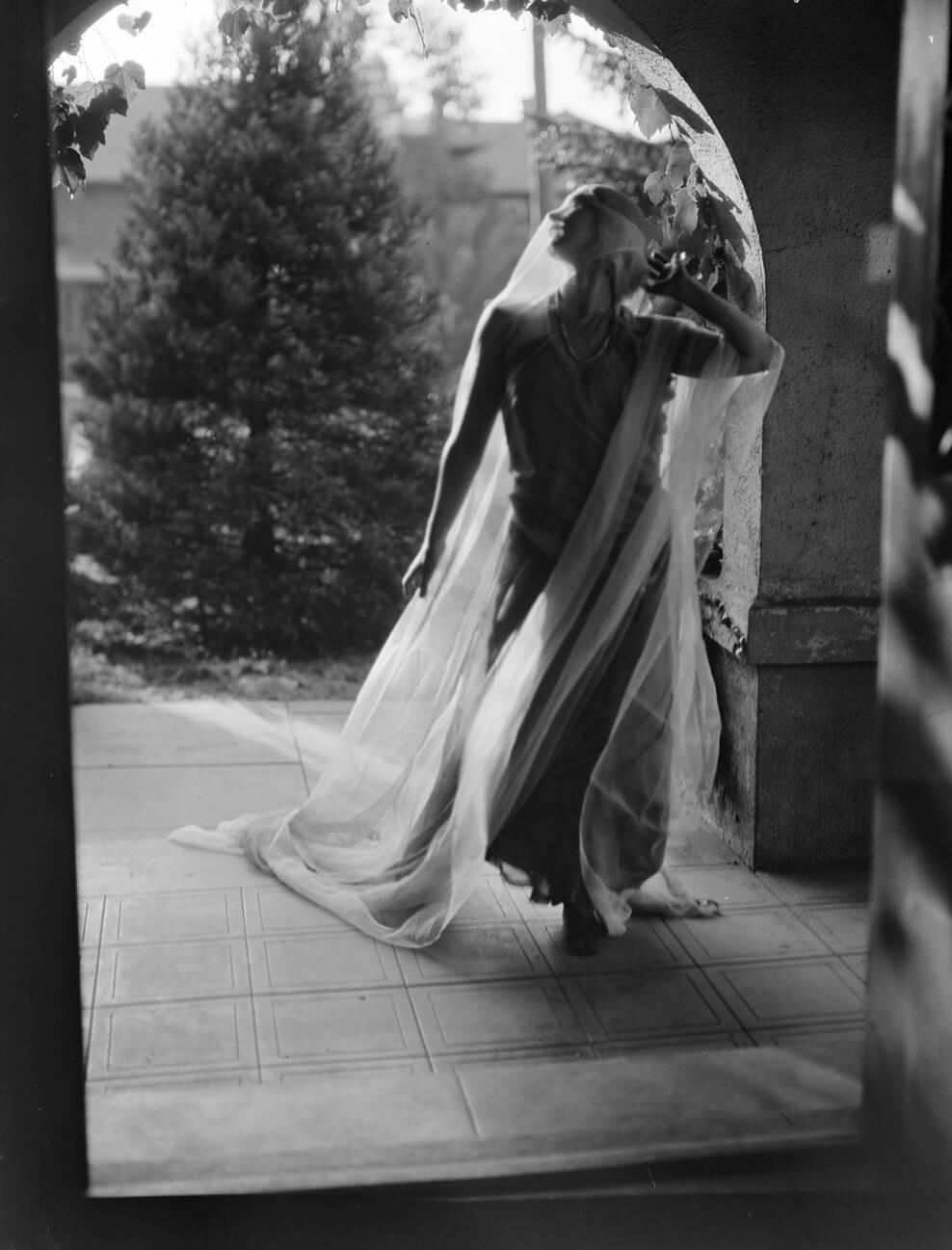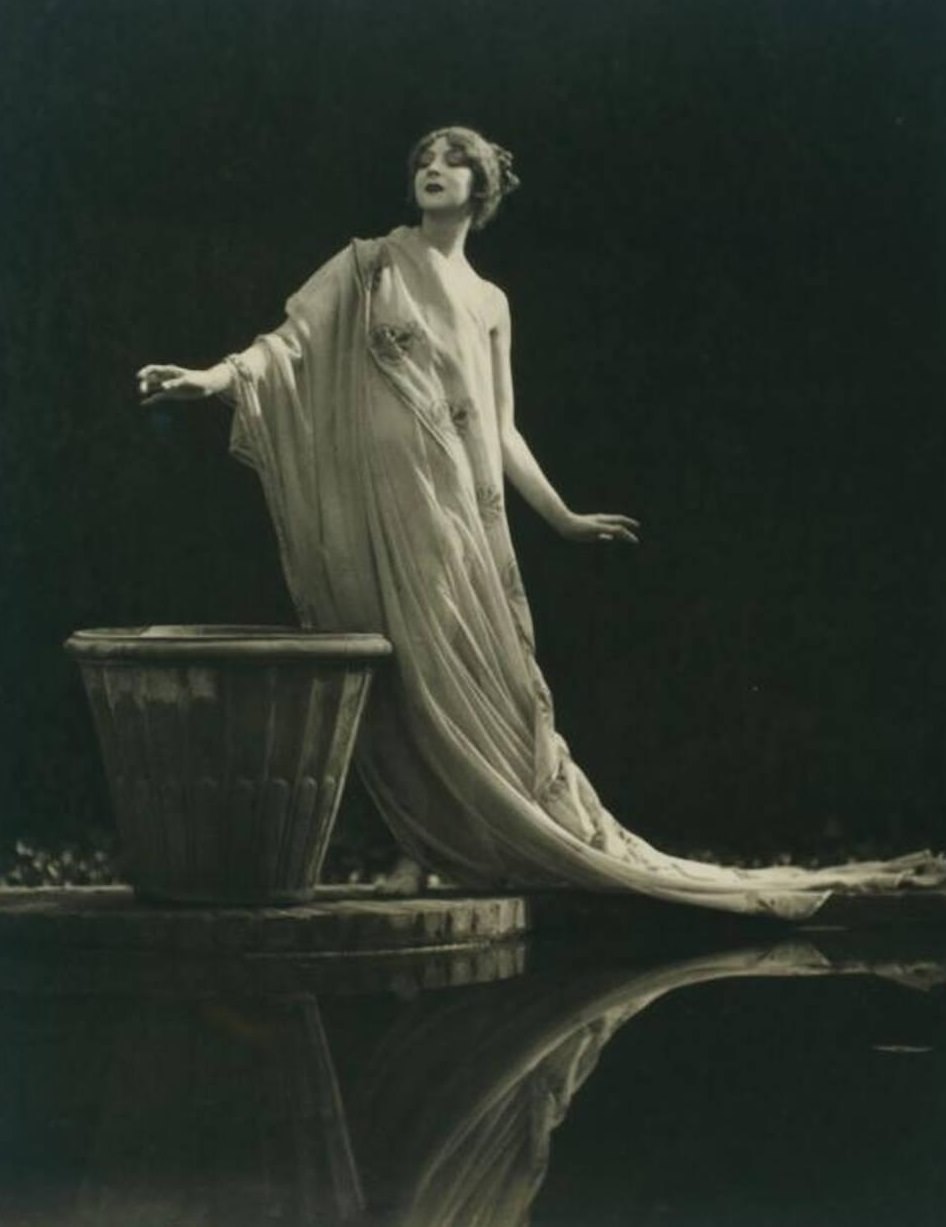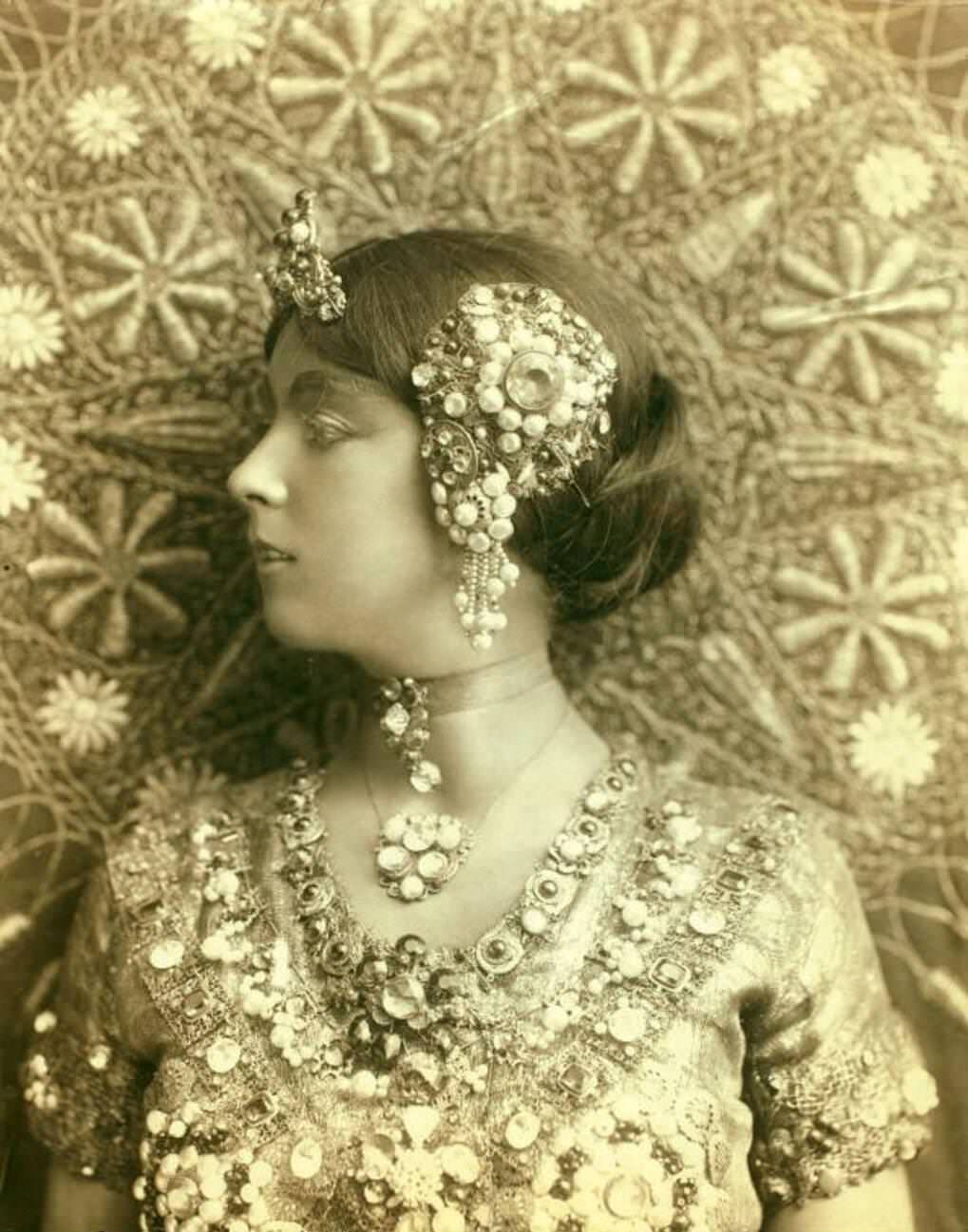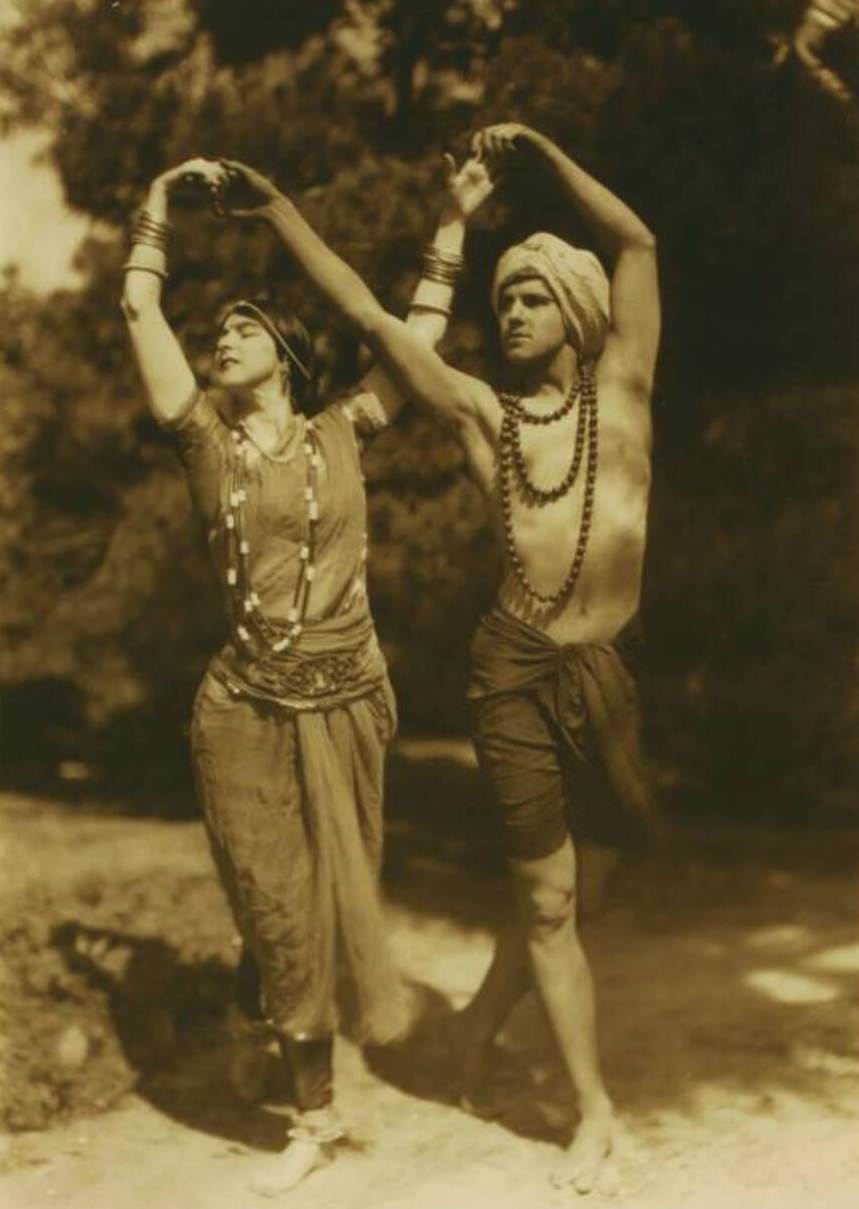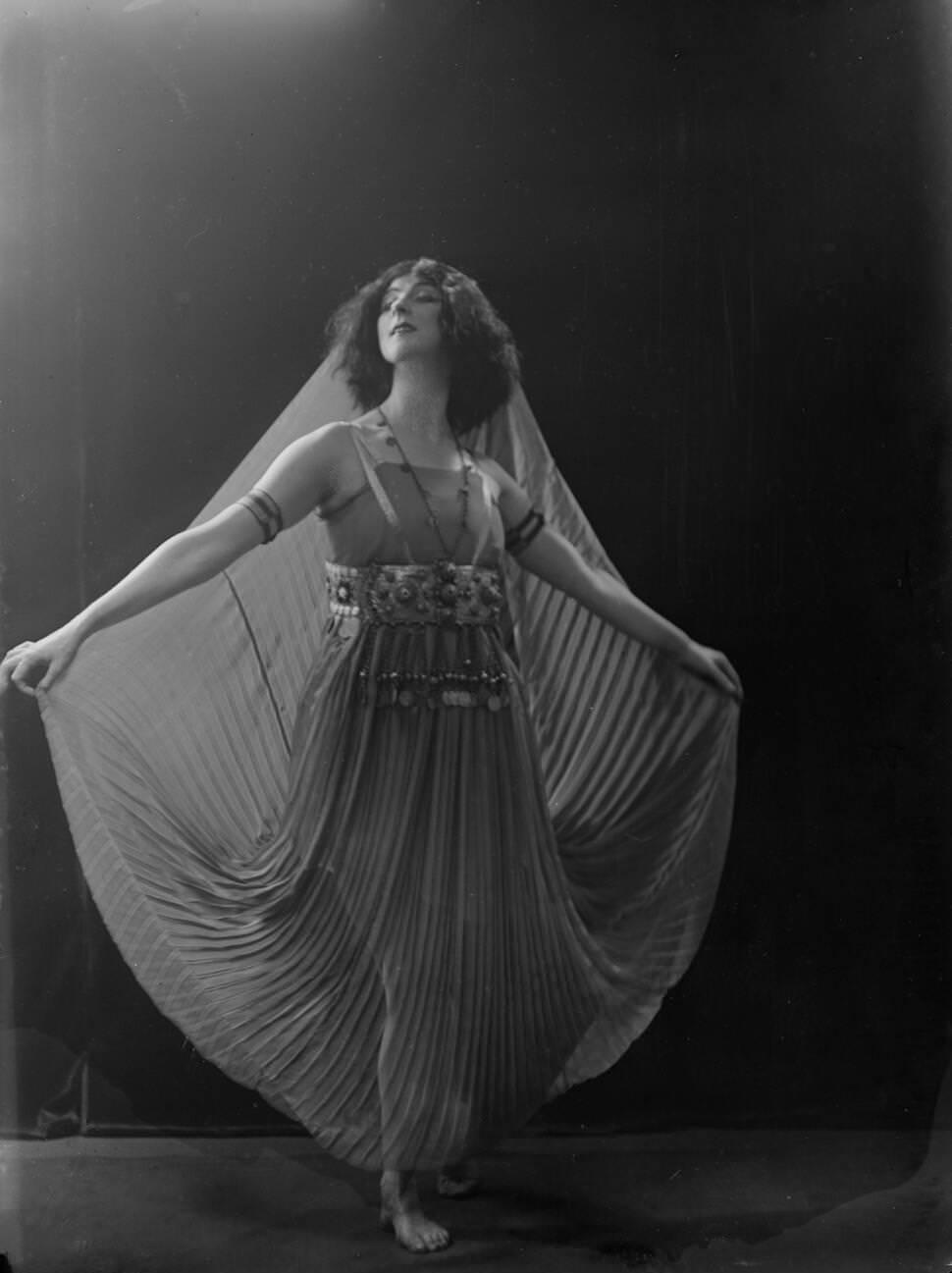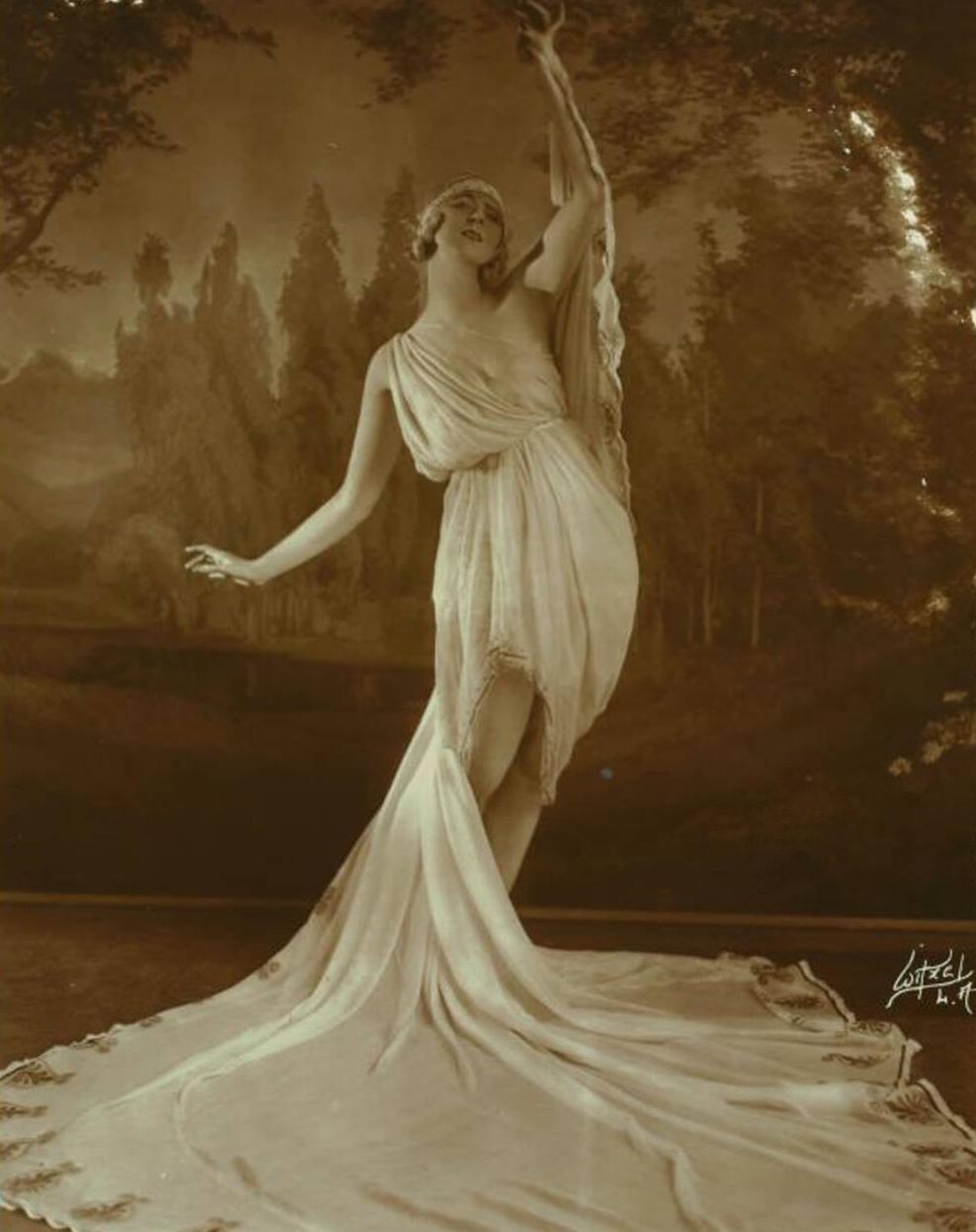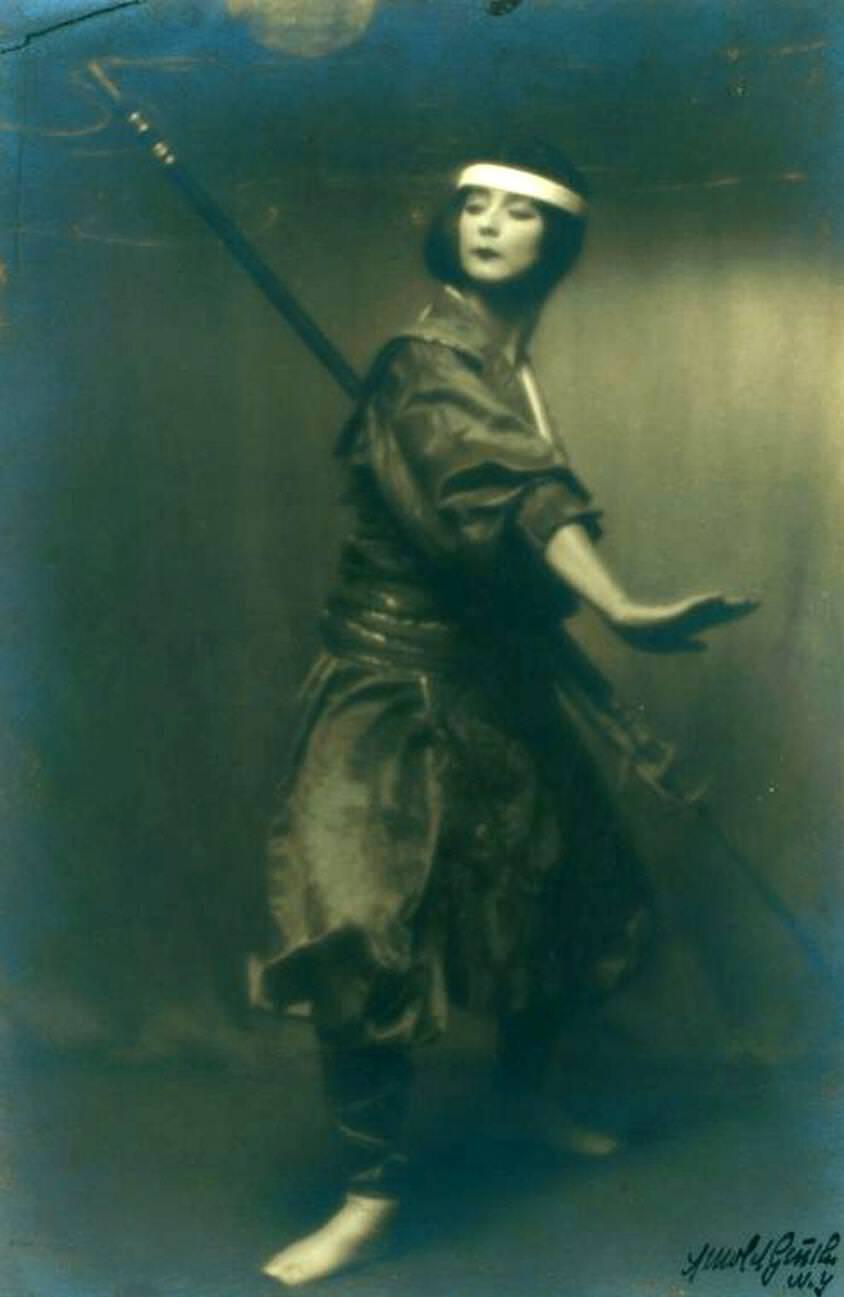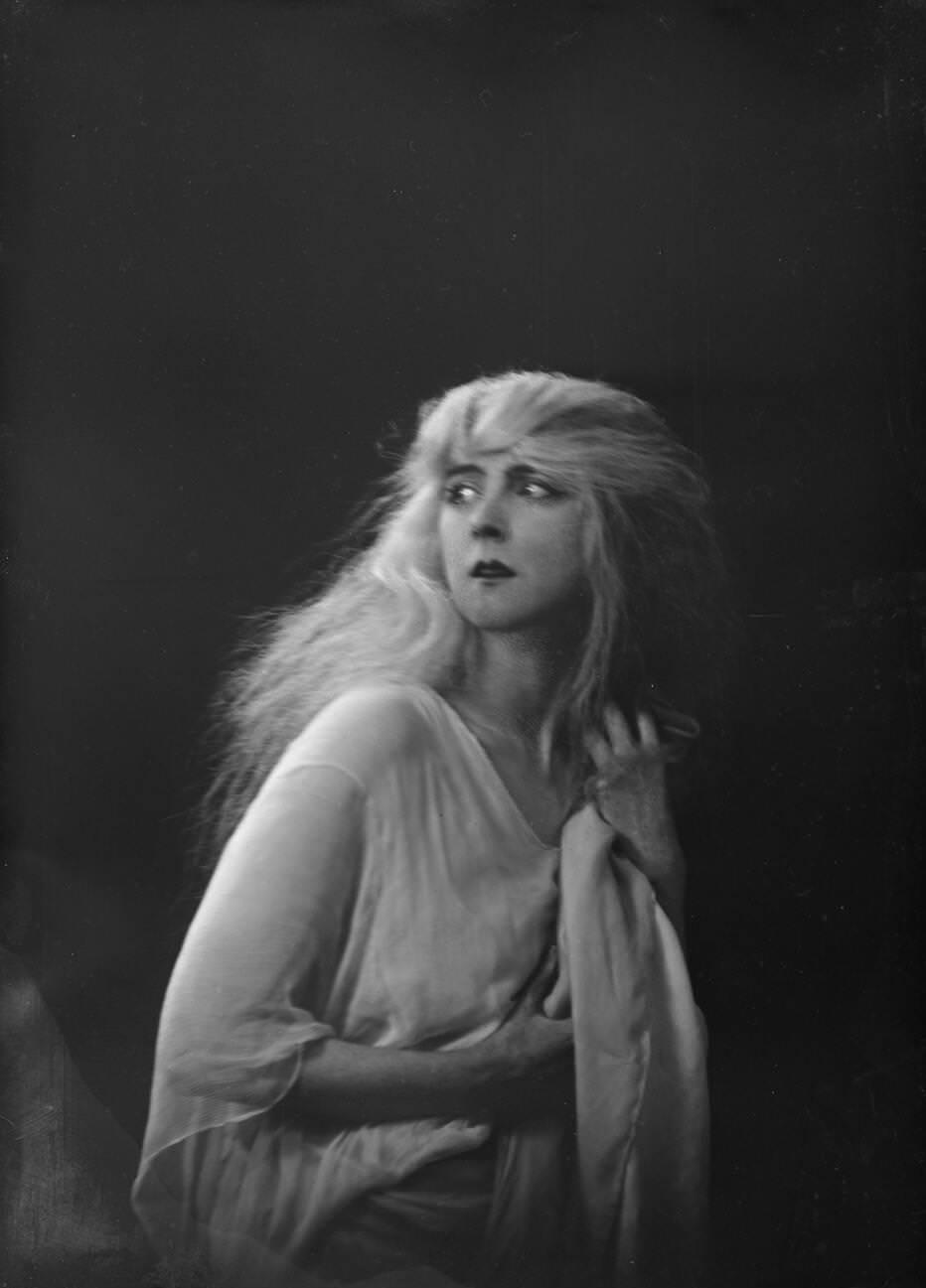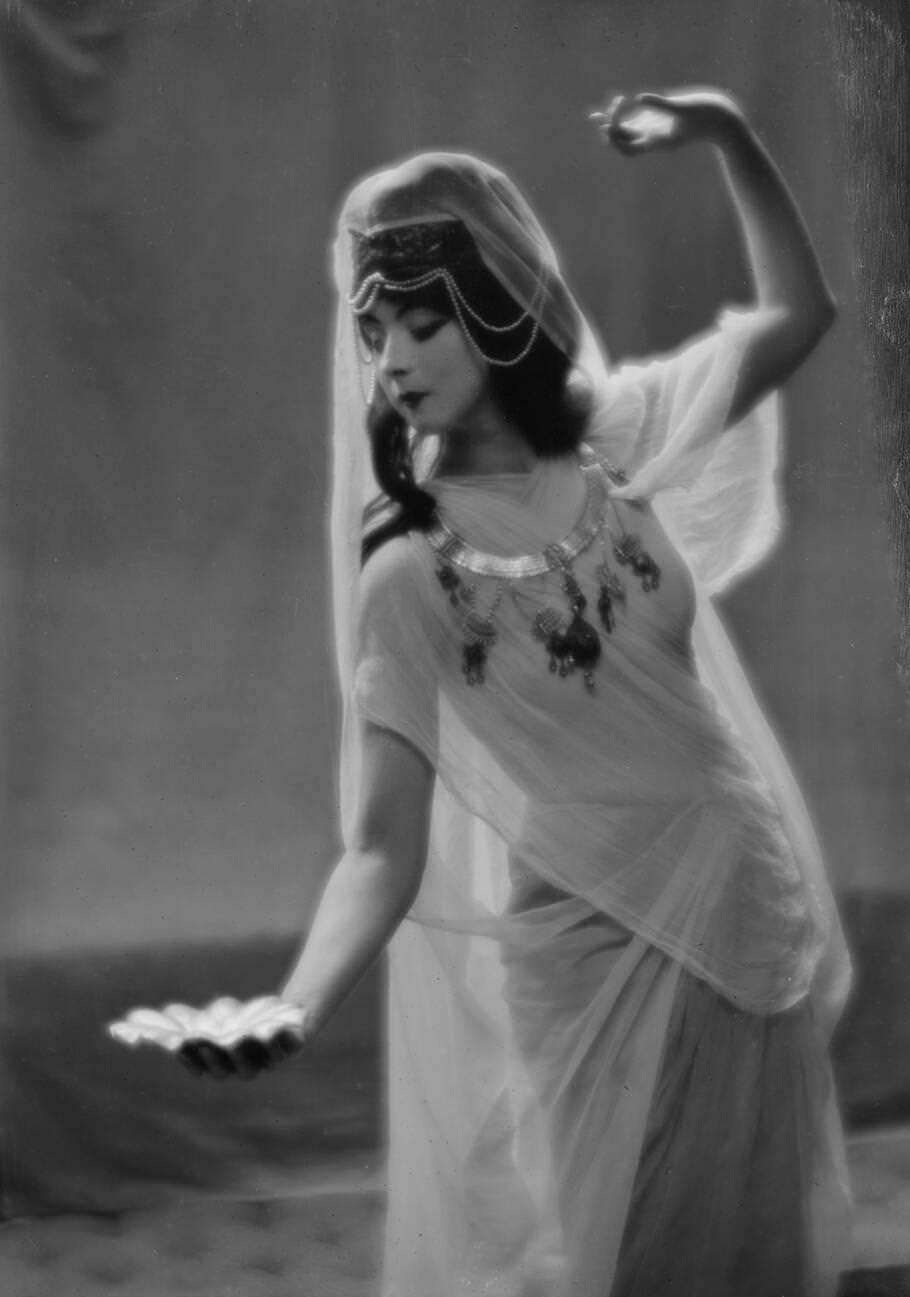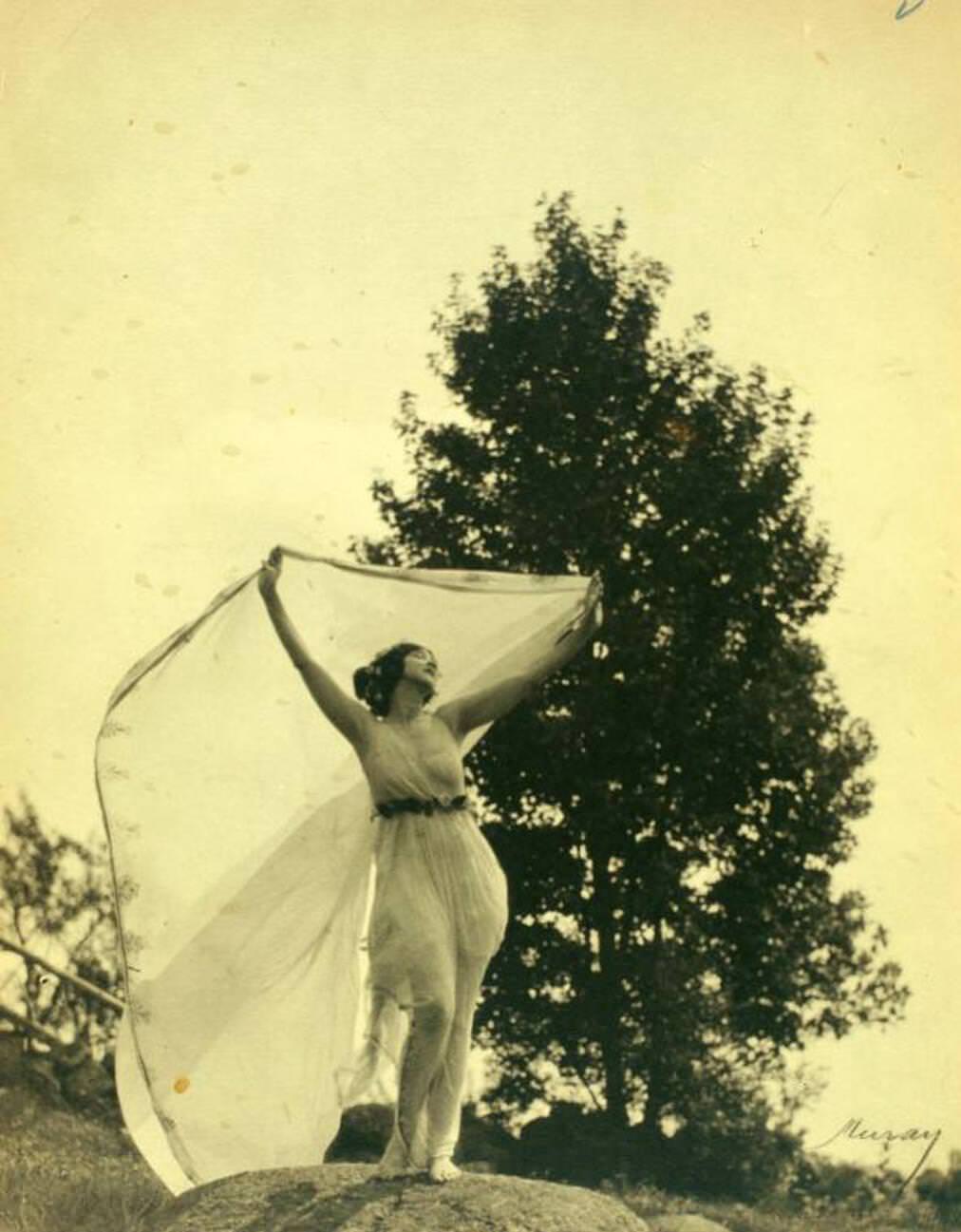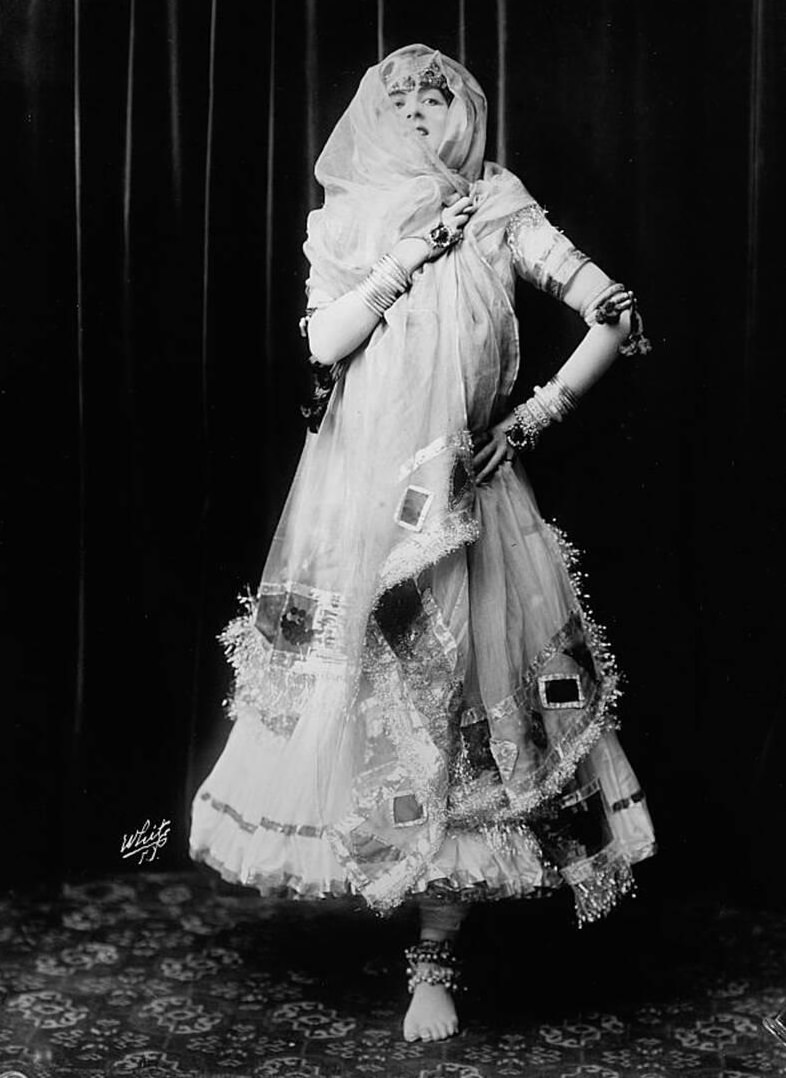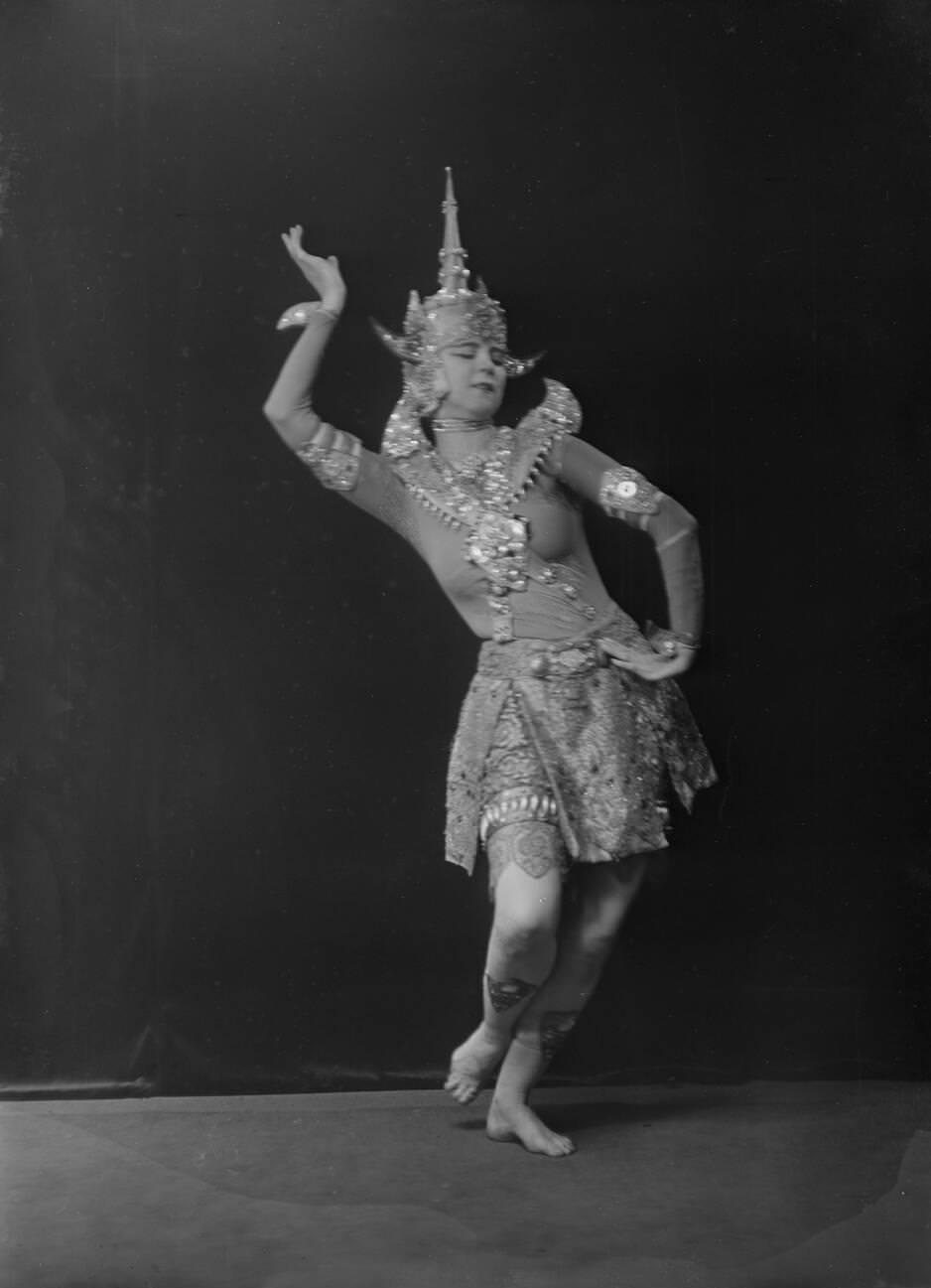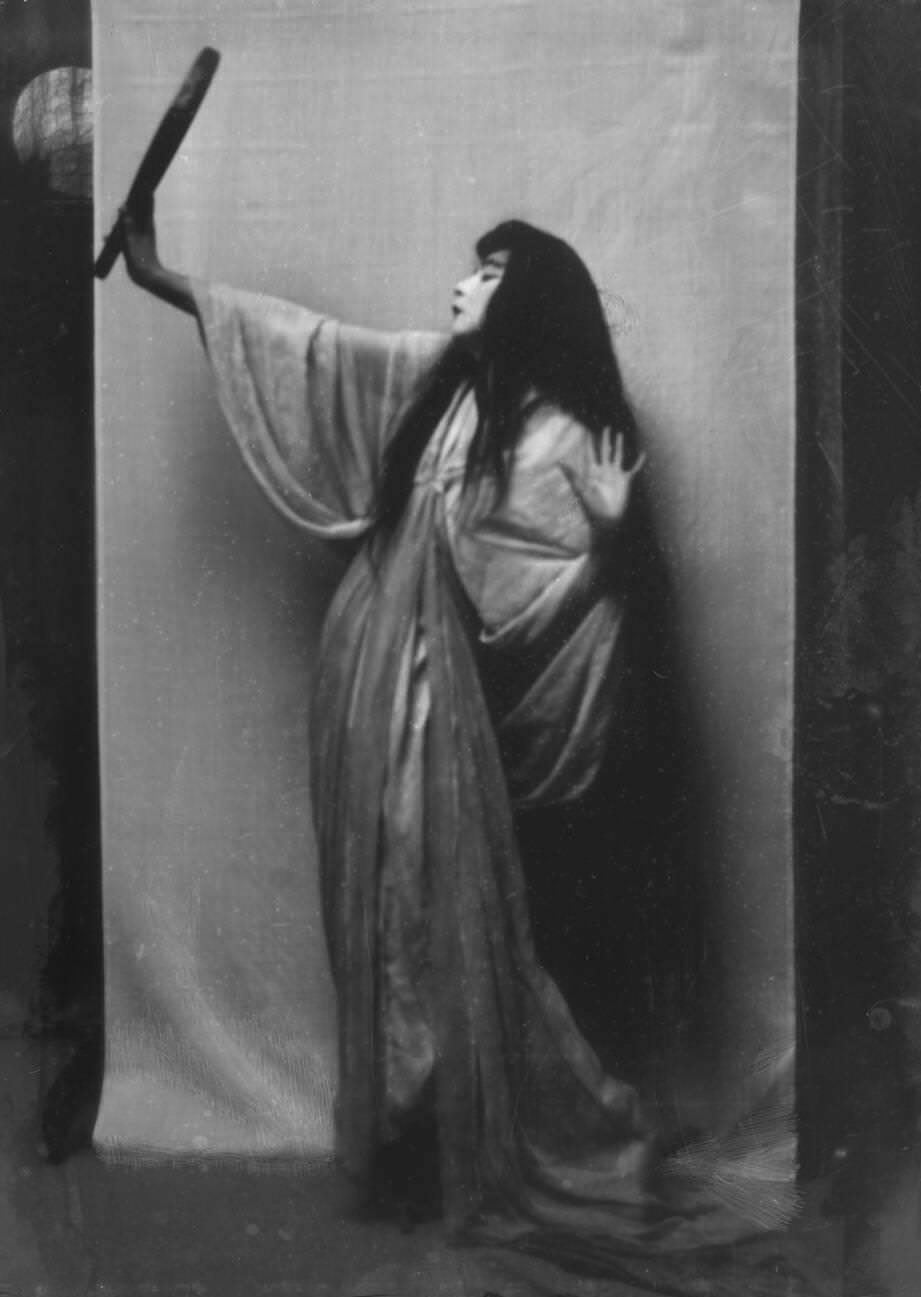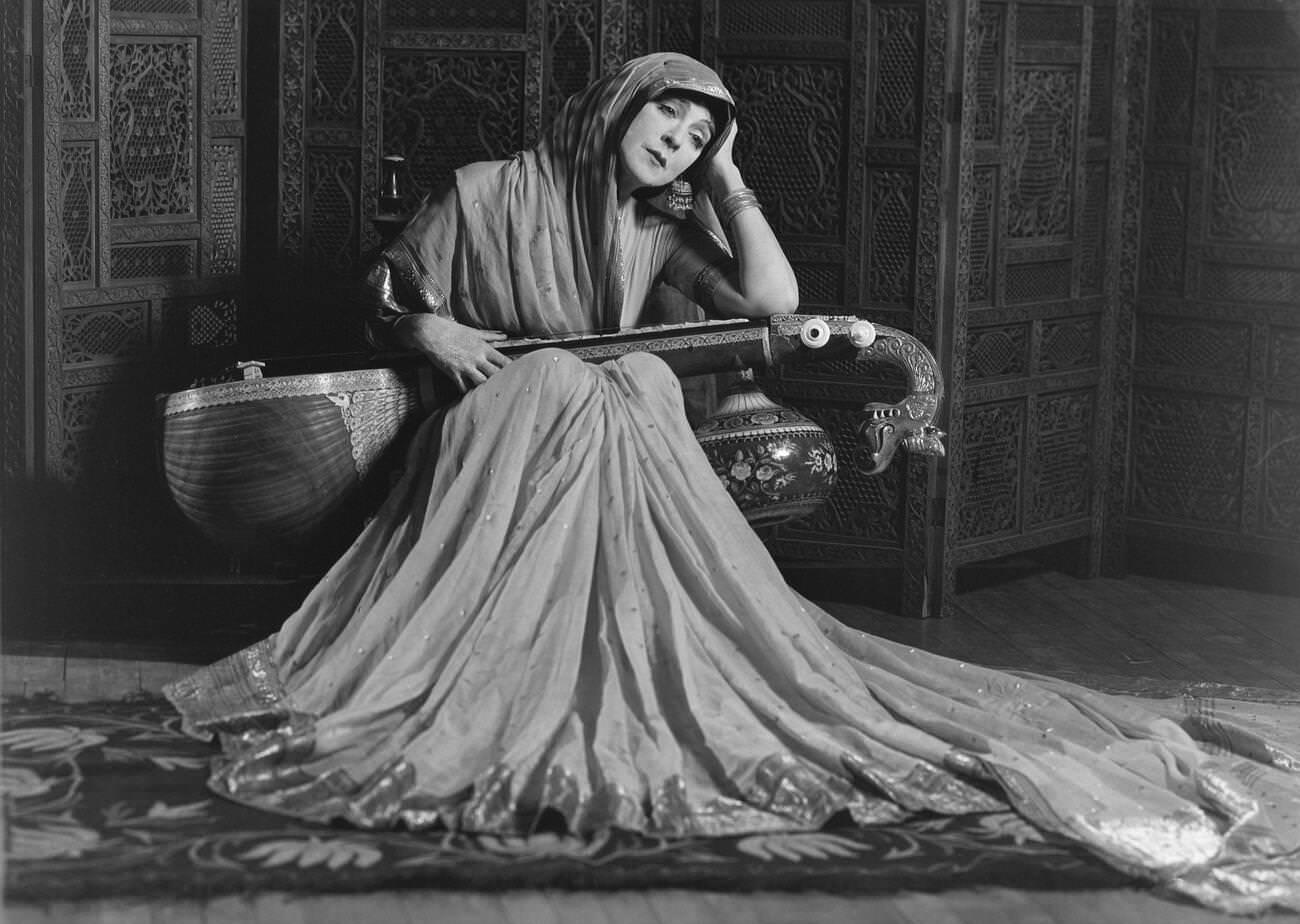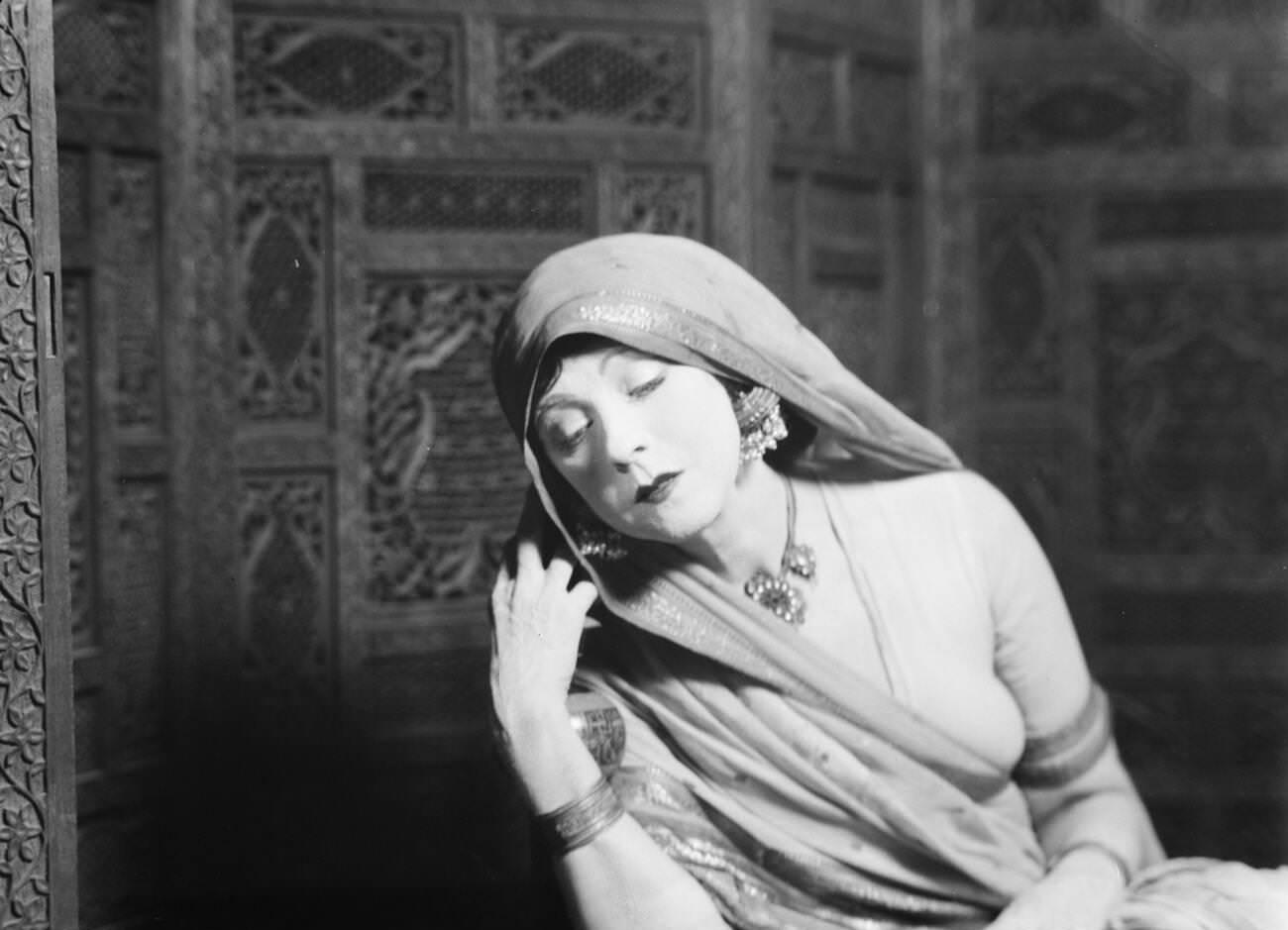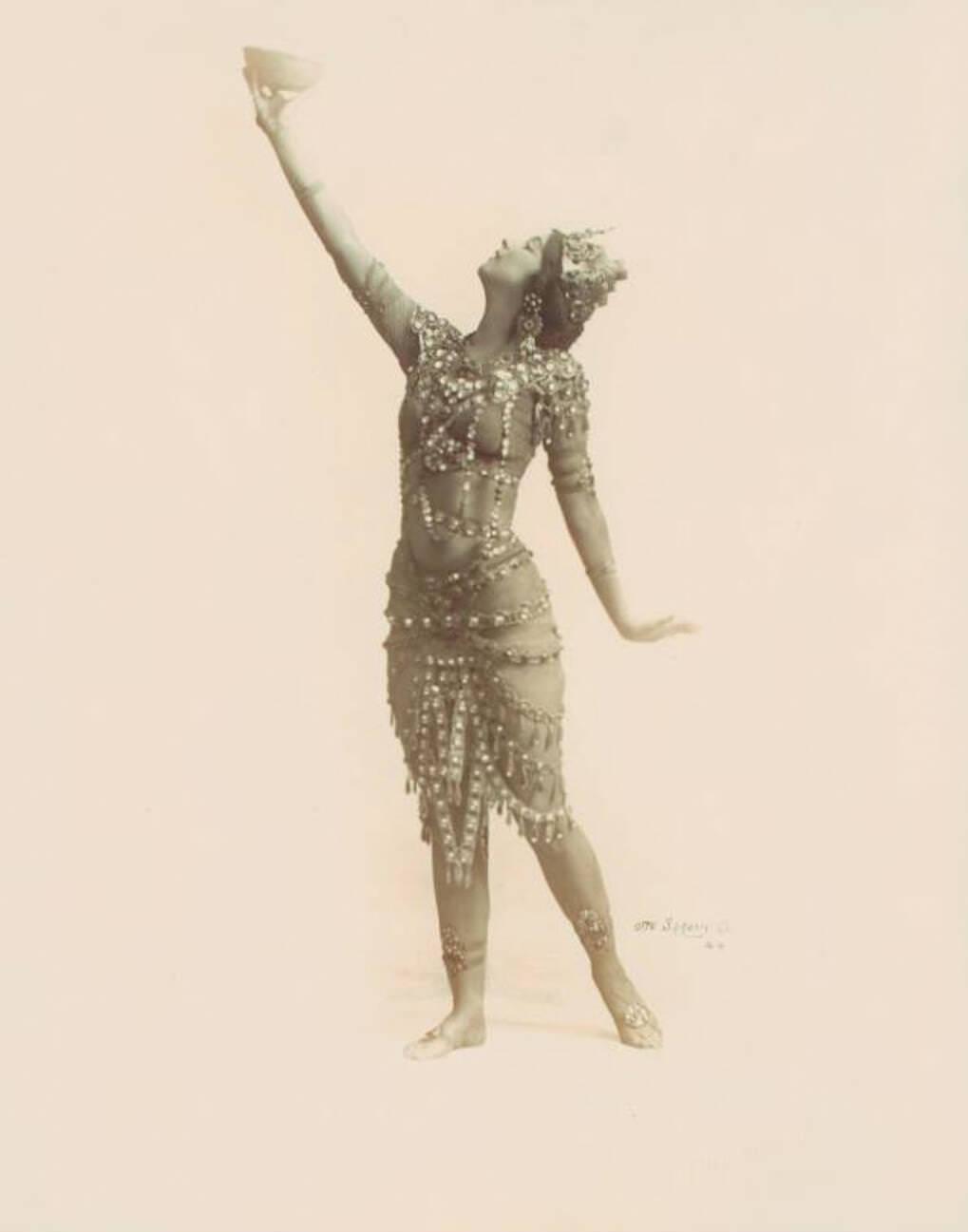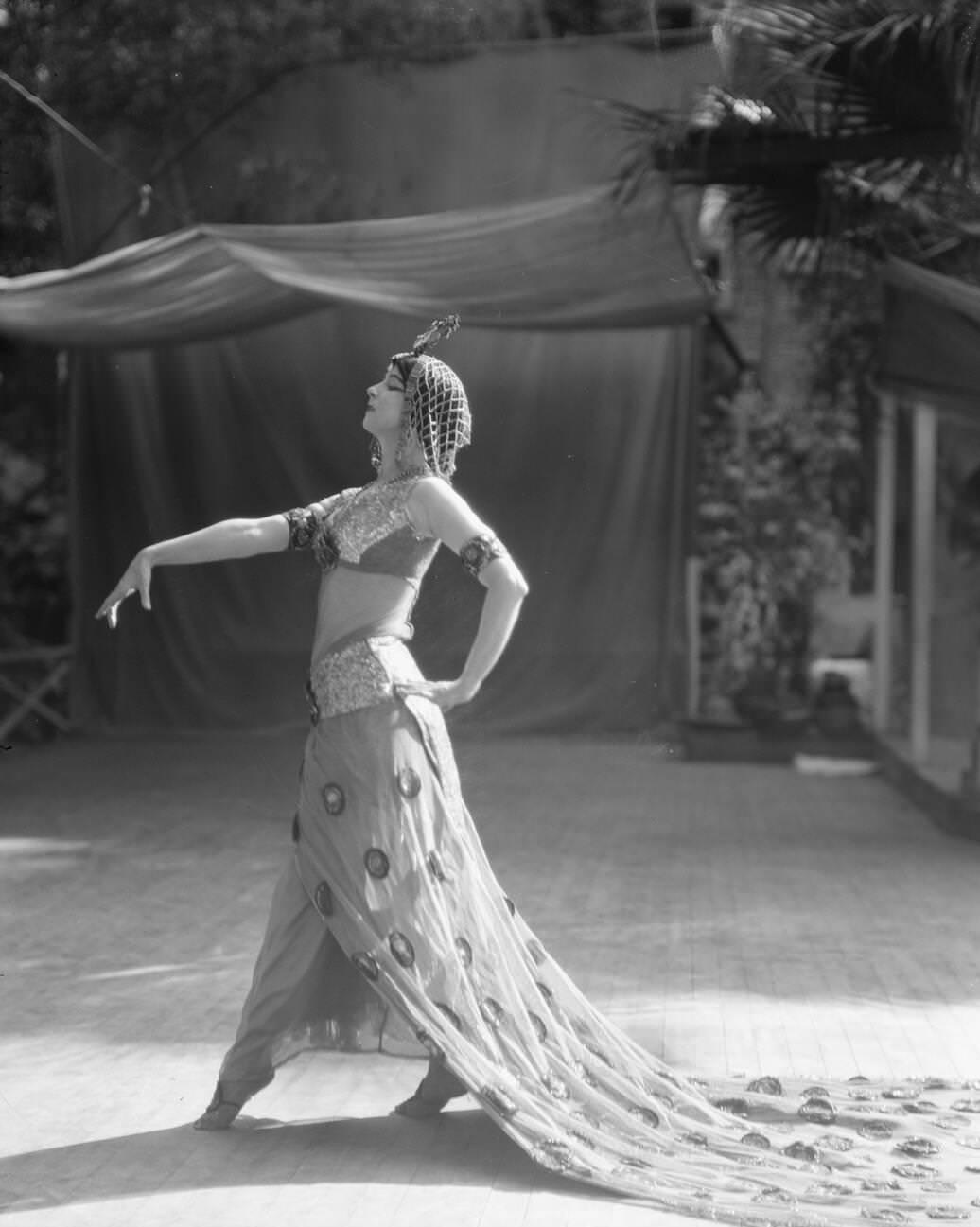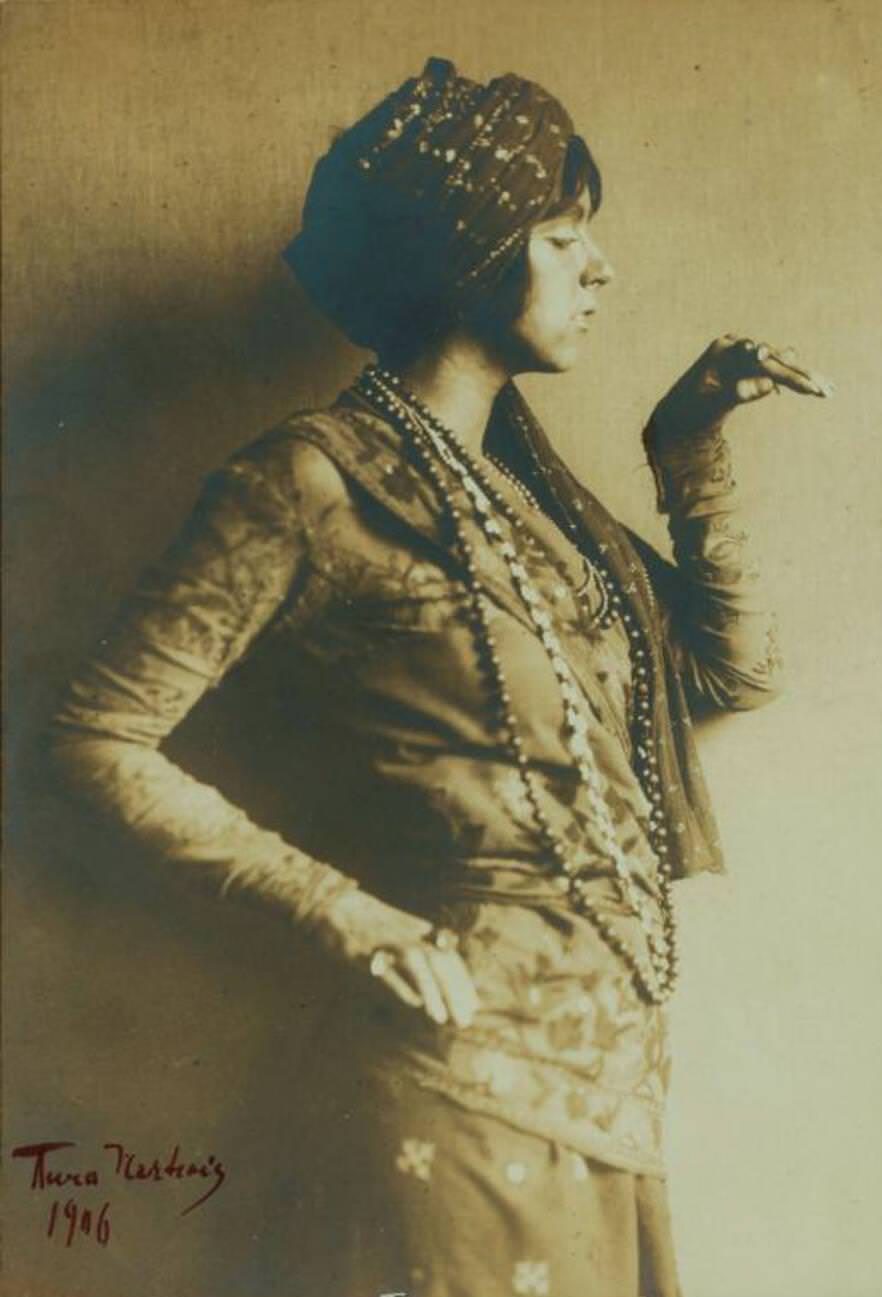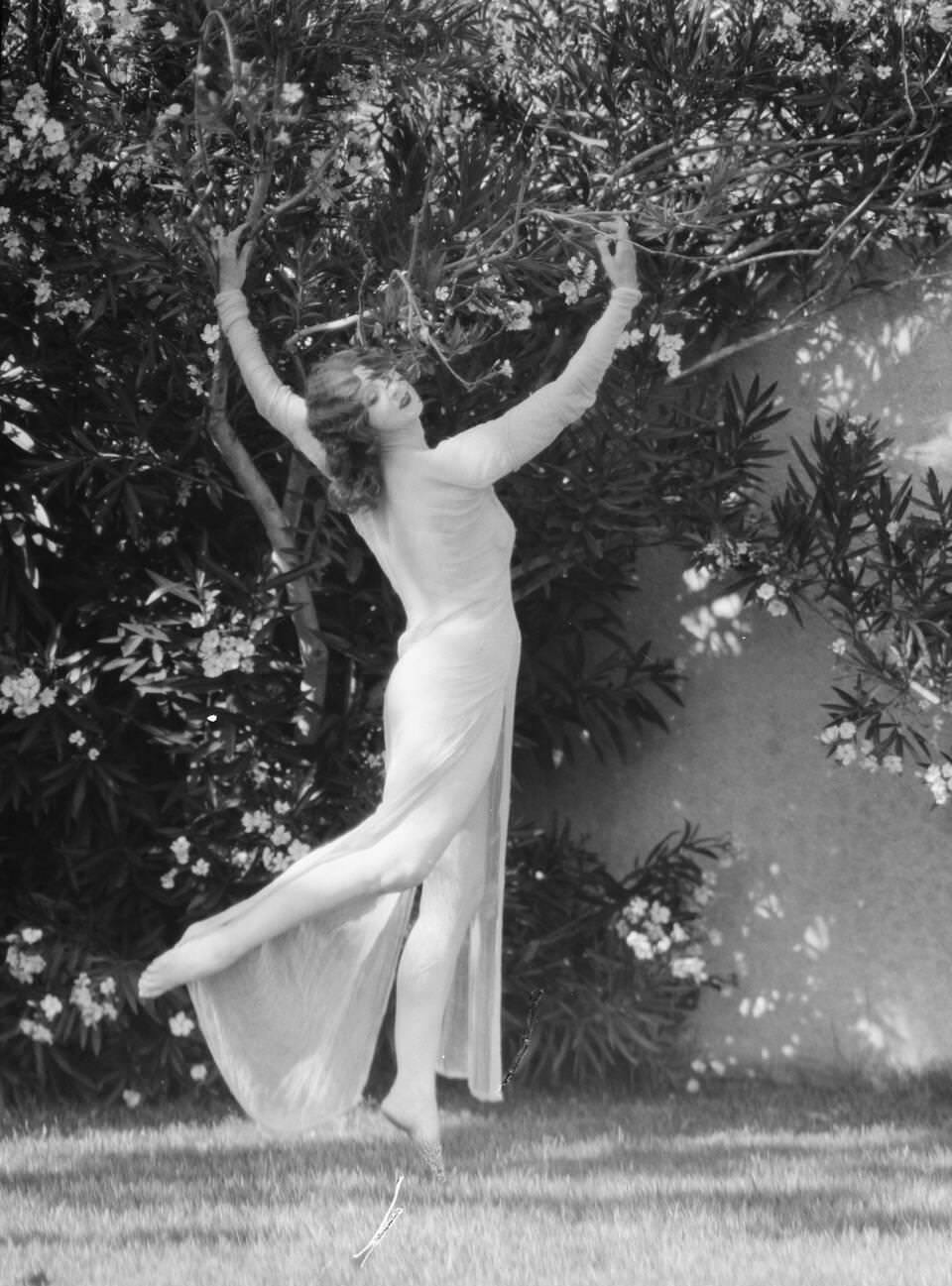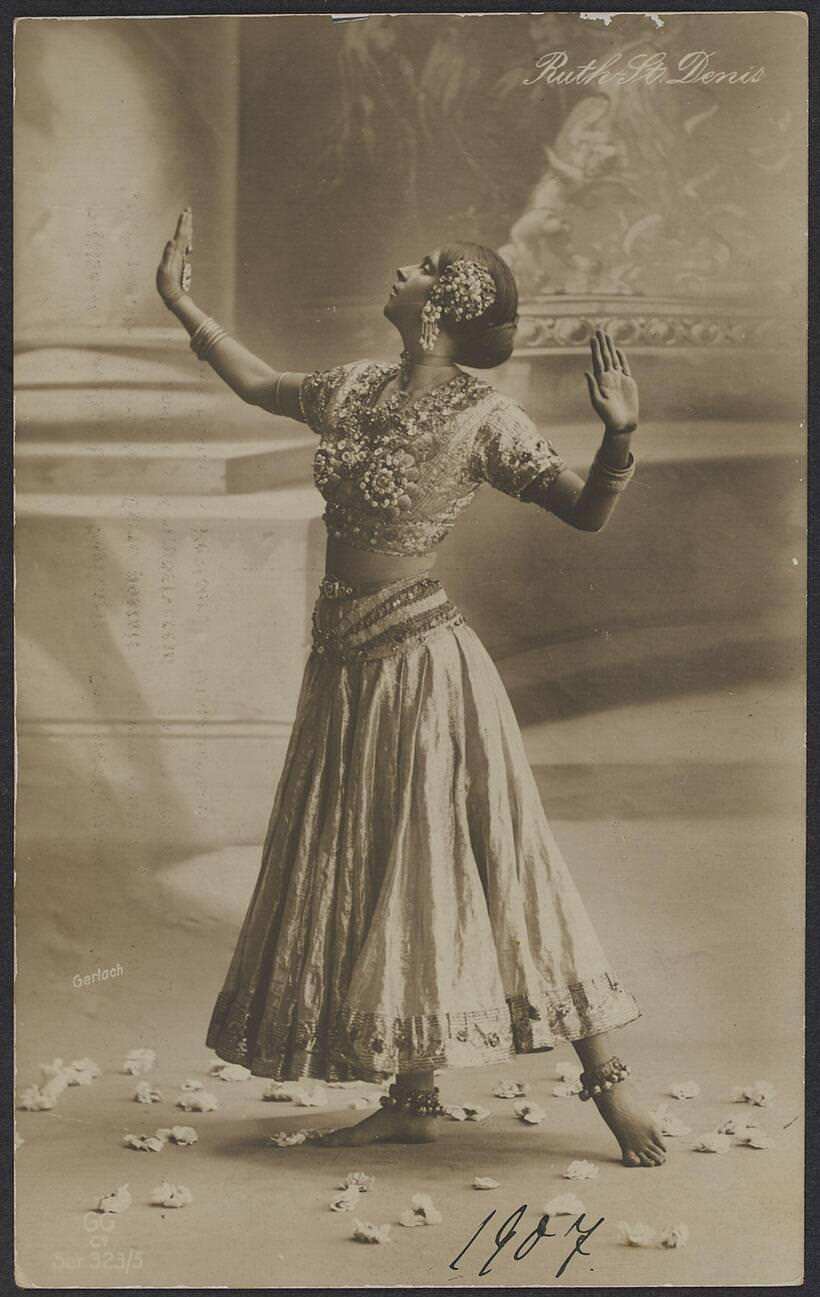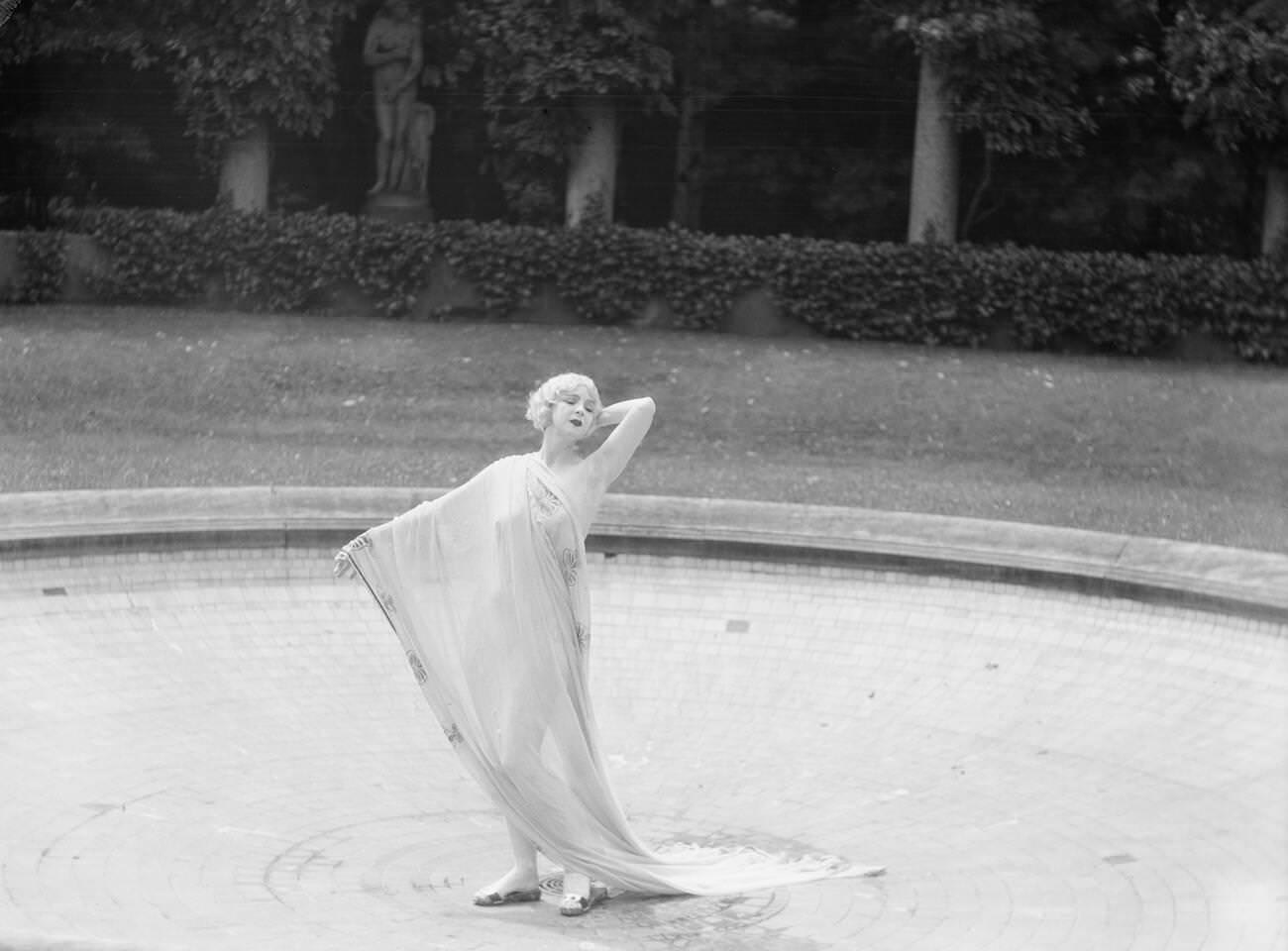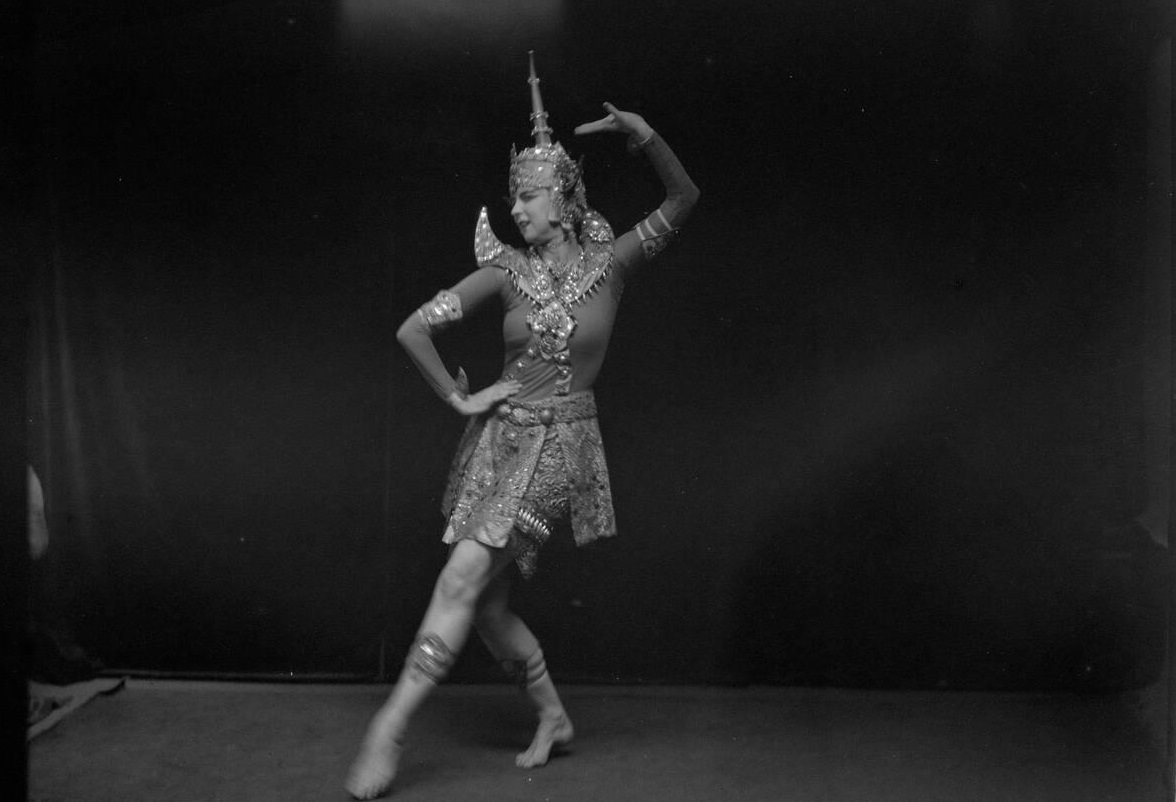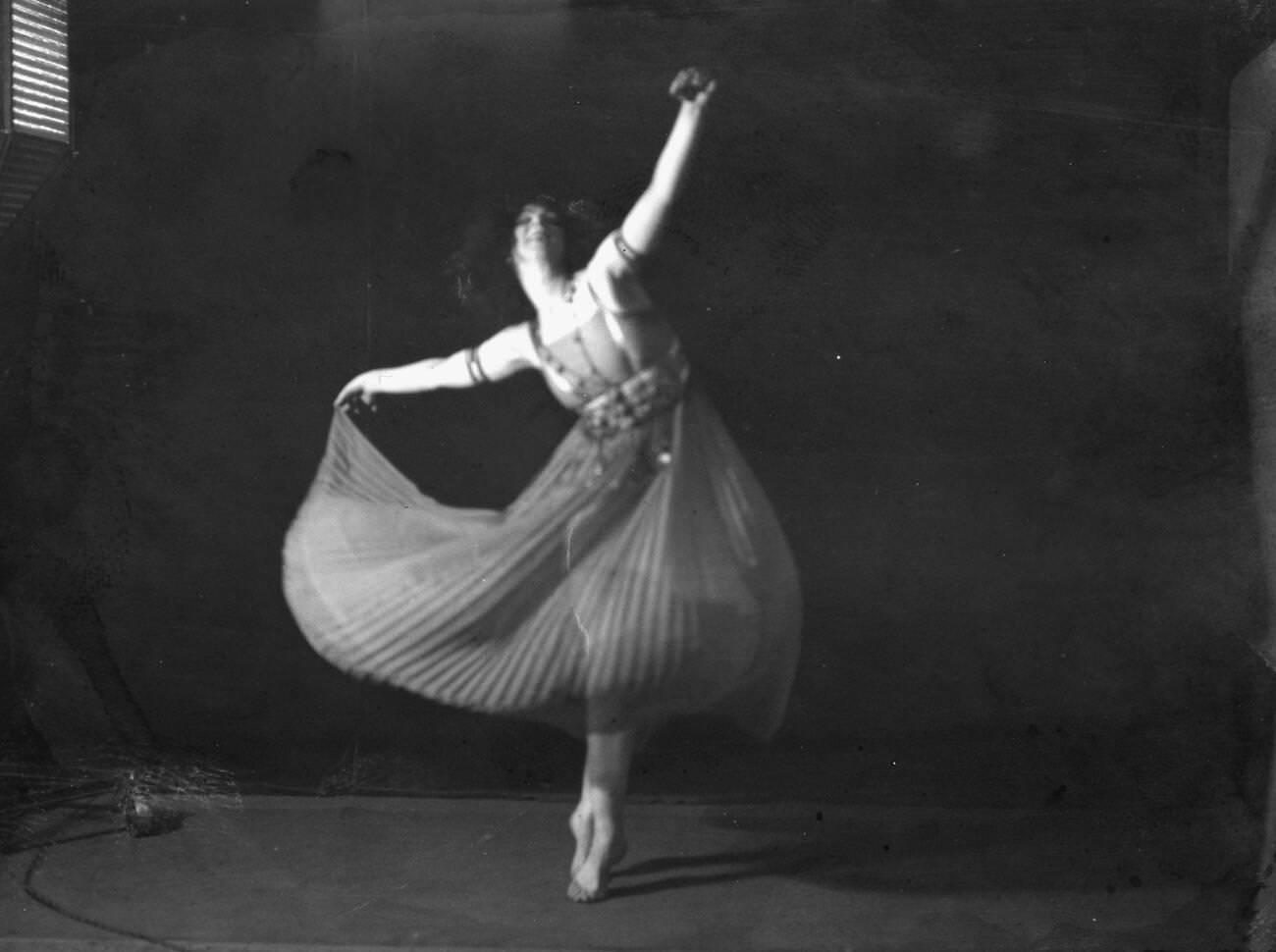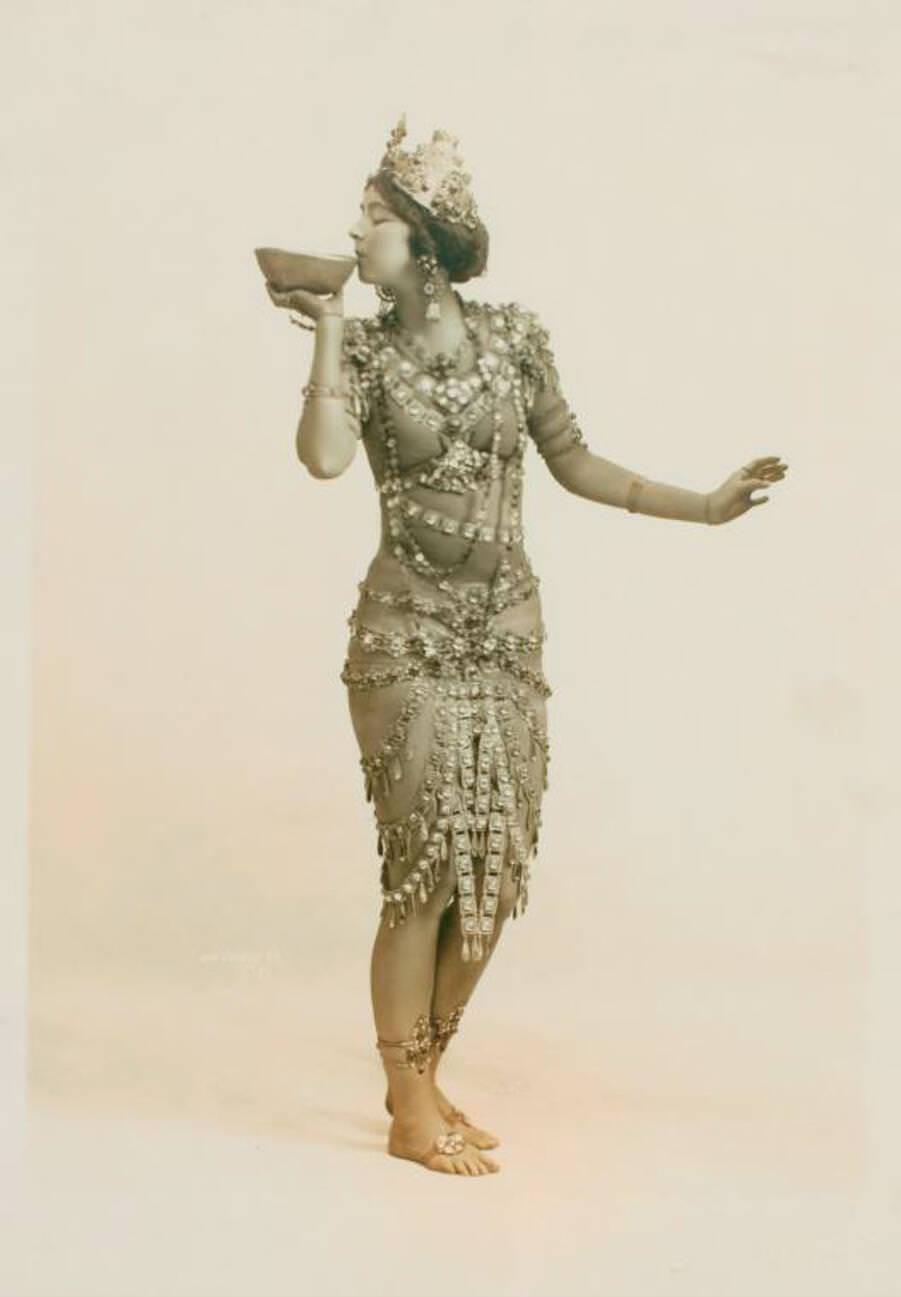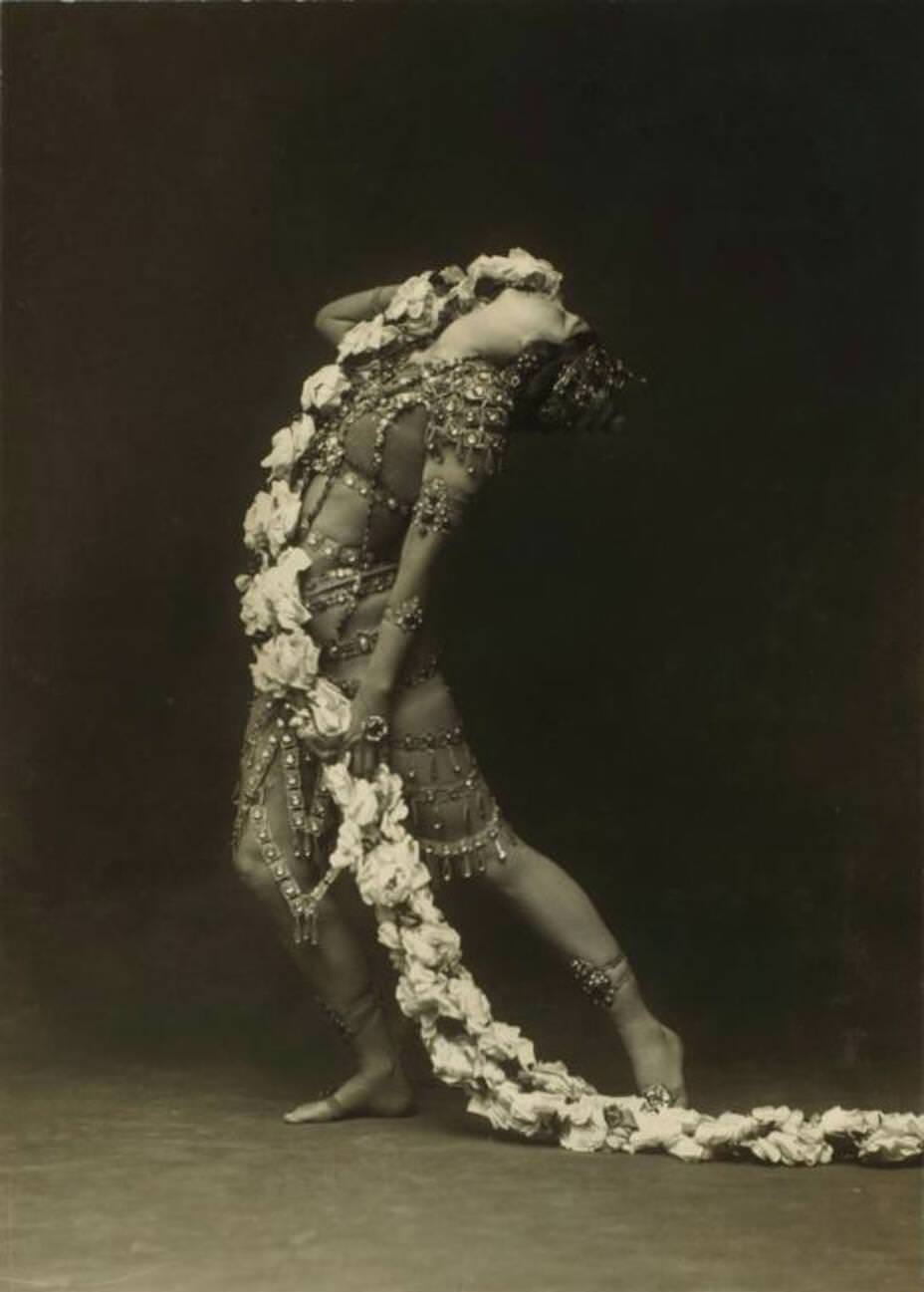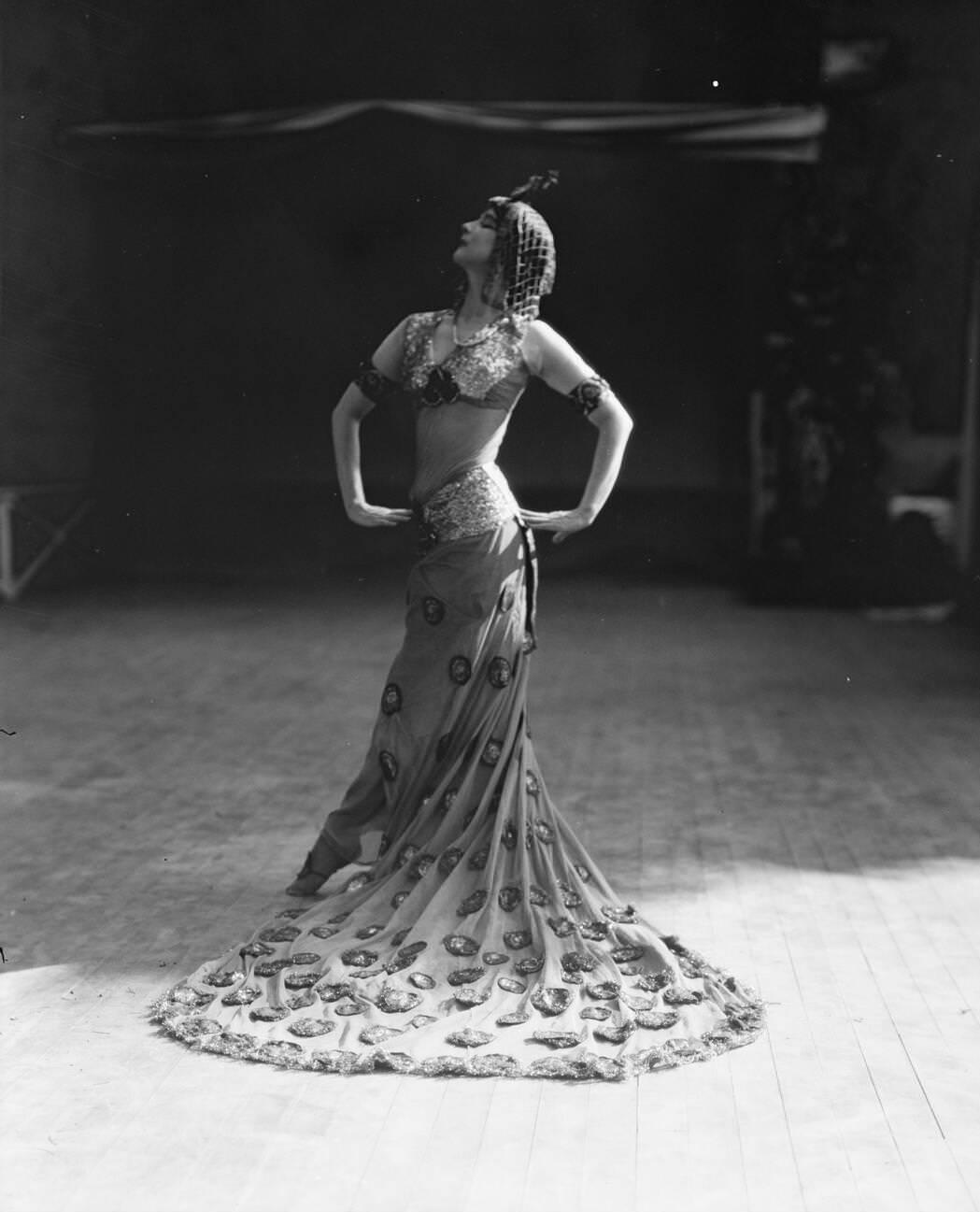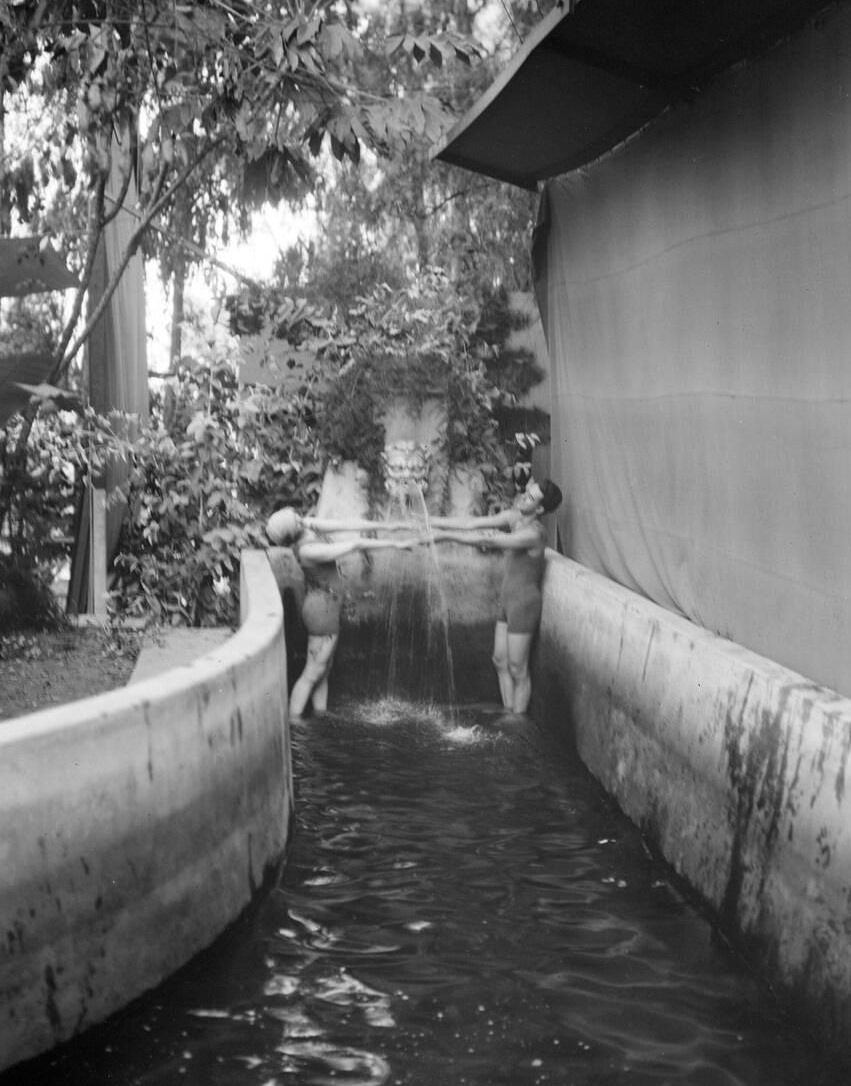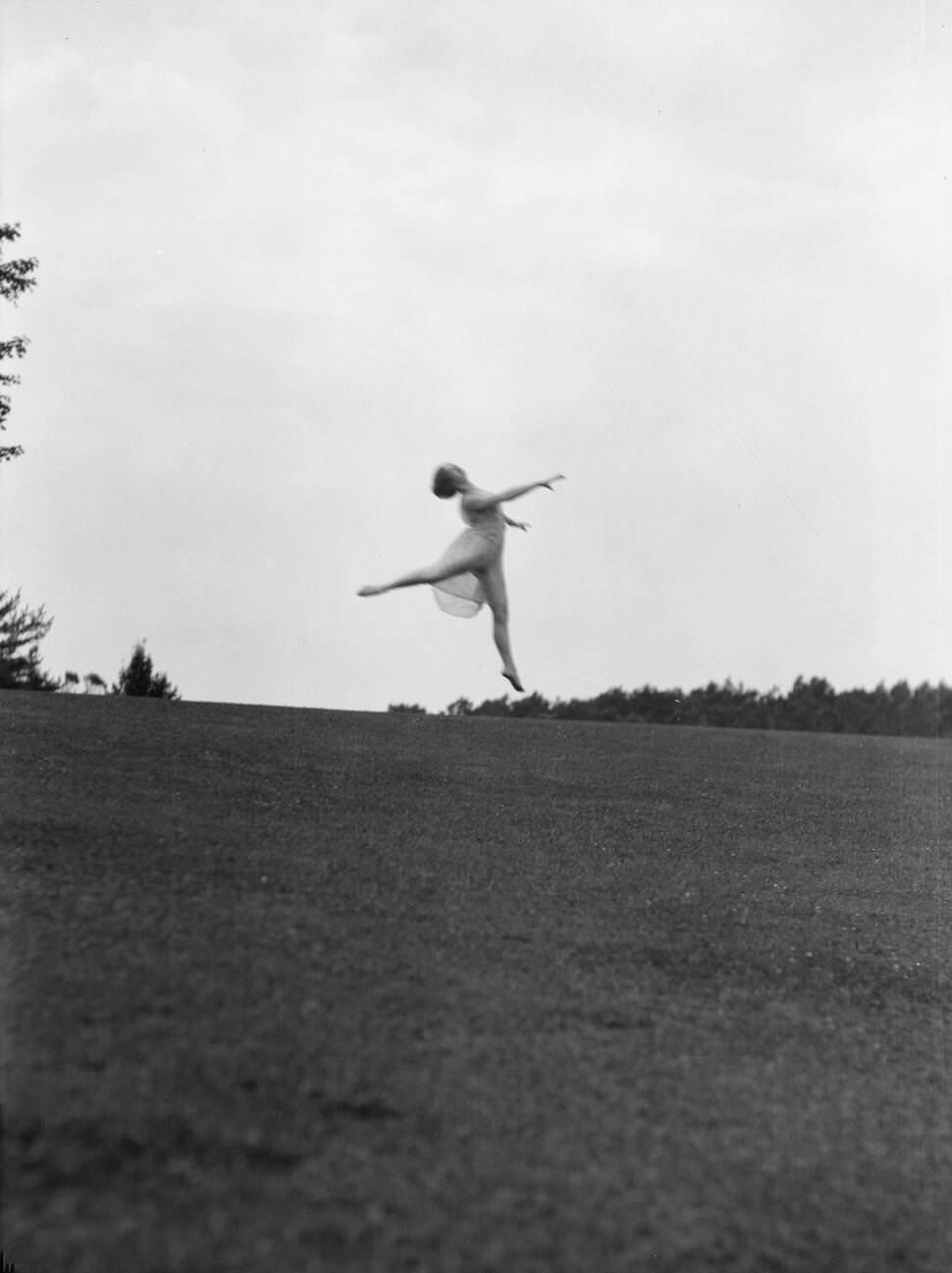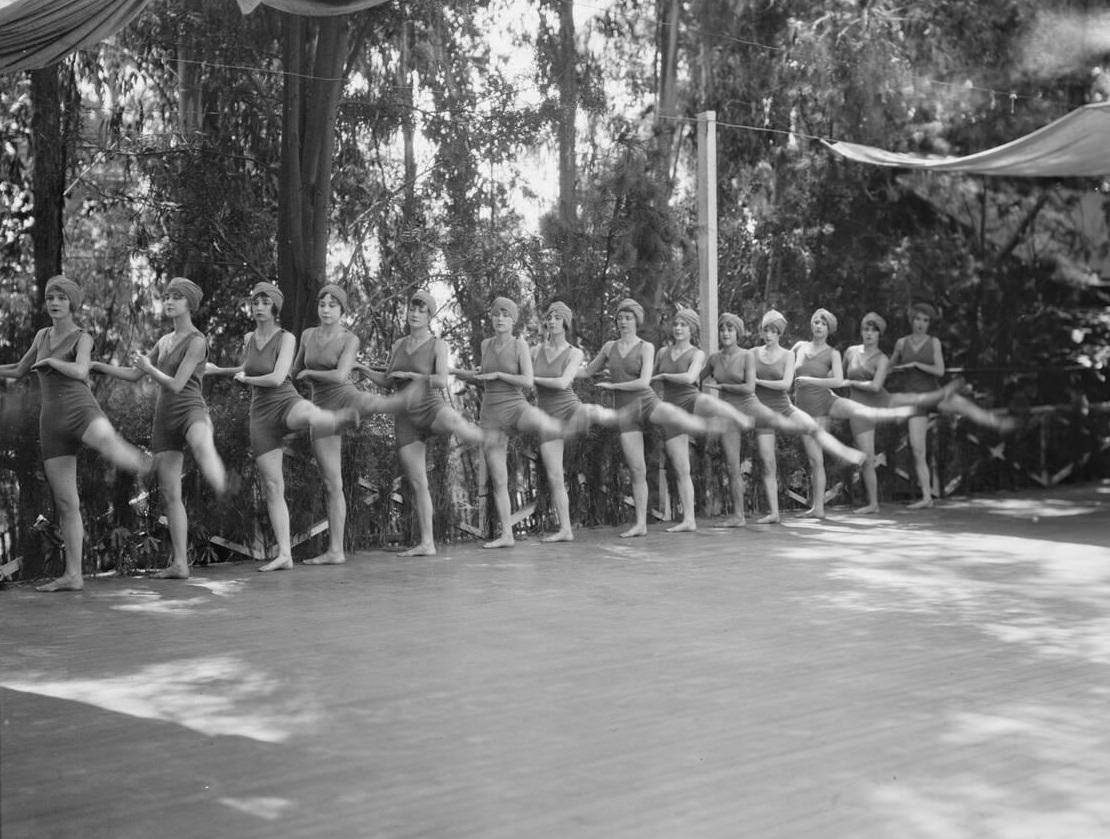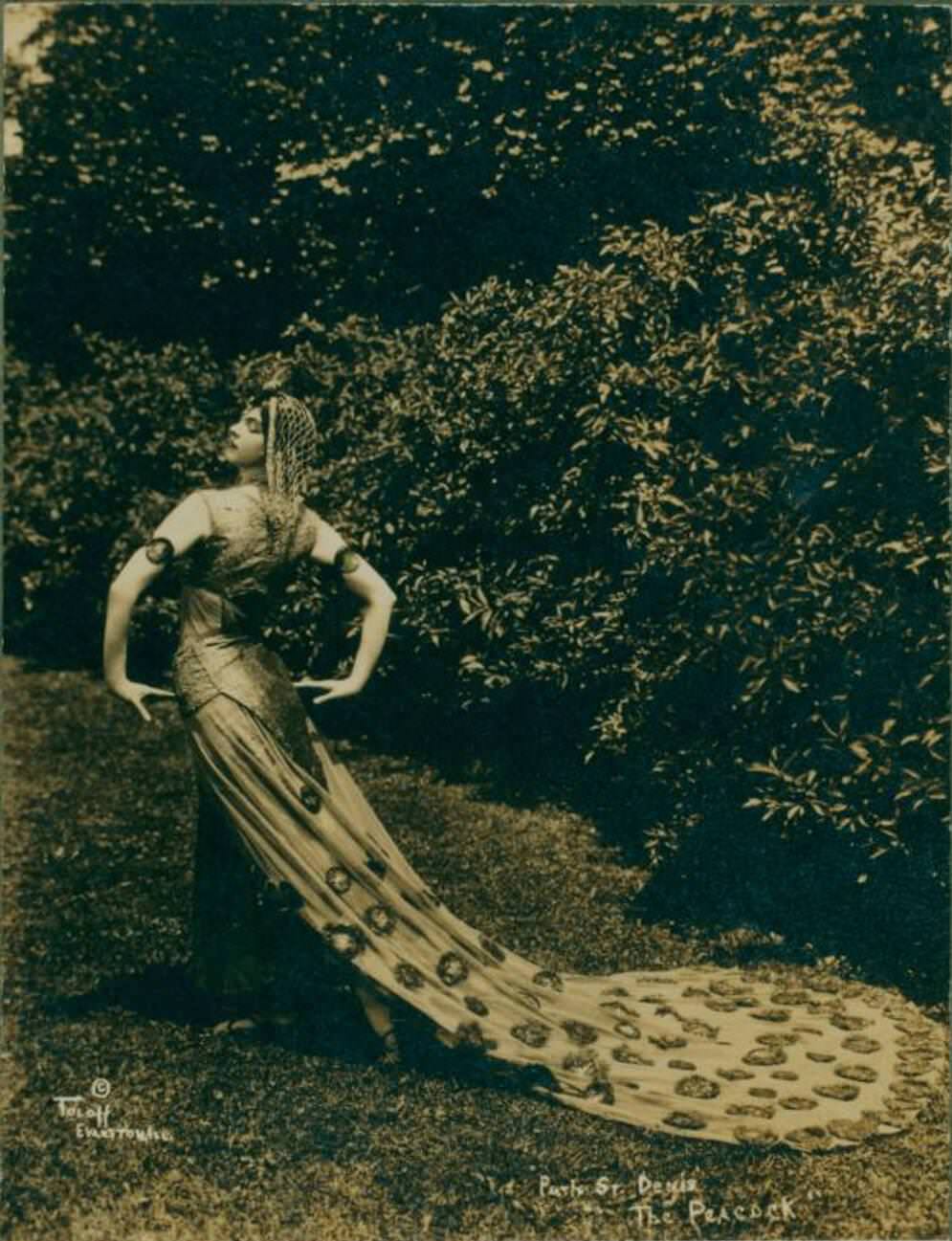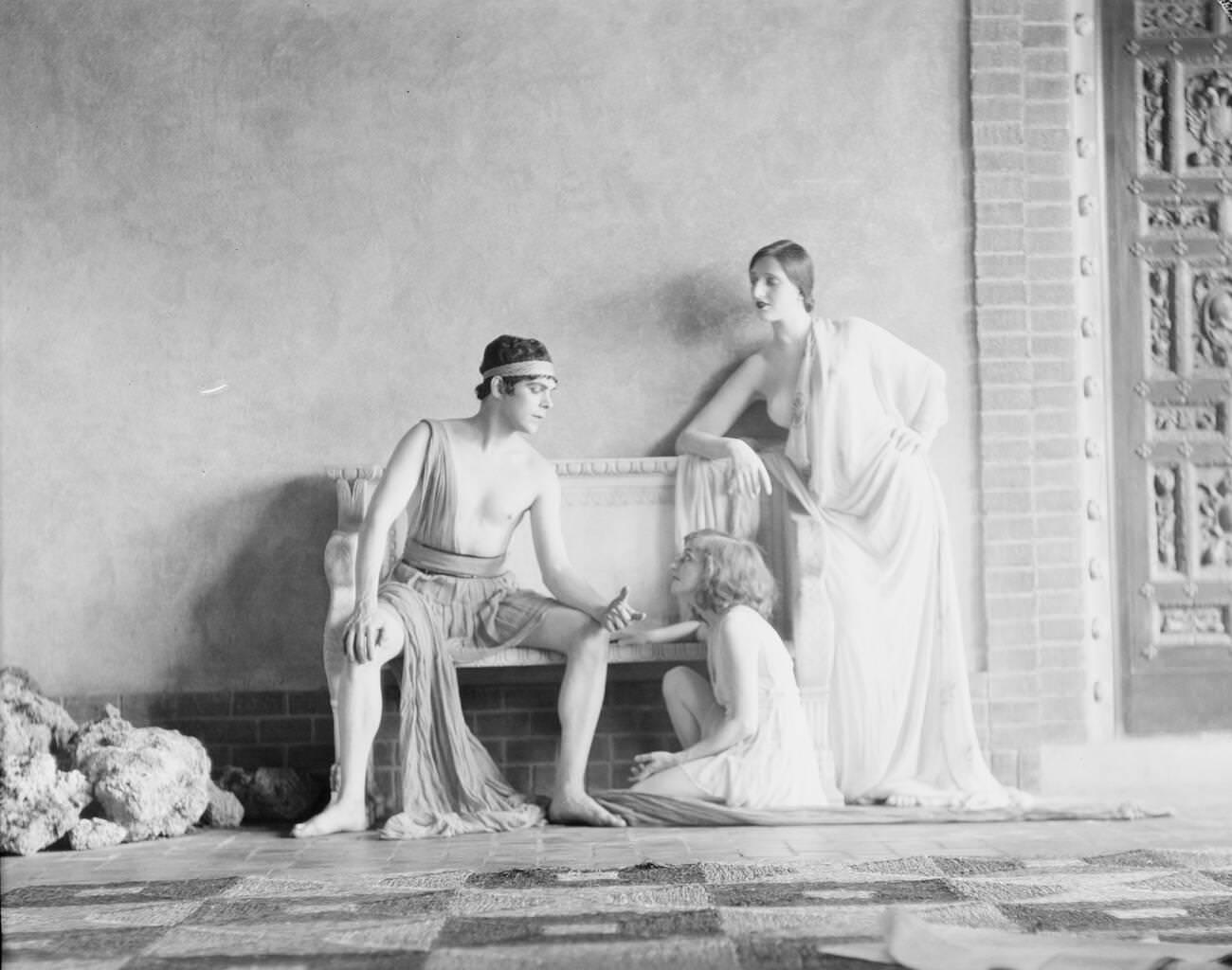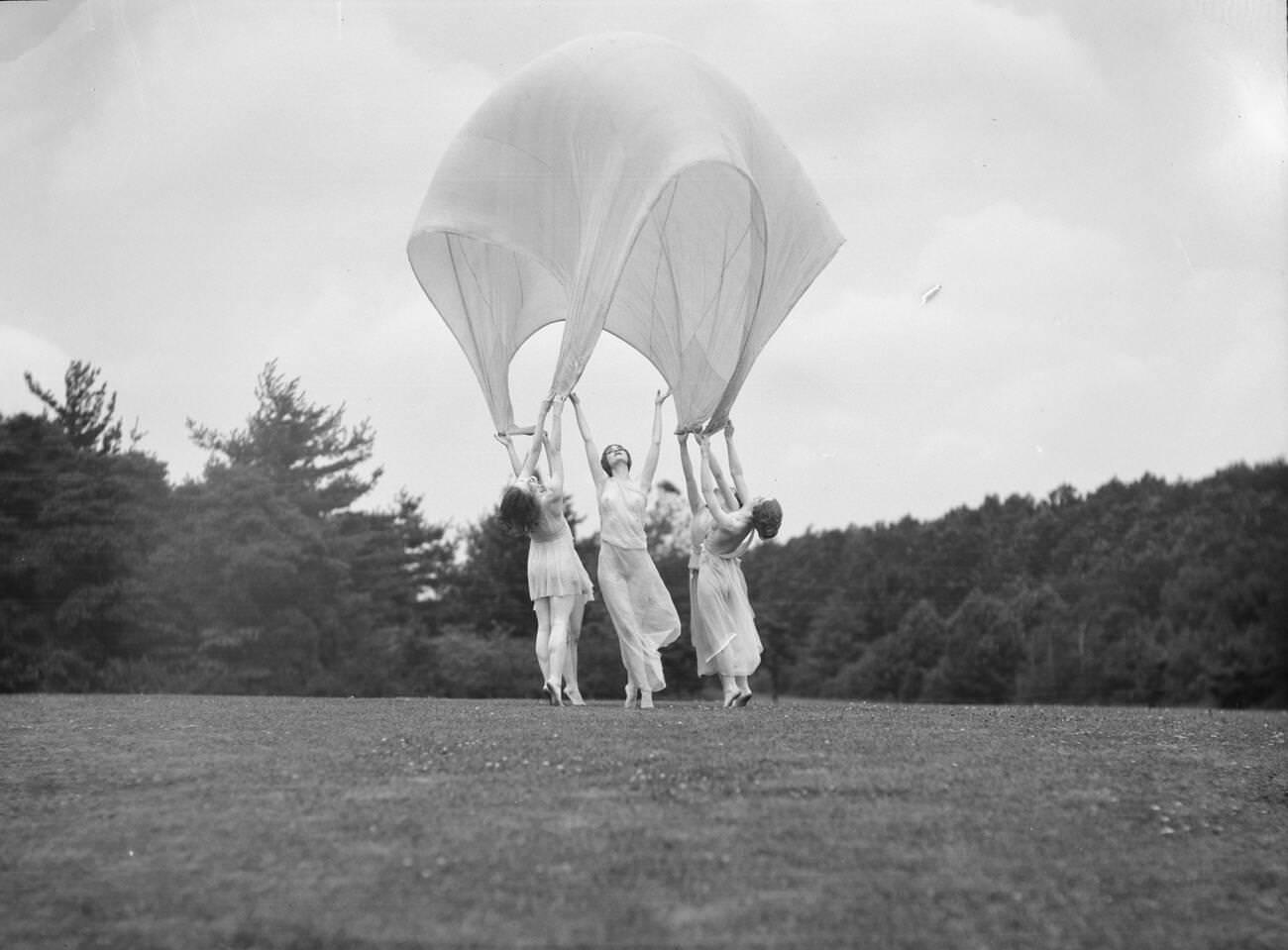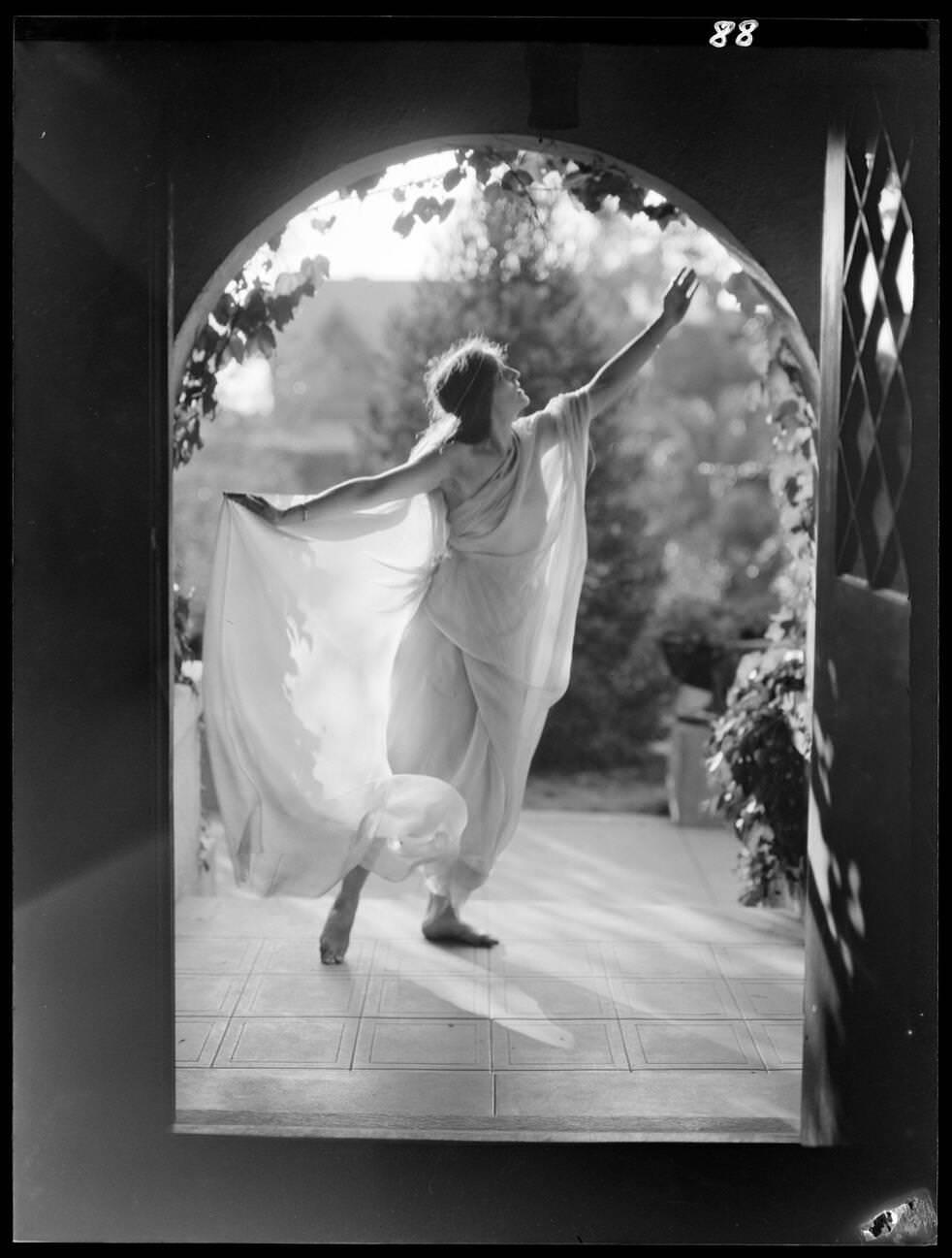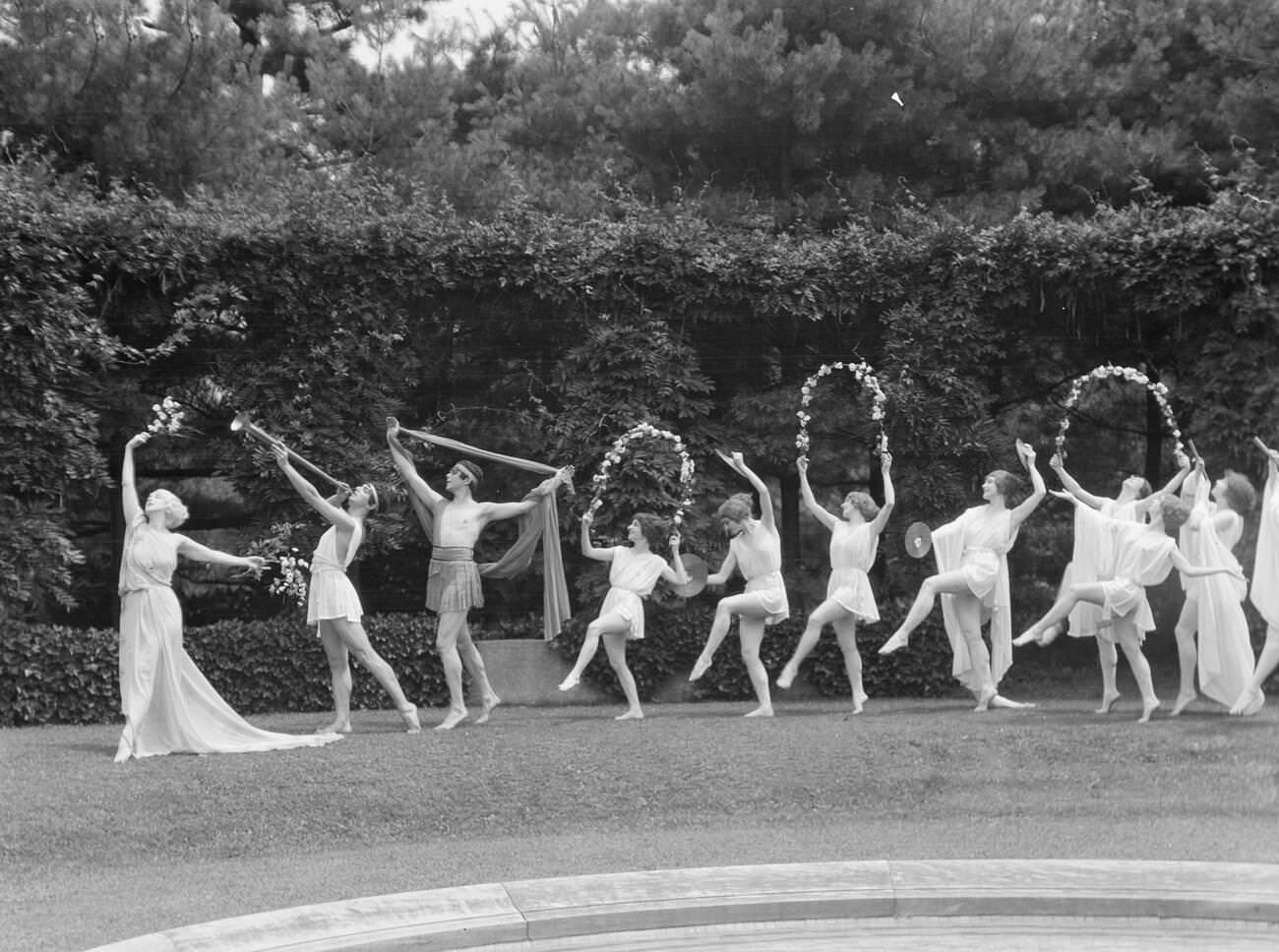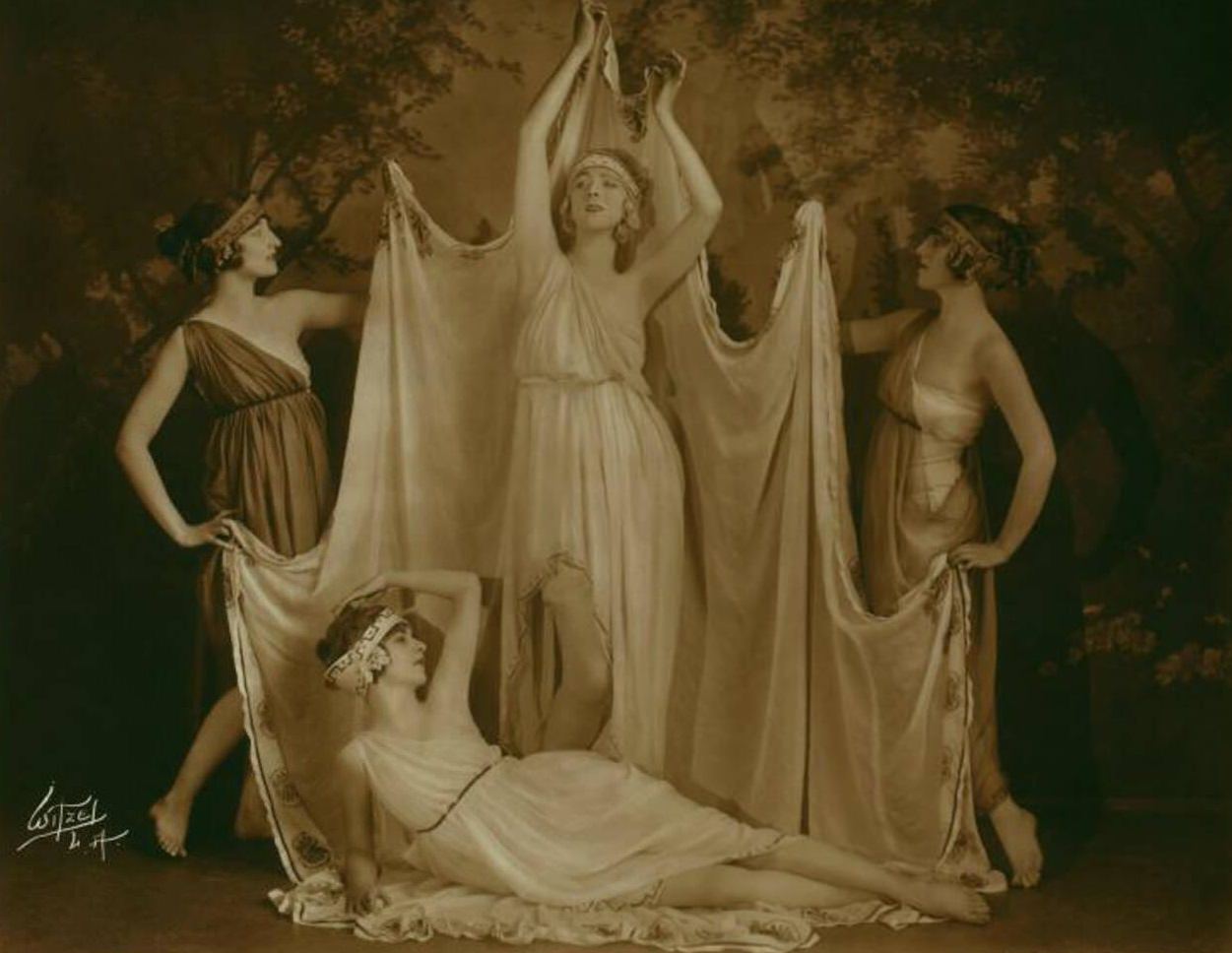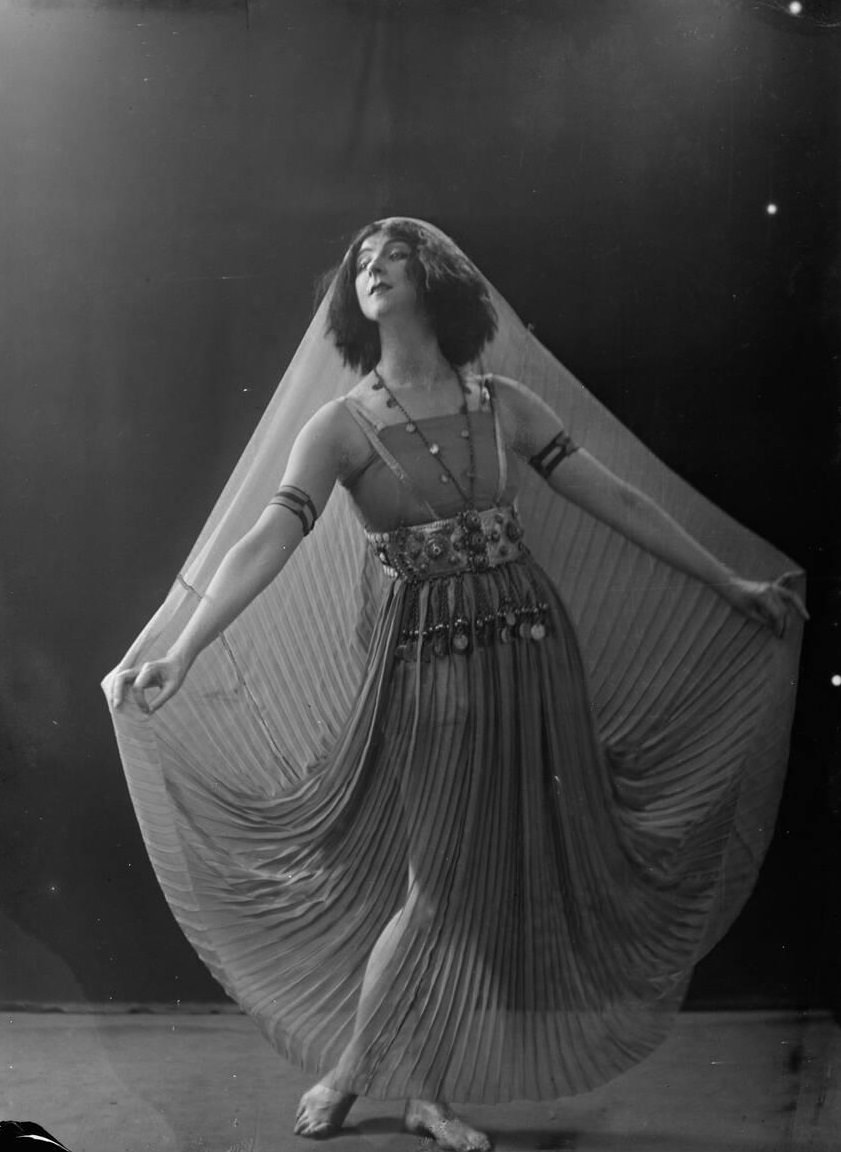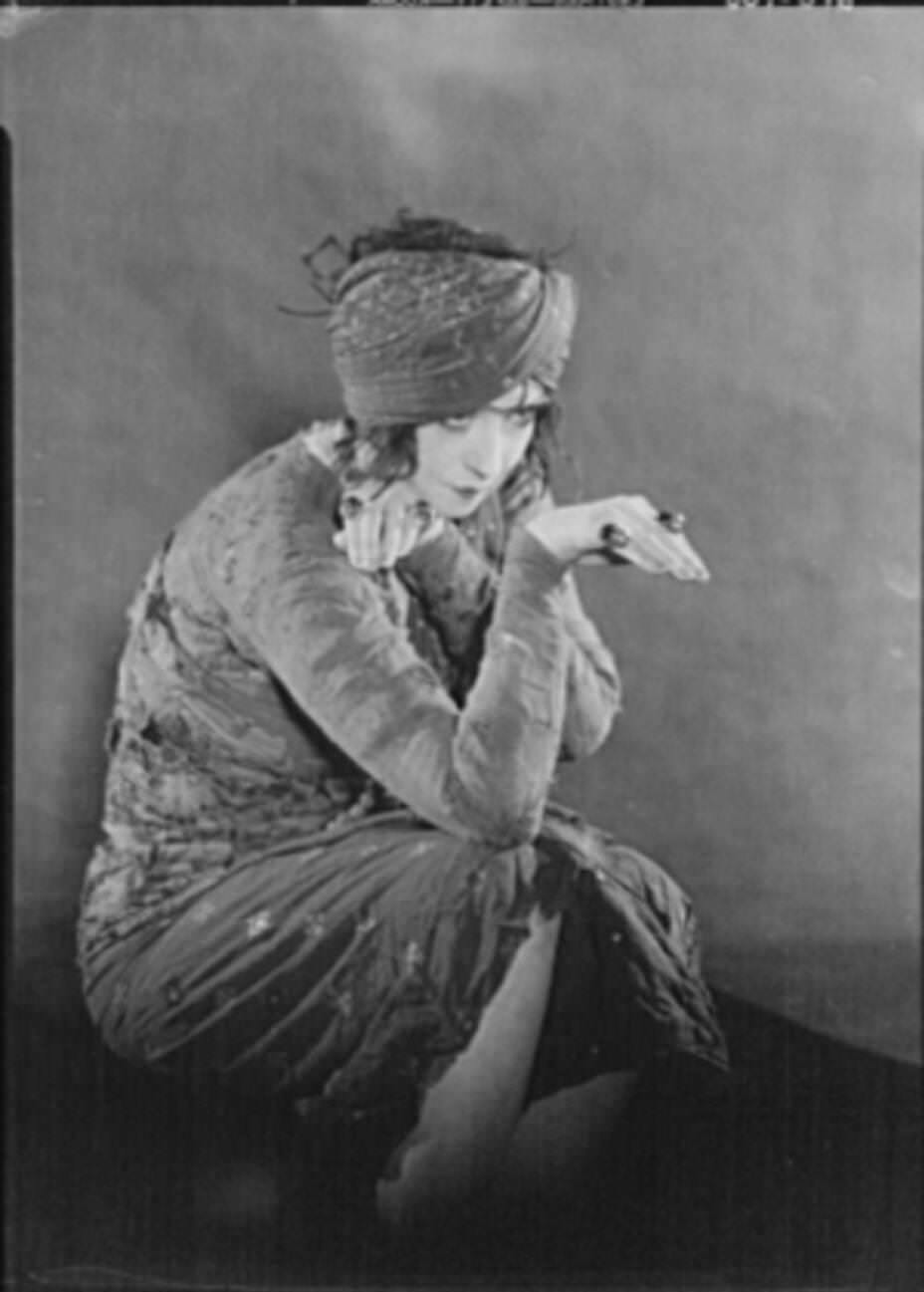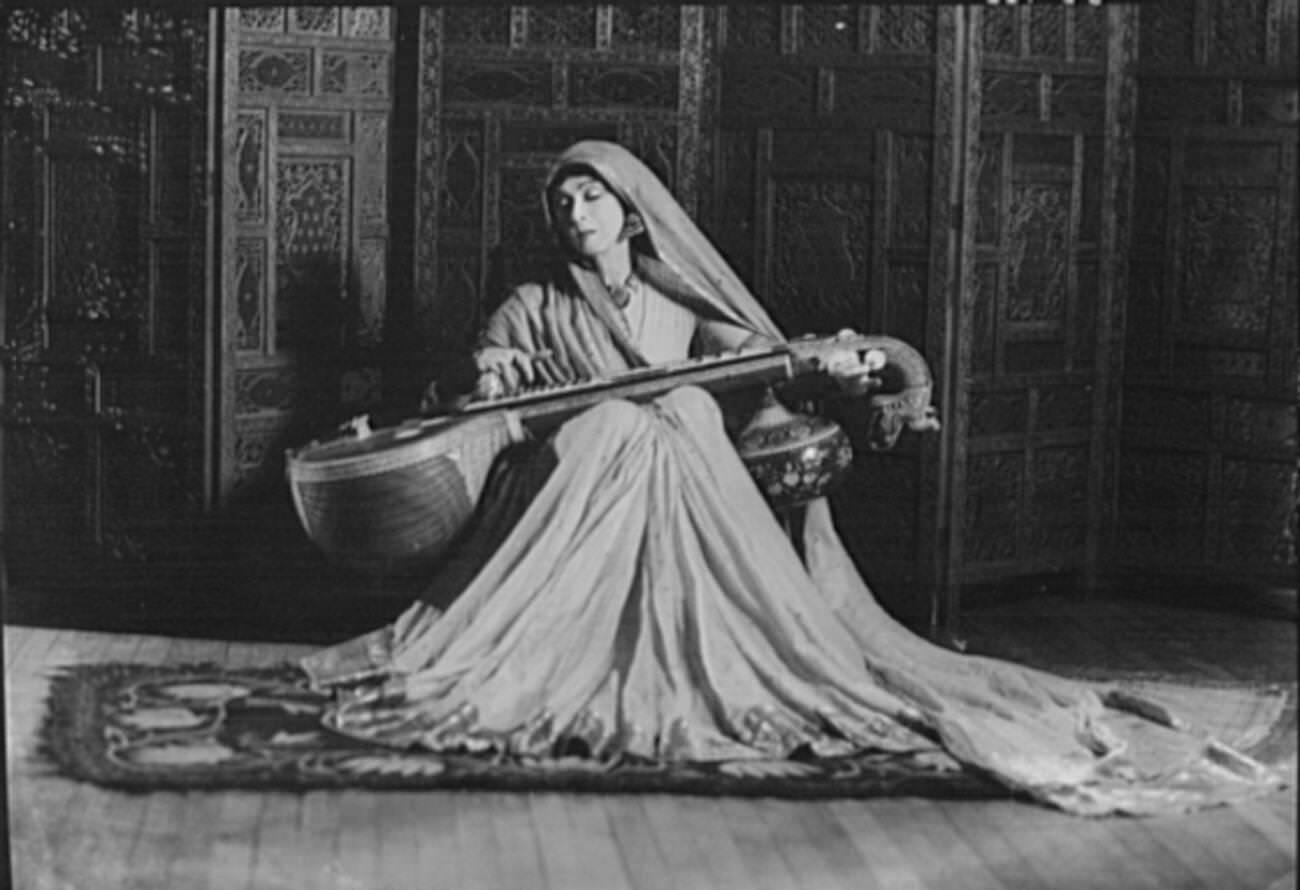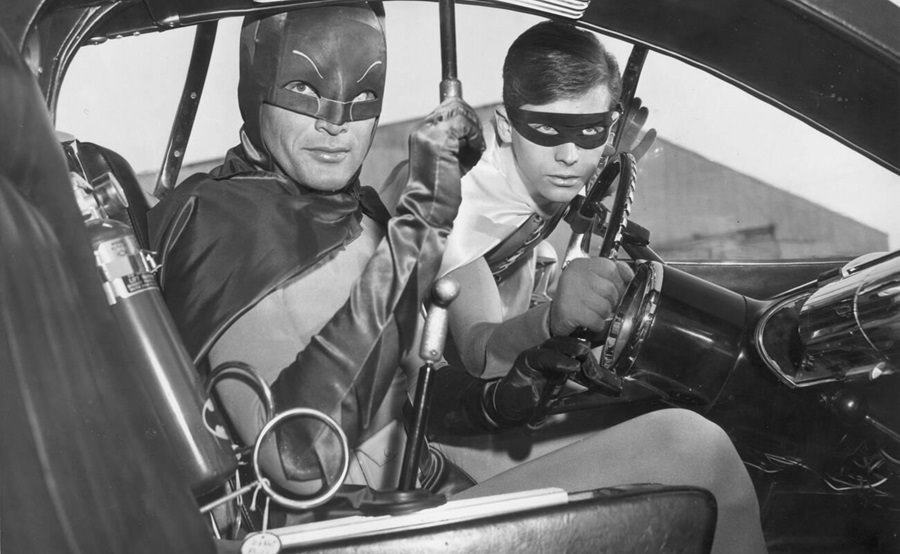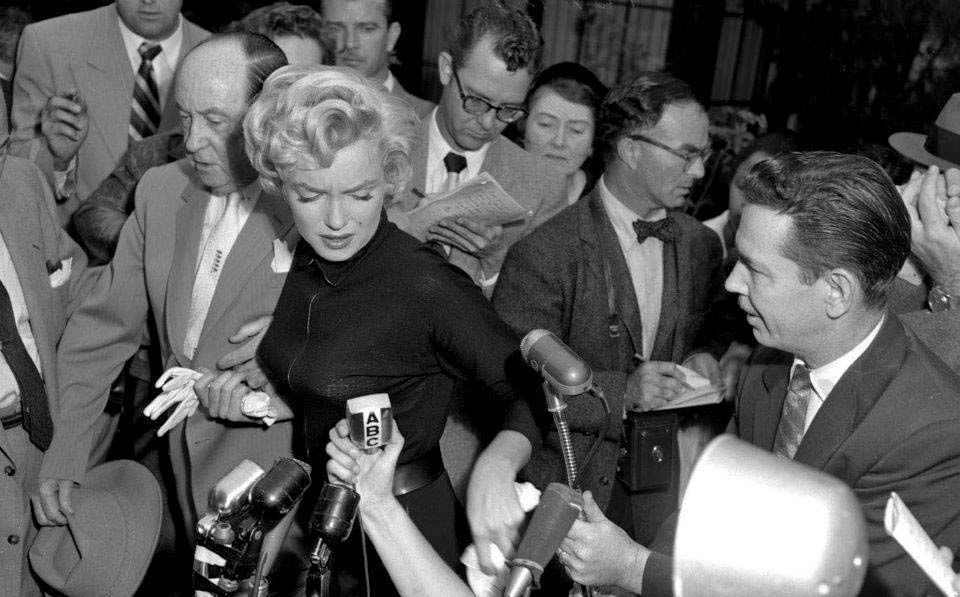Ruth St. Denis was one of the most influential dancers of the early 20th century, known for her unique style and groundbreaking approach to modern dance. Born as Ruth Dennis on January 20, 1879, in Newark, New Jersey, she grew up in a creative household that encouraged her artistic expression. Her mother was particularly influential, introducing her to various forms of art, culture, and physical exercise, including dance and physical culture, a movement focused on improving health through movement. This early exposure to physicality would play a large role in Ruth’s future.
As a young girl, Ruth was captivated by the world of performing arts. She began her formal dance training in New York City, where she studied ballet and skirt dancing. However, it was clear early on that Ruth was not destined to follow the traditional path of a ballerina. She was deeply fascinated by non-Western cultures and religions, which would soon shape her unique approach to dance.
In the late 1890s, Ruth got her first break in the entertainment world when she was hired to perform in vaudeville shows. Vaudeville was a form of variety entertainment that featured a mix of specialty acts, including dancers, singers, and comedians. While Ruth was performing as a chorus girl in one of these productions, she became inspired by a cigarette poster depicting the Egyptian goddess Isis. This moment was a turning point in her career. She realized that she wanted to create dances that expressed not just physical movement but also spiritual ideas and cultural stories.
Read more
Ruth St. Denis began studying Eastern cultures and religions, including Hinduism, Buddhism, and ancient Egyptian beliefs. She immersed herself in the philosophies and aesthetics of these cultures, and soon, she started developing dances that reflected their spiritual elements. In 1906, she debuted her first major solo work, *Radha*, a dance inspired by the Hindu goddess. This performance told the story of spiritual devotion through a blend of Indian hand gestures, flowing movements, and expressive facial expressions. The dance was unlike anything audiences had seen before, combining theatricality with a deep sense of spirituality. It was an instant success and marked the beginning of Ruth’s rise to fame.
After the success of *Radha*, Ruth continued to explore themes from Eastern cultures in her dance works. She created *The Incense*, which was based on Hindu rituals, and *The Cobras*, which reflected the mystical and symbolic nature of the serpent in various traditions. These dances were not just about physical movement; they were performances designed to transport the audience into a different world, filled with ancient wisdom and spiritual beauty.
Ruth’s performances stood out because they were highly visual. She often used elaborate costumes, rich in color and detail, to enhance her storytelling. Her sets were equally striking, designed to evoke temples, palaces, or other exotic locations. This focus on the visual elements of dance set Ruth apart from many of her contemporaries, who were more focused on the technical aspects of ballet and traditional Western dance forms.
By the 1910s, Ruth St. Denis was a well-known figure in the dance world, but her career reached new heights when she partnered with Ted Shawn, a dancer and choreographer who shared her passion for creating dance that went beyond mere entertainment. In 1914, Ruth and Ted founded the Denishawn School of Dance in Los Angeles. The school quickly became one of the most influential dance institutions in the United States, attracting students who were eager to learn this new approach to dance that blended physical movement with spiritual expression.
At Denishawn, Ruth and Ted taught a wide variety of dance techniques, including ballet, modern dance, and ethnic dance styles. They believed that dance could be a form of personal expression, a way to communicate deeper emotions and ideas. Many of the students who studied at Denishawn went on to become major figures in the dance world, including Martha Graham, who is often considered the mother of modern dance in America.
Ruth St. Denis’s teaching style was deeply rooted in her belief that dance was not just about mastering physical techniques but also about connecting with something greater. She encouraged her students to explore their own creativity and spirituality through movement. Her classes were often accompanied by lectures on philosophy, art, and religion, further emphasizing the intellectual and emotional aspects of dance.
Throughout her career, Ruth continued to explore new ideas and push the boundaries of what dance could be. She was known for her improvisational performances, where she would create dances on the spot, drawing inspiration from her surroundings or the music being played. This ability to improvise and create in the moment was one of her many talents and made her performances feel alive and spontaneous.
One of the key elements of Ruth’s dance style was her use of gesture. She believed that even the smallest movement of the hands or eyes could convey a deep emotional or spiritual message. In many of her dances, she used hand gestures and facial expressions to tell the story, with the larger movements of the body serving as a complement to these more subtle expressions. This focus on gesture was heavily influenced by her study of Eastern dance forms, where small, controlled movements are often used to convey complex ideas and emotions.
In addition to her solo work and teaching, Ruth also performed in a number of collaborations with Ted Shawn and other dancers. These group performances often involved large, ensemble casts and explored themes of ritual, spirituality, and human connection. One of their most famous collaborative works was *Xochitl*, a dance based on an ancient Aztec story, which featured Ruth and Ted in the lead roles. The performance was a critical success and further solidified their reputation as pioneers of modern dance.
Despite her success, Ruth faced criticism throughout her career, particularly from those who felt that her dances were too theatrical or that they lacked the technical rigor of classical ballet. However, Ruth was never interested in conforming to traditional standards. She believed that dance should be a reflection of the soul, and she was determined to continue exploring new ideas and pushing the boundaries of what was possible in the art form.
As Ruth grew older, she began to shift her focus from performing to teaching and choreography. She continued to run the Denishawn School with Ted Shawn, although the two eventually separated professionally and personally in the early 1930s. Ruth continued to teach and perform for many years, even into her 80s, always maintaining her belief in the power of dance as a form of spiritual expression.


